

16 Top-Rated Tourist Attractions in Australia
Written by Karen Hastings Updated Jul 22, 2023
Australia is a land of dreams. According to Aboriginal legend, in the Dreamtime, the great spirits created its thriving coral reefs, luxuriant rainforests, and red-earthed deserts. Today, these spectacular ecosystems host some of the quirkiest wildlife on the planet and lure nature lovers and adventure seekers from around the globe.
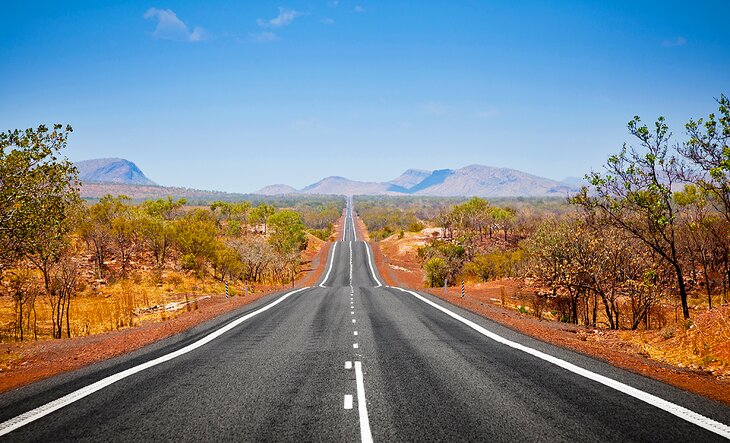
Australia is also a land of staggering contrasts and spectacular beauty. Along the coast, you can explore vibrant cities, vast sand islands, and one of the planet's most awe-inspiring natural wonders: the Great Barrier Reef. In the Outback, rugged national parks and remote deserts offer the ultimate travel adventures rich with Indigenous history.
Top it all off with a laid-back feel and friendly people, and it's no wonder Australia scores top billing on bucket lists around the world. Bring your travel dreams to life and plan the best places to visit with this list of the top attractions in Australia.
1. Sydney Opera House, New South Wales
2. great barrier reef marine park, queensland, 3. uluru-kata tjuta national park, northern territory, 4. sydney harbour bridge, new south wales, 5. blue mountains national park, new south wales, 6. melbourne's culture, victoria, 7. bondi beach, new south wales, 8. daintree national park, queensland, 9. k'gari (fraser island), queensland, 10. kakadu national park, northern territory, 11. great ocean road, victoria, 12. broome, western australia, 13. kangaroo island, south australia, 14. cradle mountain-lake st. clair national park, tasmania, 15. horizontal falls & the kimberley region, 16. train trips across the outback.
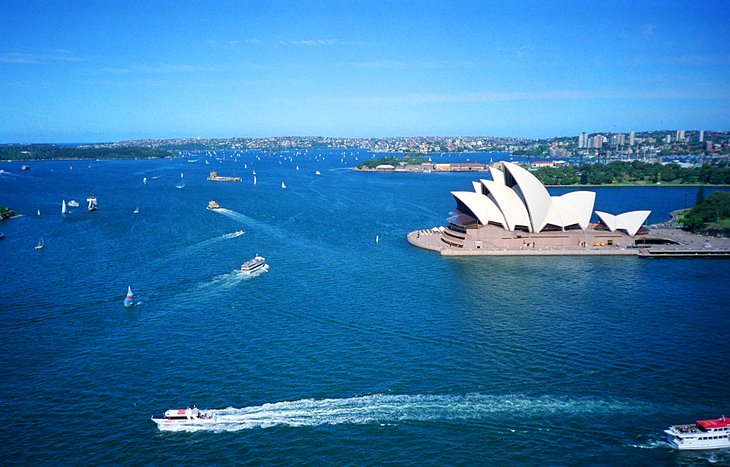
Mention "Sydney, Australia" and most people think of the Opera House. Shaped like huge shells or billowing sails, this famous building on Sydney's Bennelong Point graces the list of UNESCO World Heritage Sites and is one of the world's great architectural icons.
The location is stunning. Water surrounds the structure on three sides, and the Royal Botanic Gardens border it to the south.
Danish architect, Jørn Utzon won an international competition for its design but withdrew from the project after technical and financing problems. Construction was finally completed in 1973 at a cost of 10 times the original budget. By this time, Utzon had left the country, never returning to see his magnificent creation.
Today, you can enjoy a performance here, dine at one of the restaurants, or see the highlights of the Sydney Opera House on a guided tour. The structure encompasses theaters, studios, a concert hall, exhibition rooms, and a cinema.
Touring the interior of the Sydney Opera House is rewarding, but its striking architecture is perhaps best appreciated from a distance. One of the best sites to photograph this top Sydney tourist attraction is Mrs Macquarie's Chair in the Royal Botanic Gardens. Better still, hop aboard a harbor cruise or ferry and capture a photo from the water as you glide past.
In 2023, the Sydney Opera House is celebrating its 50th anniversary with a packed calendar of special events. During your visit, be sure to check out the newly renovated Concert Hall, part of an almost $300-million "Decade of Renewal."
Author's Tips: If you're visiting Sydney in late May/early June, you can see the white sails of the opera house light up after dark at the Vivid Sydney festival each year.
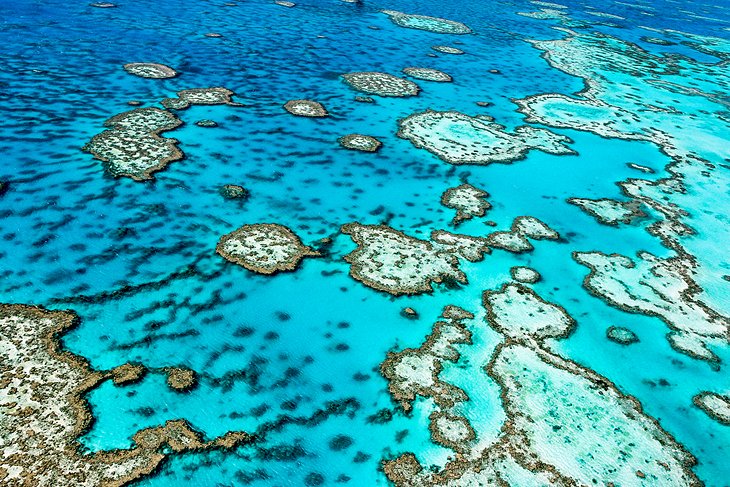
You can't leave Australia without seeing the Great Barrier Reef. This World Heritage-listed natural wonder is one of the largest living structures on the planet . It's so vast, you can see it from outer space. For divers, snorkelers, island aficionados, and nature lovers, it's a bucket list destination .
In 1975, the Great Barrier Reef Marine Park was established to protect its fragile ecosystems. These include more than 3,000 coral reefs; 600 continental islands, including the beautiful Whitsunday group ; 300 coral cays; and inshore mangrove islands.
One of the seven wonders of the natural world , the park stretches for 2,300 kilometers along the state of Queensland, on Australia's east coast (that's about the distance between Mexico and Vancouver).
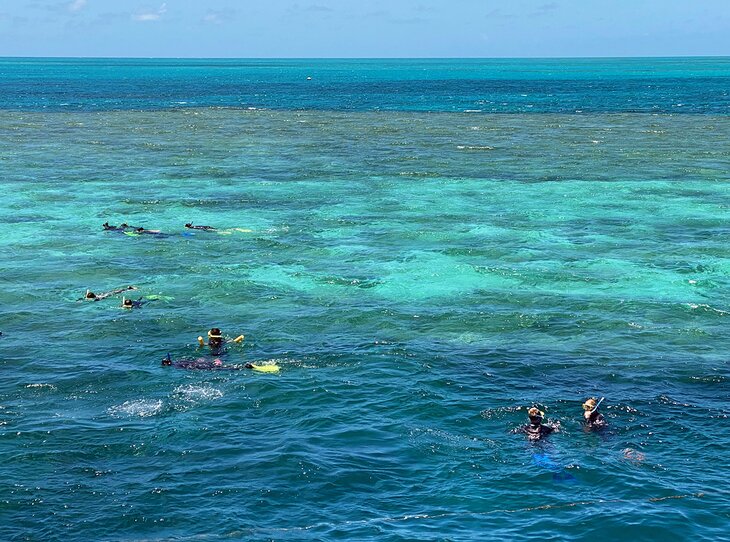
Not surprisingly, the Great Barrier Reef is one of the best places to visit in Australia for diving and snorkeling. The astounding array of marine life includes soft and hard corals, more than 1,600 species of tropical fish, sharks, dugongs, dolphins, turtles, rays, and giant clams. Prefer to stay dry? You can see the reef from underwater viewing stations and glass bottom boats.
Travelers have many options for visiting the Great Barrier Reef . You can cruise around the islands, hop aboard a sightseeing flight, take day trips to the islands, or snorkel and dive the reefs. On the mainland, the main launching points for tours are Cairns , Port Douglas , and Airlie Beach .
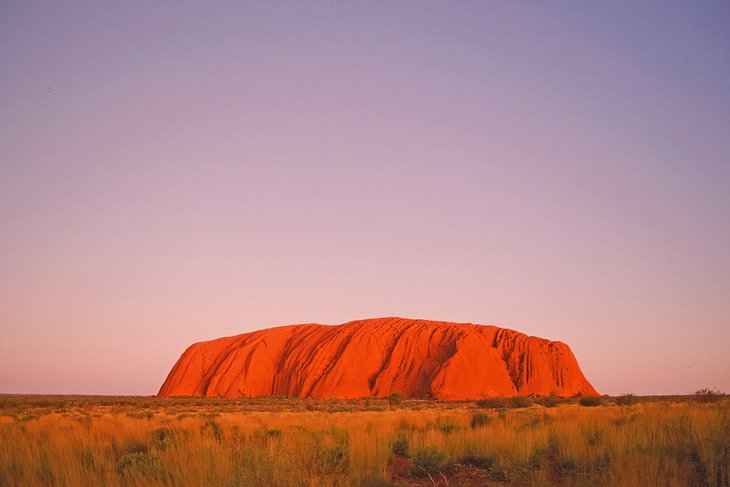
Deep in the heart of Australia's Red Centre, Uluru ( formerly Ayers Rock ), is one of the most photographed natural wonders in the country. The striking red monolith forms the centerpiece of Uluru-Kata Tjuta National Park , a World Heritage Site jointly managed by Parks Australia and the traditional landowners, the Aṉangu people.
Uluru, meaning "shadowy place" in the local Aboriginal dialect, rises to a height of 348 meters from the surrounding plain. Most of its bulk is hidden beneath the Earth's surface.
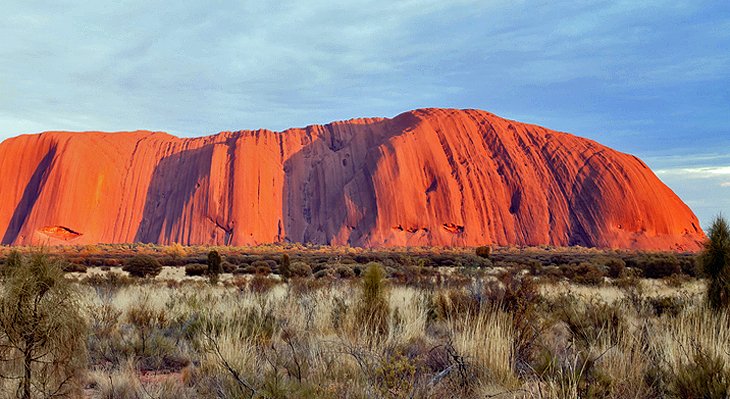
Also in the park, about a 30-minute drive from Uluru, are the red dome-shaped rocks called Kata Tjuta (formerly called the Olgas). Equally impressive as their more famous neighbor, and often less crowded, they should not be missed while you are in the park. You can admire their beauty on the 2.6-kilometer-return trek to Walpa Gorge or the 7.4-kilometer Valley of the Winds circuit.
Prime time for photographing these striking landforms is at sunset, when visitors gather to watch the colors of Uluru and Kata Tjuta transform in the shifting light.
Note: In 2019, the Uluru–Kata Tjuta National Park board outlawed climbing Uluru out of respect for the Anangu people, the traditional owners. The best way to appreciate these sacred sites is on walks led by Aboriginal guides and rangers.
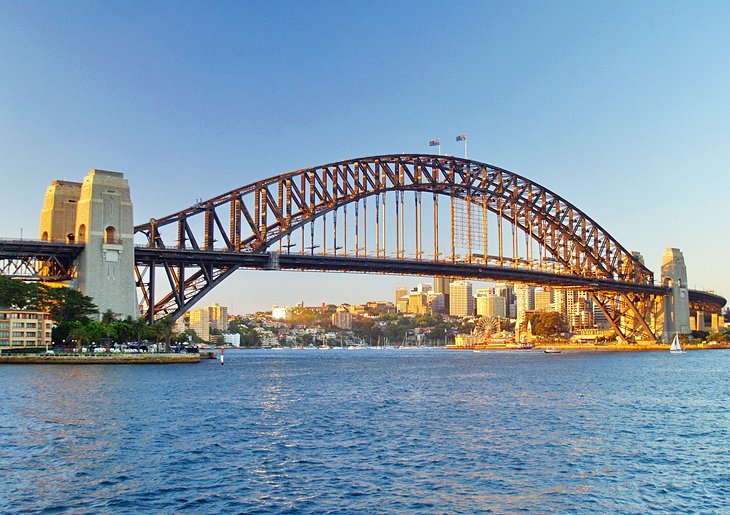
Along with the Opera House, the Sydney Harbour Bridge is one of Australia's top architectural icons. Affectionately called "the Coathanger," this impressive feat of construction is the largest steel arch bridge in the world . It was completed in 1932, 40 years before the Sydney Opera House.
Rising 134 meters above the harbor, the bridge spans 500 meters, connecting Sydney's North Shore to the central business district. In addition to the pedestrian path, two railway lines extend over the bridge, as well as eight lanes for road traffic, and the direction of each lane can be switched to accommodate traffic flow.
One of the top things to do in Sydney is a guided ascent to the top of the bridge. Standing on its summit, connected only by a carabiner, you can breathe in spectacular 360-degree views of the harbor and city. It's a great way to truly appreciate the layout of the city as you gaze out over the fingers of water that snake their way into beautiful blue bays.
For an overview of the bridge's history and construction, visit the museum on the southeastern pier.
Fun fact: Paul Hogan, of Crocodile Dundee fame, worked as a painter on the bridge before rocketing to international stardom.
Read More: Top-Rated Tourist Attractions in Sydney
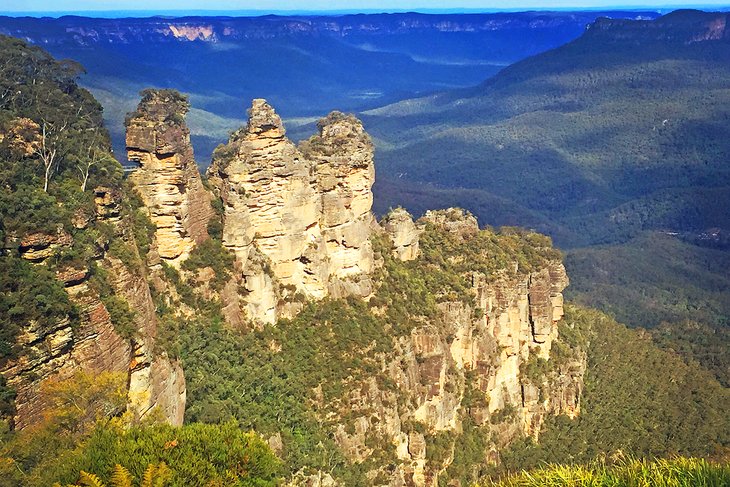
A UNESCO World Heritage Site , beautiful Blue Mountains National Park is a hiker's paradise and a popular day trip from Sydney . It lies an easy 81-kilometer drive west of the city.
Named for the blue haze emanating from the many eucalyptus trees, this stunning park protects more than 664,000 acres of wilderness. On a visit here, you can explore dramatic gorges, waterfalls, Aboriginal rock paintings, and 140 kilometers of hiking trails.
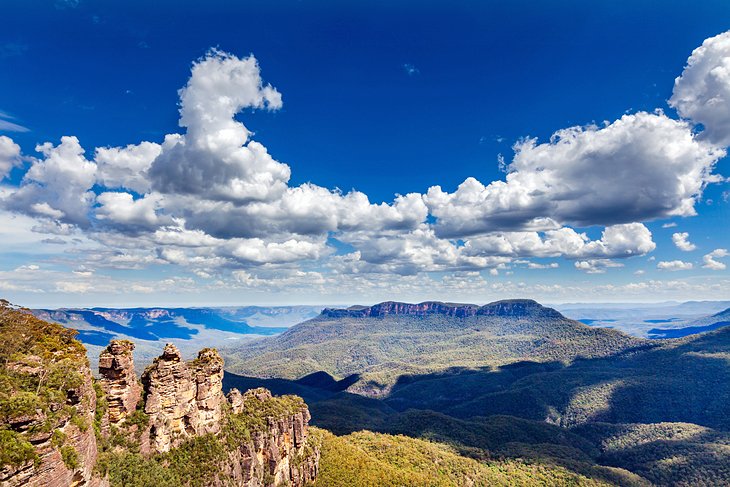
The most famous attractions in Blue Mountains National Park are the towering sandstone rock formations called the Three Sisters . Other highlights include the Katoomba Scenic Railway , the world's steepest, which whisks passengers down the Jamison Valley through a cliff-side tunnel into an ancient rainforest; and the Skyway, Scenic Cableway, and Scenic Walkway, which all offer elevated views of the dense forests.
Hiking, abseiling, rock climbing, mountain biking, and horseback riding are all popular things to do in the park.
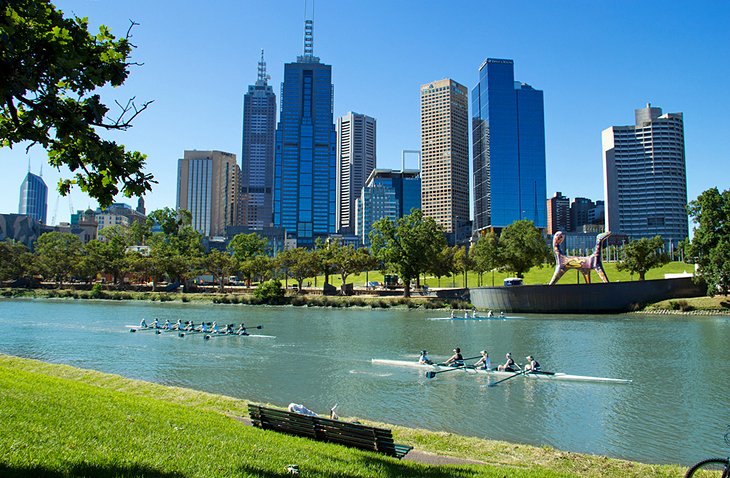
Melbourne, Australia's second-largest city, is a popular stop on many Australian itineraries — especially for culture vultures. Galleries, theaters, restaurants, shops, and its distinctly European feel are the main draws of this sophisticated city on the Yarra River.
It's also a green city, with parks, gardens, and open spaces occupying almost a third of its total area.
The cultural highlights of Melbourne are many. Gape at the masterpieces at the National Gallery of Victoria , watch a performance at Arts Centre Melbourne , or head to Federation Square . Here, you can browse Australian artworks at the Ian Potter Gallery and learn about the nation's screen culture at the Australian Centre for the Moving Image (ACMI) .
Feel like getting back to nature? Follow the Aboriginal Heritage Walk at the Royal Botanic Gardens . And if sports culture is top of your agenda, catch a game at the Melbourne Cricket Ground . In summer, cricket is the sport of choice; in winter, it's Australian Rules football.
Melbourne is also rich in history. You can see it in the Grand Victorian buildings funded by the Gold Rush, and you can feel it as you shop in the elegant arcades and Queen Victoria Market , which has been selling goods to Melburnians for over a century.
Read More: Top-Rated Tourist Attractions in Melbourne
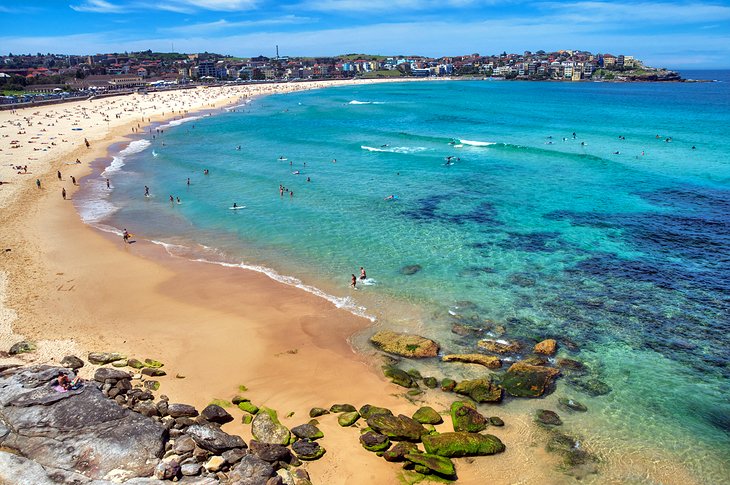
Bronzed bodies, blond sand, backpackers, and surf — throw it all together and you get one of the world's most famous beaches. Only 15 minutes by car from Sydney's city center, Bondi Beach is a great spot for a taste of Sydney's beach culture. Bask on the golden sands, surf the breaks, or take a cool dip on a hot summer's day (but stay between the flags).
Few cities in the world lay claim to such an enticing slice of sand and sea so close to the city. No wonder it's one of Sydney's best beaches . And you'll find some history here, too: Bondi hosts one of the oldest Surf Life Saving Clubs in the world .
Away from the shore, you'll find plenty of things to do in Bondi. Take a stroll along the Bondi to Bronte coastal walk. It begins at the southern end of the beach and follows the coastline for six scenic kilometers along sandstone cliffs. You can also hunt for bargains at the Sunday markets or swim some laps in the ocean pool. And if you work up an appetite, you'll find plenty of cafés and restaurants nearby.
One of the best places for a meal with a view at Bondi Beach is the famous Icebergs dining room. The menu spotlights modern Italian cuisine, and you can enjoy a meal of fresh-cooked fish watching the waves wash over the ocean pool.
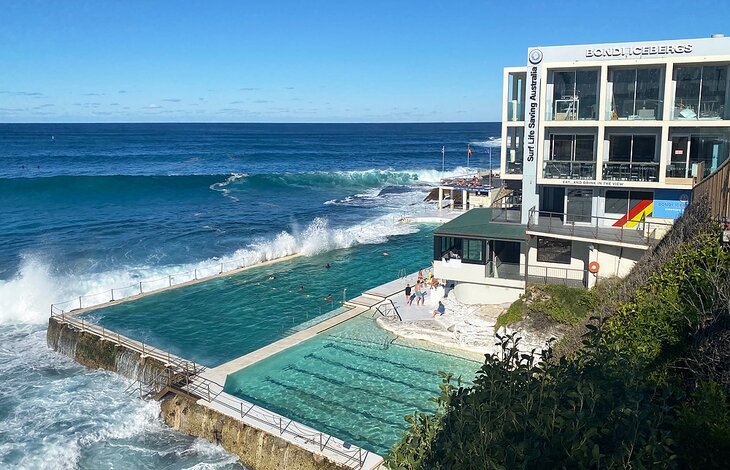
Bondi also has a wild side. Crowds of tourists and locals gather here to celebrate Christmas and ring in the New Year. It's a favorite spot for travelers.
A word to the wise: If you're taking a dip at Bondi, make sure you swim between the red and yellow flags. Strong rip tides often sweep unsuspecting swimmers out to sea, especially at the southern end of this kilometer-long strand. There's a reason the Aussies made a reality TV show called Bondi Rescue .
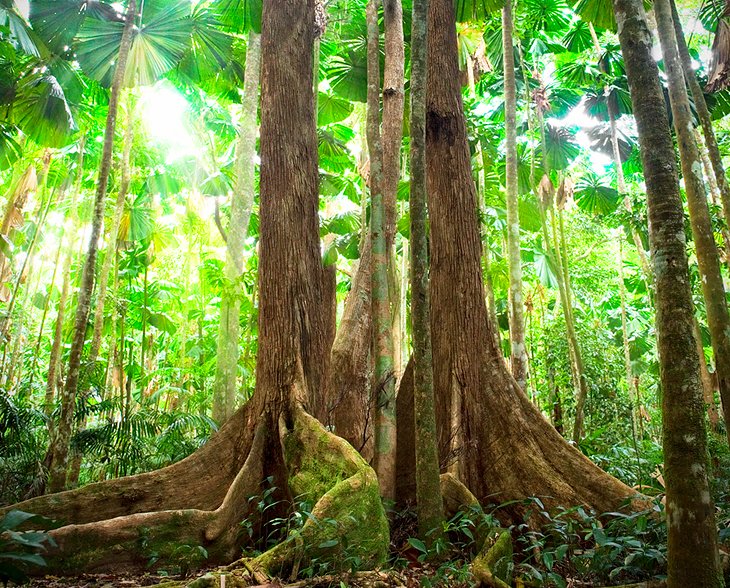
A Wet Tropics World Heritage Area , Daintree National Park in Far North Queensland is among the most ancient ecosystems on Earth. The area belongs to the Eastern Kuku Yalanji Aboriginal people, and many of its natural features hold great spiritual significance.
The park encompasses two main sections: Mossman Gorge, where crystal-clear waters gush over granite boulders, and Cape Tribulation, one of the most beautiful places to visit in Australia. Here, rainforest meets reef along the white sandy beaches of the Coral Sea. This stunning stretch of coast is one of the few places in the world where two of the planet's richest ecosystems converge.
The park's astounding biodiversity includes more than 18,000 plant species and a vast array of animal species, including the cassowary, crocodile, giant blue Ulysses butterfly, and the secretive Bennett's tree kangaroo.
The resort town of Port Douglas just south of the park, is a great base to arrange wilderness safaris into the park.
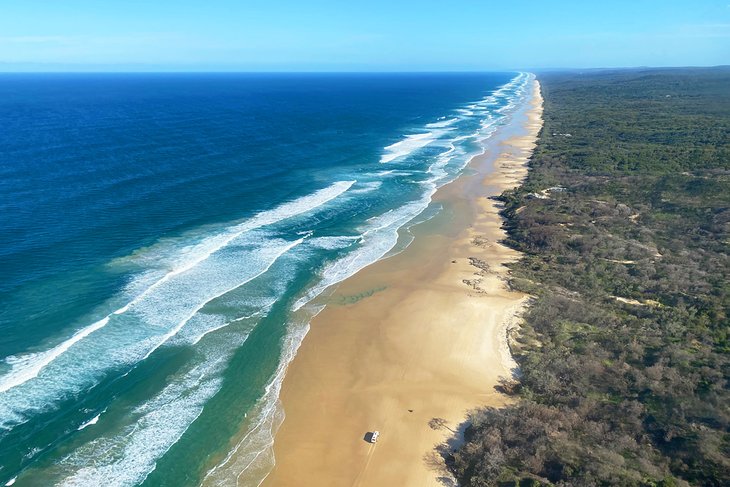
World Heritage-listed K'Gari (Fraser Island) is one of the most unique places to visit in Australia. Sitting between Bundaberg and Brisbane off Australia's east coast, this is the largest sand island in the world . Here, you'll find seemingly endless stretches of sand and sea, turquoise lakes, emerald rainforests, rippling dunes, and fascinating wildlife.
Looking for an adrenaline rush? A 4WD trip along its surf-thrashed shores is one of Australia's top outdoor adventures . Along windswept Seventy Five Mile Beach , you can see the rusted hulls of shipwrecks, the colored sandstone cliffs of The Cathedrals , and the bubbling fish-filled rock pools called Champagne Pools .
Thirty years ago, you could drive for miles and not see another soul. Today the beach can feel like a sandy highway, with a steady stream of 4WD vehicles and tourist buses plying the sands.
Venturing inland on the rugged tracks is a good way to escape the beach traffic during the peak summer months. Highlights include crystal-clear freshwater creeks and lakes, some fed by springs, others perched amid towering sand dunes; and ancient rainforests filled with an amazing diversity of plants and animals.
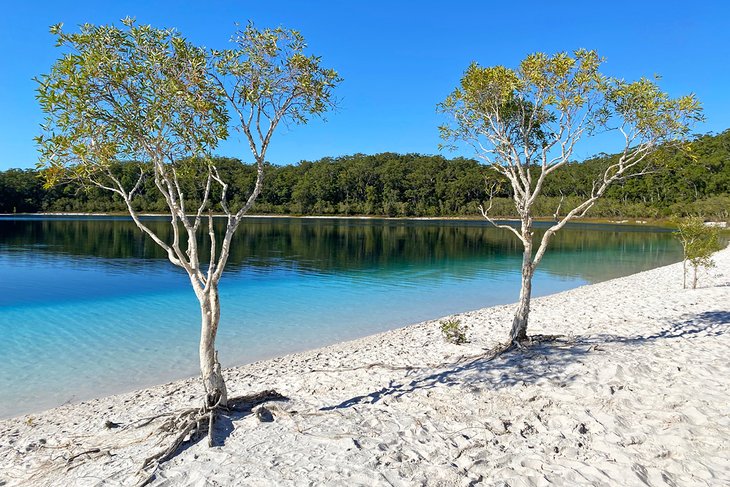
Sharks, dolphins, and whales swim these waters, and on land, you can see dingoes, bats, sugar gliders, and more than 300 species of birds.
Nature lovers will find plenty of other things to do on K'Gari Fraser Island . Hop aboard a whale watching trip, take a sunset cruise, hike the rainforest trails at Central Station , float down Eli Creek, or soar over the striking landscapes on a scenic flight.
Access to Fraser Island is by ferry from Rainbow Beach and Hervey Bay , the two main gateway towns. Four-wheel drive vehicles are essential, as the island has no sealed roads.
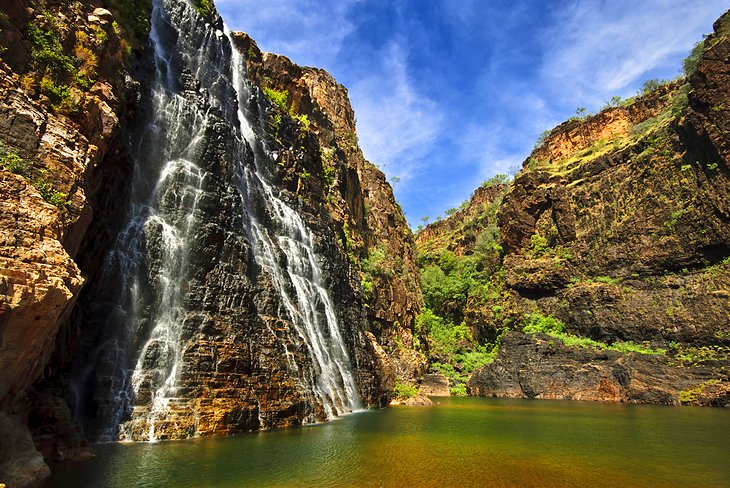
When it comes to wilderness areas, Kakadu National Park showcases the best of Australia. Covering more than 19,840 square kilometers in the Northern Territory, it's the second-largest national park in the world .
Within its borders, you can explore monsoon rainforests, mangrove swamps, rivers, gorges, ancient rock paintings, wetlands, and waterfalls.
Kakadu is also home to an astounding diversity of wildlife. In addition to the many mammals, reptiles, and fish, more than 300 different species of birds make their home here, and both freshwater and saltwater crocodiles lurk in the wetlands.
To explore the park's diverse ecosystems, hop aboard a cruise along the waterways, or hike the vast network of trails. You can also take a scenic flight.
Visiting Kakadu National Park from Darwin is easy during the dry season. It's about a three-hour drive from the Northern Territory capital. In the wet season (Nov-April), many roads and attractions close due to heavy flooding, but the waterfalls and wetlands can be at their best.
- Read More: Top-Rated Tourist Attractions in Australia's Northern Territory
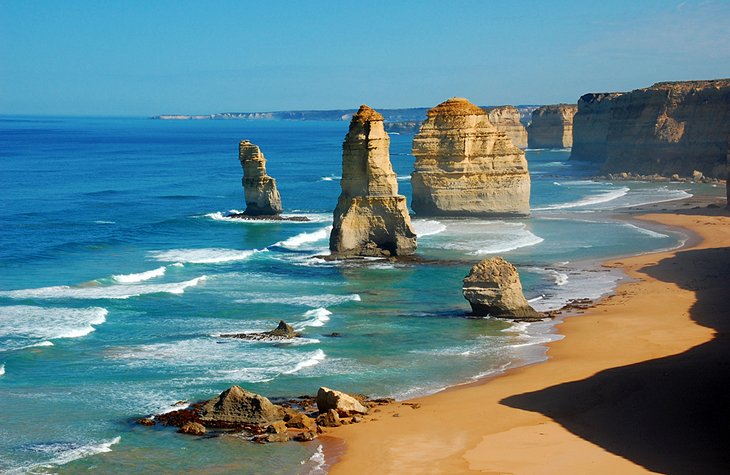
Great Ocean Road is one of the world's top scenic drives. Built to provide employment during the Depression, the road stretches for 300 kilometers along Australia's rugged southeast coast, winding along plunging sea cliffs. It stretches from the surfing town of Torquay to the town of Allansford , near Warrnambool .
One of the top attractions of Great Ocean Road is Port Campbell National Park . This is where you can see the wind- and wave-sculpted rock formations known as the Twelve Apostles , London Bridge , the Arch , and Loch Ard Gorge . From the air, these rock formations look like giant puzzle pieces adrift along the coast, lashed by the pounding surf of the Southern Ocean.
You'll find plenty of rewarding things to do along Great Ocean Road. Stop by the Australian National Surfing Museum at Torquay, surf the famous swells at Bells Beach, linger in the seaside resort of Lorne, or go whale watching in Warrnambool .
Nature lovers will also enjoy exploring the eucalyptus forests, fern-filled rainforests, hiking trails, and waterfalls in Otway National Park .
Author's Tip: If you're short on time, my favorite way to experience Great Ocean Road is on a helicopter ride along the coast. Gazing down at the giant rock formations carved from the coast by wind and water is a humbling experience. Lashed by the pounding surf of the Southern Ocean, the rock formations look like giant puzzle pieces adrift on a turbulent sea.
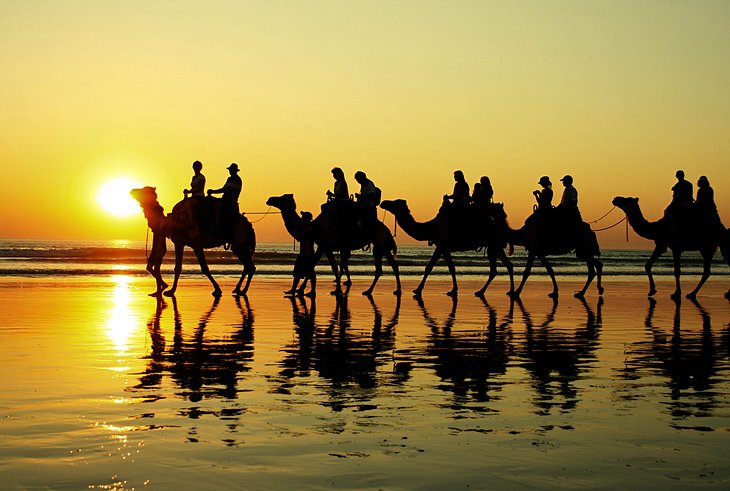
Broome, in Western Australia's north, was once the pearl capital of the world. Today, it's a booming tourist town and the gateway to the spectacular Kimberley region.
Broome's star tourist attraction is Cable Beach. This seemingly endless stretch of white sand and turquoise water is one of Australia's best beaches , and riding camels at sunset is one of the most popular things to do here.
Tourists also flock to Town Beach to witness the Staircase to the Moon. This phenomenon occurs during certain conditions between March and October, where the moonlight creates an optical illusion of steps leading to the moon.
Other Broome highlights include the red cliffs of Gantheaume Point, and the Malcolm Douglas Crocodile Park, where you can get up close to crocs, cassowaries, and kangaroos. If you're looking for things to do in town, you can brush up on some local history at the Broome Historical Museum or catch a movie in a deck chair under a star-studded sky at Sun Pictures.
Pearl farm tours, whale watching trips, and Kimberley adventures are also high on the things-to-do list in Broome.
- Read More: Top-Rated Tourist Attractions in Western Australia
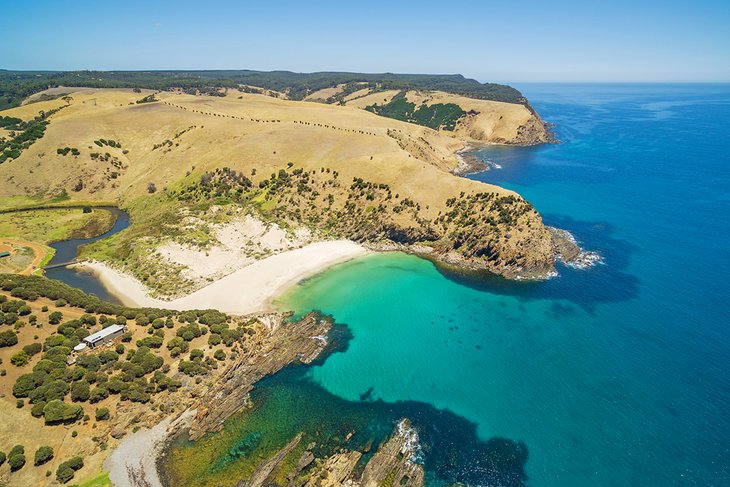
Nature takes center stage at Kangaroo Island. On this unspoiled island off South Australia's Fleurieu Peninsula, kangaroos hop along the powdery shores, sea lions and penguins frolic in the crystal-clear waters, and koalas cling to the fragrant eucalyptus trees.
Diving is also excellent. You can spot sea dragons in the temperate waters, and dive shipwrecks off the island's coast.
Kangaroo Island's top attractions are made by Mother Nature. See the striking, wind-sculpted rock formations, known as the Remarkable Rocks and Admirals Arch in Flinders Chase National Park . Explore vast cave systems. Surf towering dunes and look for wildlife on scenic hiking trails along soaring sea cliffs and through pristine forests.
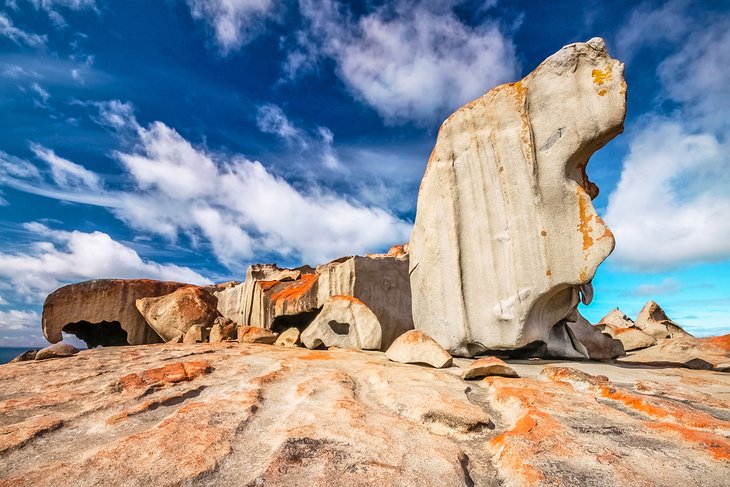
Foodies, too, will be in heaven. Creamy cheeses, Ligurian honey, and fresh seafood grace the plates in local restaurants.
To get here, you can fly direct to the island from Adelaide, or catch a ferry from Cape Jervis on the Fleurieu Peninsula.
Kangaroo Island is recovering well from the 2020 bushfires. In fact, several new eco-friendly lodges are slated to open here in 2023.
- Read More: Top-Rated Tourist Attractions in South Australia
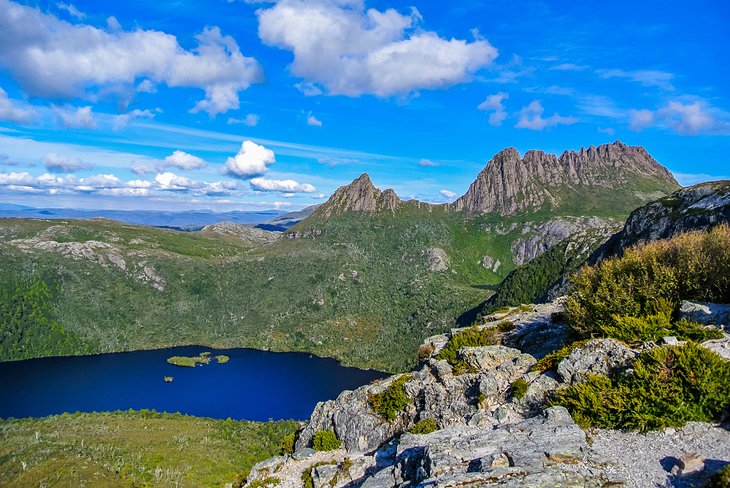
Cradle Mountain-Lake St. Clair National Park is one of Tasmania's tourism treasures and a nirvana for nature lovers. Sparkling lakes, serrated dolerite peaks, alpine heathland, and dense forests characterize the raw, glacier-carved wilderness here. One of the park's most distinctive features is the 1,616-meter Mount Ossa , the highest point in Tasmania.
As you might expect, hiking here is fantastic. Favorite trails include the Weindorfer Walk , a six-kilometer loop through dense forests, and Lake Dove Walk , with breathtaking vistas of Cradle Mountain (1,545 meters). Stand on the summit of Cradle Mountain, and you can soak up stunning views of the central highlands. Experienced hikers can also tackle the famous 80-kilometer Overland Track , which runs south from Cradle Valley to stunning Lake St. Clair , Australia's deepest lake.
While you're exploring the park, keep an eye out for Tasmanian devils, wombats, wallabies, pademelons, and platypus among the many species of weird and wonderful wildlife.
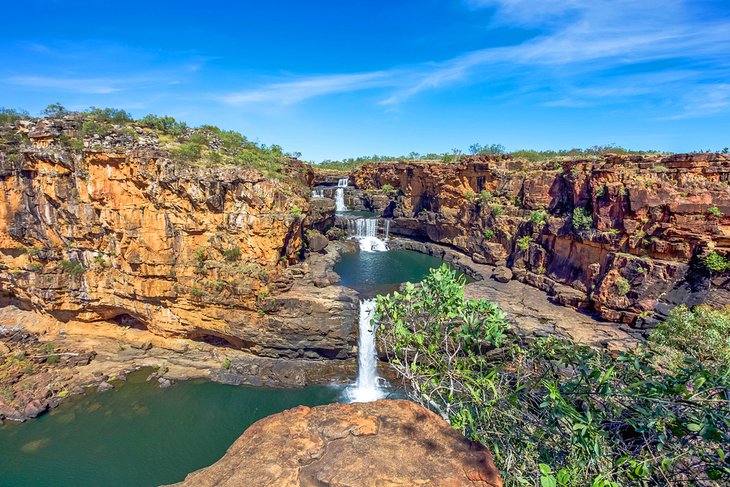
Adventures abound in the Kimberley. Covering Australia's northwest corner, this remote and rugged region of red rocks, gaping gorges, scorched deserts, and cliff-fringed coast is ripe for exploring.
One of the top adventures in the Kimberley is the Horizontal Falls. Powerful tides of up to 11 meters gush through two narrow gorges, creating this jaw-dropping phenomenon. Hop aboard a jet boat and zoom across the sea through the seething falls.
Broome is the gateway. From here, you can soar along scarlet sea cliffs and gaze down upon the 800-plus islands of the Buccaneer Archipelago. Fly farther north to the wild beaches of Cape Leveque, and visit remote pearl farms and Aboriginal communities. Take a 4WD safari along the Gibb River Road , one of Australia's most famous 4WD tracks.
The Kimberley is also home to the spectacular Mitchell Falls and UNESCO-listed Purnululu (Bungle Bungle) National Park . These spectacular beehive-shaped rock formations were only discovered in 1983. Hike the trails, visit sacred Aboriginal ceremonial sites and rock paintings, or soar over the park on a scenic flight and visit the Argyle Diamond mine.
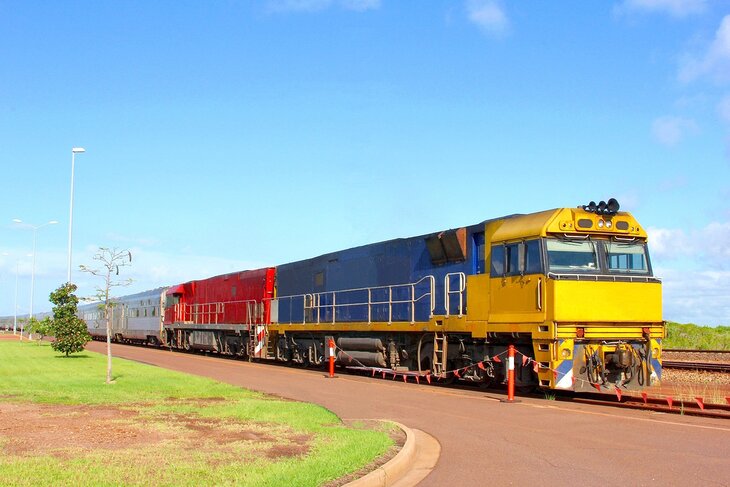
Driving through the Outback can be tough logistically — the distances are vast across this sun-scorched desert region, and you can drive for days without seeing another soul. But gliding through on a luxury train makes exploring Australia's red-hot heart a breeze. It's also a great way to see multiple Aussie attractions in one trip.
You have several train trips to choose from depending on where you want to go. One of the best is the Indian Pacific , Australia's longest train journey. This four-day luxury train trip travels between Perth, Adelaide, and Sydney, whisking you across three states in four days.
Highlights include the Blue Mountains, Broken Hill's art galleries, South Australia's pink lakes, the seemingly neverending Nullabor Plain, and a series of mouthwatering foodie experiences. You can also upgrade your experience with a post-trip tour of vibrant Perth.
Hop aboard The Ghan for another iconic Aussie train trip. From the comfort of a luxury cabin, you can gaze out on the elemental beauty of the desert, while you traverse some of the most remote areas in Australia, including the opal-mining town of Coober Pedy and the Flinders Ranges. Choose between three different routes : Adelaide to Darwin (three days and two nights), Adelaide to Alice Springs (two days and one night), or Darwin to Alice Springs (two days and one night). All these trips can also be taken in reverse.
And if a shorter trip is more your style, opt for the Spirit of the Outback . This 26-hour journey travels from Brisbane to Longreach , in Outback Queensland, where you can delve into some Aussie nostalgia at heritage mining towns like Blackwater and Emerald and visit the Stockmen's Hall of Fame in Longreach.

More on Australia
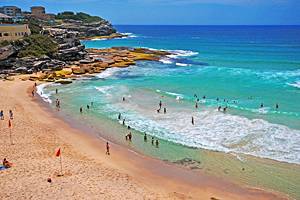
A guide to 30 of Australia's iconic Big Things
Carla Grossetti
Sub-Editor & Journalist
15 November 2023
It wouldn’t be an Australian road trip without a sighting of a Big Thing and we’ve put together a guide of Australia’s most iconic Big Things.
“Go big or go home”, so the expression goes, and Australia certainly received the memo. Australia’s penchant for ‘Big Things’ dates back to the 1960s when Adelaide’s Big Scotsman and the Big Banana in Coffs Harbour were unveiled to oversized delight. Today there is said to be more than 150 Big Things across the country, with some sources reporting in excess of 300, although the figure depends strongly on one’s definition of ‘big’.
Although there are some bona fide medium-sized items on our list, checking them all off is one of many reasons to head out on the highway. The quirkier the better. Here, we highlight some of the most iconic larger-than-life attractions (ranked by state, not by order of appeal) as well as those that are lesser-known such as Larry the Lobster, located in Kingston, South Australia, which was recently crowned champion in a ‘Which Big Thing is the Best?’ poll conducted by ABC Rural’s Warwick Long.
Qld | SA | NSW | NT | Tas | Vic | WA
The Sunshine State loves a Big Thing, judging by the sheer number of them you will find scattered around the state. From fruit and a giant gumboot to a cane toad, kangaroo and a giant easel, there is seemingly no “thing” too small to be transformed into a larger than life attraction. Here are nine of the best in Queensland.
1. The Big Pineapple
The Sunshine Coast’s Big Pineapple, located in Woombye, was once so iconic it made the cut as part of Prince Charles and Lady Diana’s 1983 Royal tour. Opened in 1971 on the existing Sunshine Plantation, located between Noosa and Caloundra, the 16-metre fibreglass pineapple attracted more than 1 million visitors a year at the peak of its popularity, and plans to return the heritage-listed landmark to its former glory are in progress.
The 170-hectare site includes attractions such as a ginger beer brewery, Diablo Co ., a water park , education programs and accommodation. There is already a Wildlife HQ zoo, a Tree Top Challenge with high ropes and zipline course, and regular events including the annual Big Pineapple Music Festival.
Part of the property’s footprint also includes Sunshine & Sons , a small-batch distillery that launched its Pineapple Parfait Gin in August 2021 to showcase the tropical fruit grown on the pineapple plantation and celebrate the 50th anniversary of the Big Pineapple. There is also a push for the Big Pineapple to become the official mascot for the Brisbane 2032 Olympics.
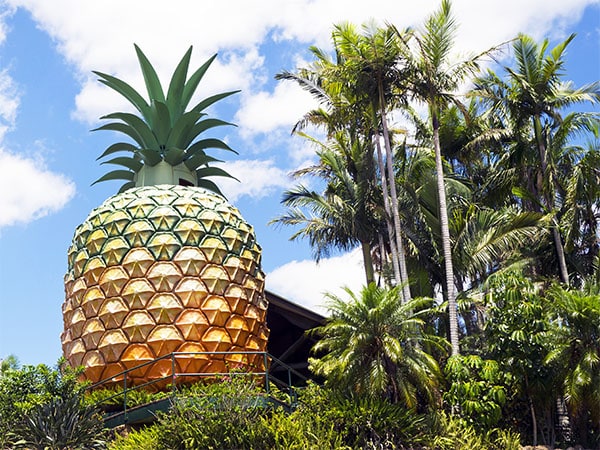
There is a whole lot more to see at Woombye’s Big Pineapple location.
2. The Big Kangaroo
Matilda was the 13-metre tall kangaroo mascot from the 1982 Brisbane Commonwealth Games. The six-tonne Big Thing has since been upcycled and, ahem, roo-located several times from a water park on the Gold Coast to a truck stop in Kyborg, and today stands sentinel outside a petrol station in nearby Traveston, in the Gympie region of Queensland.
While the much-loved mascot used to be able to wiggle her ears, wink and blink, these days the icon simply manages to turn heads from her new position outside the new Chevron mega servo station on the Bruce Highway, which is even more accessible to road-trippers than her former Kyborg home.
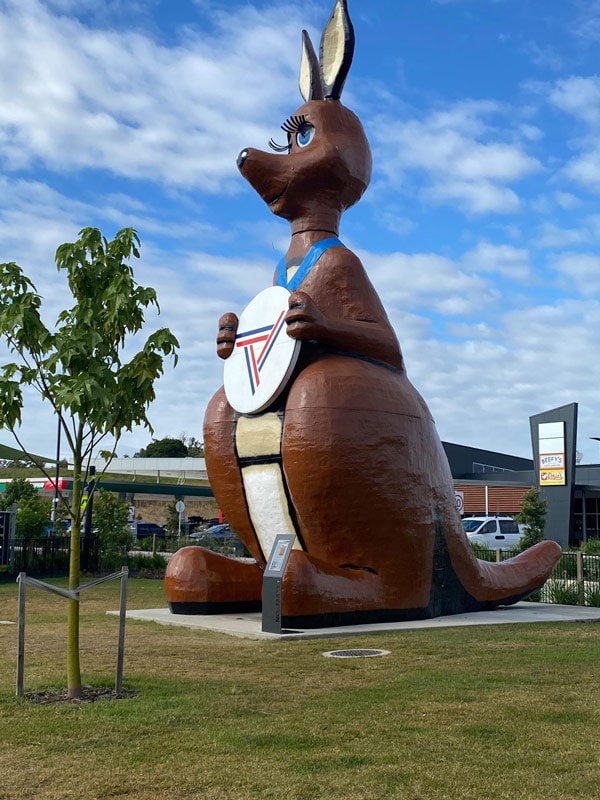
The Big Kangaroo has had many homes over the years. (Image: Big Things Australia Facebook )
3. The Big Cane Toad
The locals have nicknamed the Big Cane Toad in Sarina ‘Buffy’ after the native tropical American tailless amphibian’s Latin name, Bufo marinus, and, love it or loathe it, it’s become a fibreglass fixture that celebrates the town’s cane farming history, warts and all. Big bold Buffy is located on the Bruce Highway, in the middle of the main road that slices through Sarina.
The cane toad was introduced to Australia as a pest control agent, but has become a pest itself. Originally crafted as the papier mache centrepiece to grace a float for a tropical sugar festival, the toad was cast in fibreglass in honour of the large, poisonous toad so prevalent in the region.
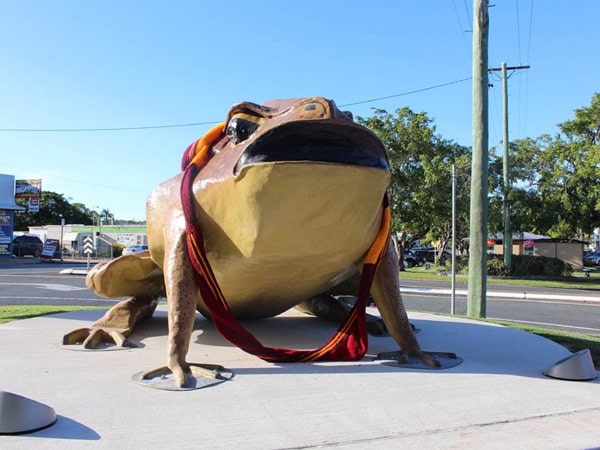
The Big Cane Toad can be spotted in Sarina. (Image: Mackay Region)
4. The Golden Gumboot
The township of Tully, located south of Cairns in Tropical North Queensland, has an average rainfall that exceeds four metres and, in 2003, a monument to the town’s unofficial status as Australia’s wettest town was erected in the form of a Golden Gumboot. Climbing up the gumboot is a white-lipped green tree frog.
After Cyclone Yasi roared through the town in 2017, the 7.9-metre-tall gumboot was given a facelift and it is now looking resplendent with its boot painted a golden hue and the fibreglass frog a vibrant shade of green.
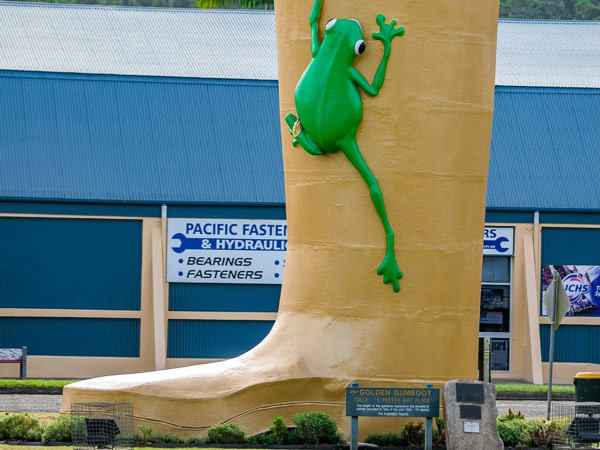
The township of Tully is home to the Golden Gumboot. (Image: Tourism Events Queensland)
5. The Big Bullock
Rockhampton is home to the Big Bullock, a set of seven large statues that nod to the town’s triennial Beef Australia Expo. Vandals have been known to castrate the bulls’ balls, which are considered a trophy by local pranksters. The quirky statutes in the Beef Capital of Australia include a Brahman Bull at a roundabout on the southern entrance to the city and the Droughtmaster, at the entrance to the airport.
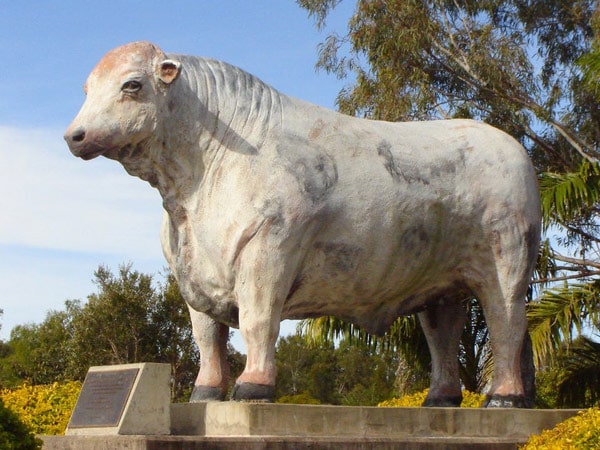
Romagnola is one of the seven statues that make up the Big Bullock in Rockhampton. (Image: Tourism Events Queensland)
6. The Big Easel
A drop of Tuscany meets the Central Highlands in Queensland with this mega artwork of Van Gogh’s sunflower painting. Artist Cameron Cross built the 25-metre high easel using about 13.6 tonnes of steel as part of his vision to construct seven Sunflower sculptures in seven different countries.
The painting, which punches the sky above Morton Park, was finished in 1999 and remains the world’s biggest rendition of a Van Gogh sunflower painting. The artwork is also a nod to Emerald’s proud history as a major producer of sunflowers. Visit the Emerald Visitor Information Centre to learn more about the awesome easel and return over Easter for the town’s annual Sunflower Festival.
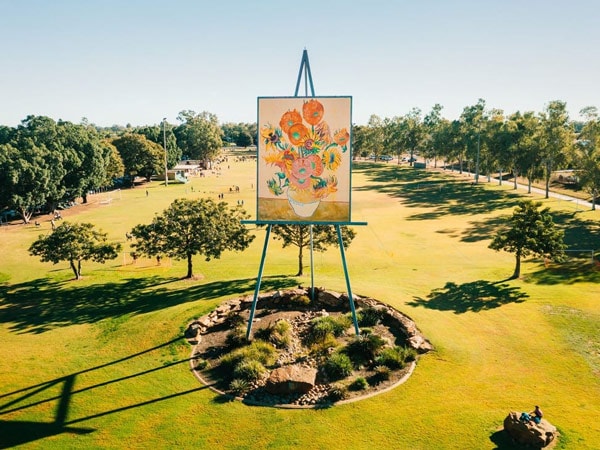
The Big Easel in Emerald is a mega version of Van Gogh’s sunflower painting. (Image: Tourism Events Queensland)
7. The Big Barramundi
The Big Barramundi in Normanton is one of Queensland’s most famous big things. Constructed in honour of the elusive, large freshwater fish of the same name that is the most common species found in the Norman River, this Big Thing also celebrates the town’s status as the Barramundi Capital of the North.
Constructed in 1995, the six-metre-long sculpture is one of three dedicated to barramundi located around Australia. The small Shire of Carpentaria town is also home to an 8-metre-long fibreglass saltwater crocodile named Krys, the Savannah King, which is a replica of the largest recorded saltwater crocodile captured in the world.
8. The Big Cassowary
As anyone who has come face to casque with a cassowary will attest, these flightless birds are not to be trifled with. So instead of trying to snap a selfie with the real thing, you can head to Wongaling Beach Shopping Centre in Mission Beach to clock the big bird that gave the Cassowary Coast its name.
While the statue is five metres tall, the actual bird itself – known for their wondrous red and blue wattles – can reach up to 1.7 metres and weigh up to 76 kilograms. The rainforest-cloaked hills around Mission Beach provide the perfect habitat for the big birds, and there are several street signs that warn motorists to slow down in case of cassowaries crossing.
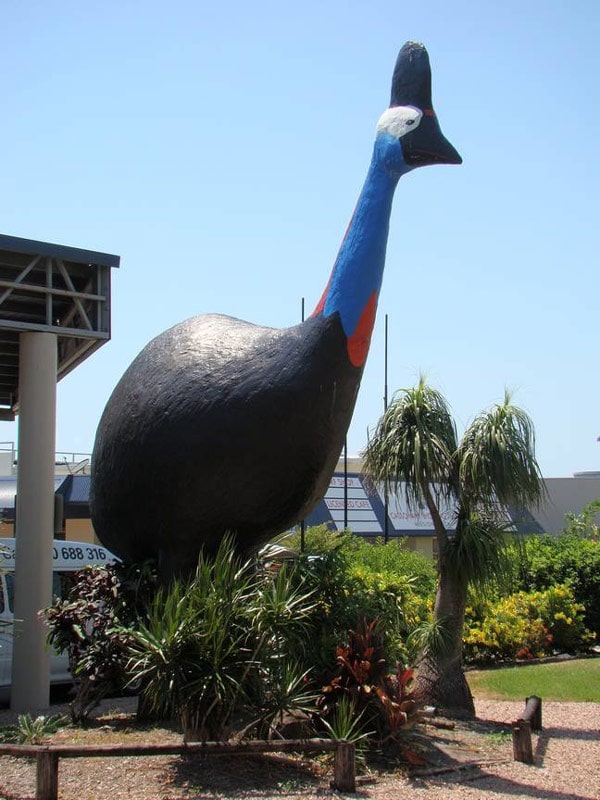
The Big Cassowary can be found outside Wongaling Beach Shopping Centre in Mission Beach. (Image: Big Things Facebook)
9. The Big Apple
You will have to clock up a couple of hundred klicks on the Cunningham Highway to get to The Big Apple, located in the town of Stanthorpe. Located just 2.5 hours southwest of Brisbane, The Big Apple is about as far from New York as it gets, situated as it is in a region that is defined by its apple orchards, which sum up the seedy sculpture’s raison d’être.
The Big Apple is located in the Granite Belt, in apple country, in a region where the orchards are considered a core aspect of Queensland’s bounty. You will find apple pies and apple cider tastings across the road from the Big Apple in Sutton’s Juice Factory, Cidery and Café.
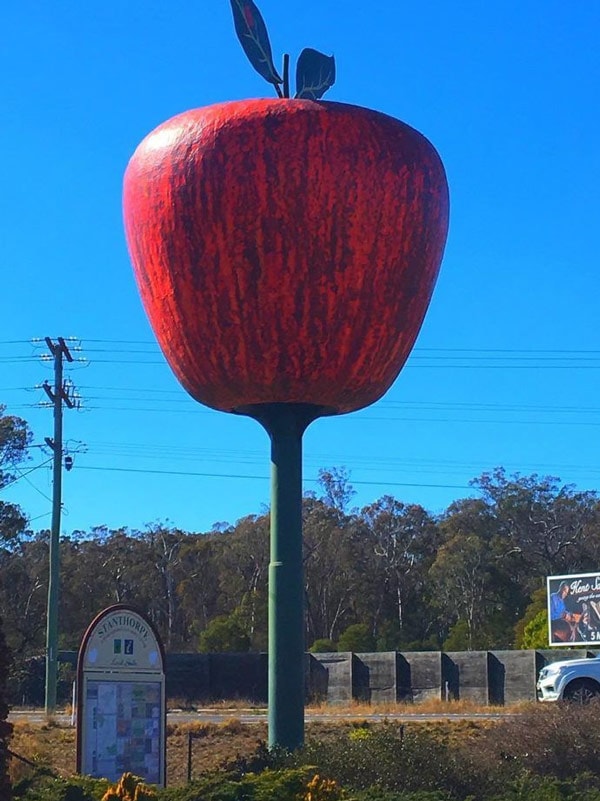
The Big Apple is located in the town of Stanthorpe. (Image: @australiasbigthings )
South Australia
Famed for its vineyards, beaches and festivals, South Australia hardly needs a Big Thing to convince us to visit. Yet it’s the Big Things that show up in the most unlikely of places (like the Big Galah perched at the halfway point across Australia) that make South Australia stand out in the Big Things stakes. Here are three of the best.
10. The Big Lobster
Foodies looking for a fix of fresh lobster know that South Australia’s Limestone Coast is well worth the journey, which is why a 17-metre-tall version of the crustacean was built in Kingston in 1979. Known as Larry the Lobster, the steel-and-fibreglass structure was designed to attract people to the adjacent restaurant and visitor centre.
The Big Lobster known locally as Larry the Lobster is one of the biggest of Australia’s Big Things, and was recently ranked No. 1 ‘Best Big Thing’ in an ABC Rural poll. There is now an old-school takeaway located in the lobster’s tail luring road-trippers off the Princes Highway near the entrance to Kingston for fish and chips and a selfie near the pincers.
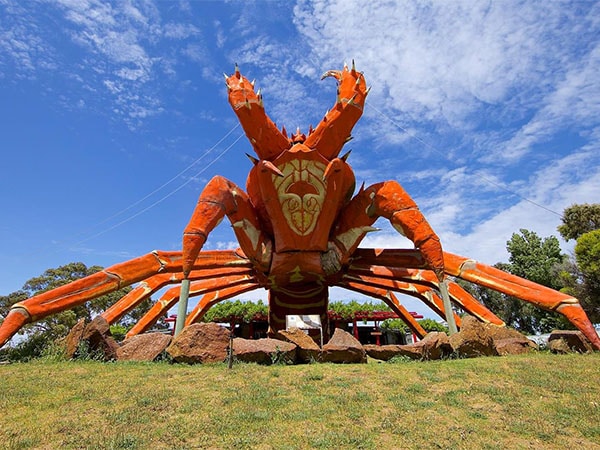
Visit the 17-metre-tall lobster on South Australia’s Limestone Coast.
11. The Big Rocking Horse
There’s something thrilling about seeing a soaring big thing when you’re a child. And the fact the Big Rocking Horse is actually the giant emblem for a wooden toy factory doubles this Big Thing’s appeal. Although the 18-metre-high horse doesn’t rock – it’s set into 80 tonnes of concrete – you can climb through the horse to look out from three vantage points, the rocker, saddle and horse’s head.
The world’s biggest rocking horse is located in Gumeracha, in the Adelaide Hills, and is a top spot to enjoy some retail therapy. Bring your own picnic and spread out in the shade at the adjoining wildlife park, where peacocks, wallabies, sheep, goats, kangaroos and alpacas roam.
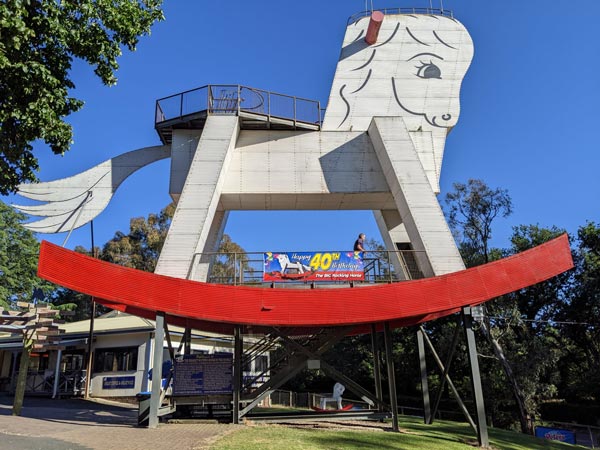
The Big Rocking Horse is actually the giant emblem of a wooden toy factory. (Image: @thetoyfactory.com.au )
12. The Big Galah
There are a few Australian colloquialisms that sum up our feelings toward the native galah. If you make a galah of yourself, you’re appearing foolish. If you’re ‘mad as a gum tree full of galahs’ you’ve gone completely cray-cray. Kimba’s Big Galah is a monument to the small Australian cockatoo that is coloured grey and pink, like bands of ‘80s eye shadow.
The giant eight-metre-high bush bird is perched out the front of a servo in Kimba that marks the halfway point across Australia. Today, the Big Galah is shadowed by the soaring 30-metre-high grain silos, which have been painted with murals and are now a major attraction in SA. The Big Kissing Galahs can also be found roosting in a concrete nest in Watson on the northern outskirts of Canberra in the ACT.
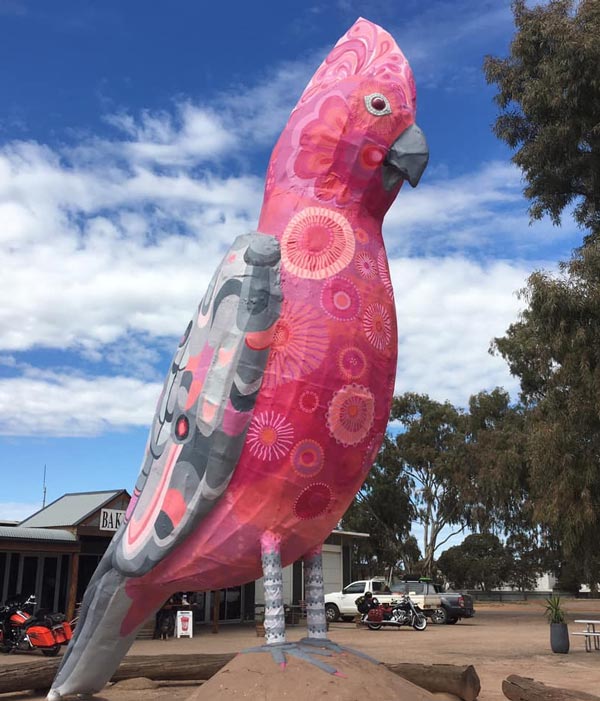
The Big Galah in Kimba received a new paint job in 2021. (Image: @thebiggalah)
New South Wales
Home to arguably the most famous Big Thing of them all, the Big Banana, New South Wales punches above its weight in the Big Things arena. Here are five of the state’s best.
13. The Big Banana
Opened in 1964, the Big Banana was one of the first, and remains one of the most popular, Big Things in Australia. A ‘you-can’t-miss-it’ position on the Pacific Highway in Coffs Harbour has aided the ‘na-na’s fame, but it is more than just an oversized piece of fruit for road-trippers to gawk at.
Although it originally had the simple role of marking the site of a banana plantation, the space has evolved over the years and the 13-metre-long landmark is now accompanied by an award-winning fun park with laser tag, a giant slide, mini golf, ice skating, a toboggan ride and a water park among other attractions.
The Big Banana also looms large for road-trippers, with the promise of a chocolate-coated banana or banana split keeping children happy for longer on their quest to get to Coffs Harbour. While there are many more stories to be told in Coffs Harbour these days, with the Mid North Coast town recently declared NSW’s first ECO destination , the Big Banana will always hold sway.
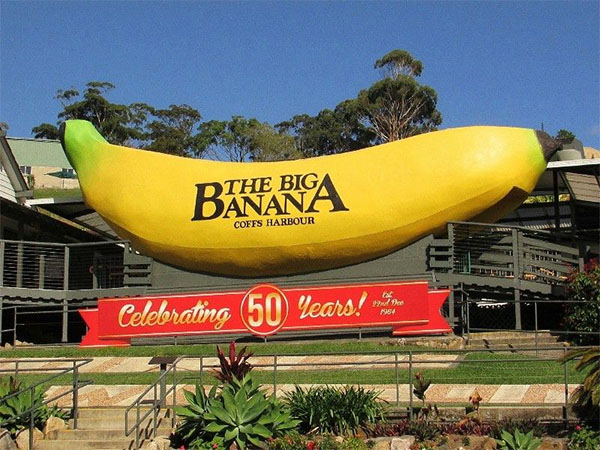
Coffs Harbour is home to the iconic Big Banana.
14. The Big Merino
Built in 1985, The Big Merino is a monument to the Goulburn region’s fine wool industry. And ‘Rambo’ is a particularly big, big thing, weighing in at 100 tonnes and measuring 15.2 metres high and 18 metres long. Once a go-to pit-stop for those travelling through Goulburn, The Big Merino’s popularity initially suffered when the Hume Highway was re-routed to bypass the town in 1992.
But in 2007, Rambo was relocated 800 metres closer to the highway so he could once again enjoy the spotlight. Unlike most of Australia’s Big Things, Rambo is open for inspection and a go-to on a weekend getaway in Goulburn . His three-storey interior is home to a permanent exhibition on the 200-year history of wool in Australia as well as a gift shop and an observation area where visitors can experience the Rambo’s-eye view.
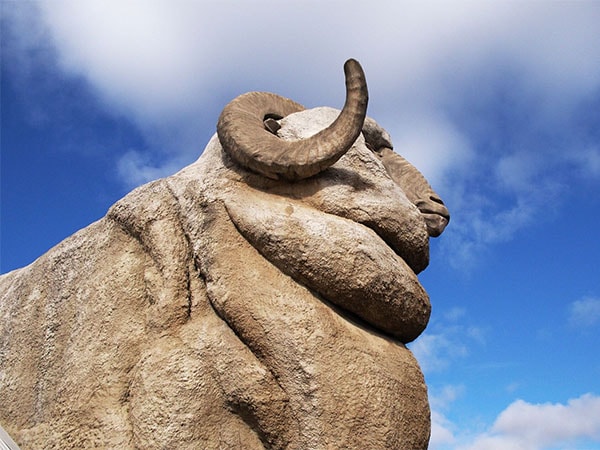
The Big Merino was built in 1985 to celebrate Goulburn’s fine wool industry.
15. The Big Prawn
Ballina’s 33-tonne Big Prawn was constructed (tail-less for reasons unknown) in 1989 as a nod to the local prawning industry where it took up residence atop a local service station. The structure eventually fell into disrepair and faced demolition when the service station closed in 2010, but another Aussie icon, Bunnings Warehouse, came to the rescue.
When the hardware group moved in, it spent $400,000 restoring the 35-tonne prawn, which included the addition of a 16-metre tail. The Big Prawn now cuts a striking figure next to its saviour. After adding a few snapshots to your Snapchat, order seafood to-go from one of the stores across the road. There is also a Big Prawn located in Exmouth, on Australia’s Coral Coast.
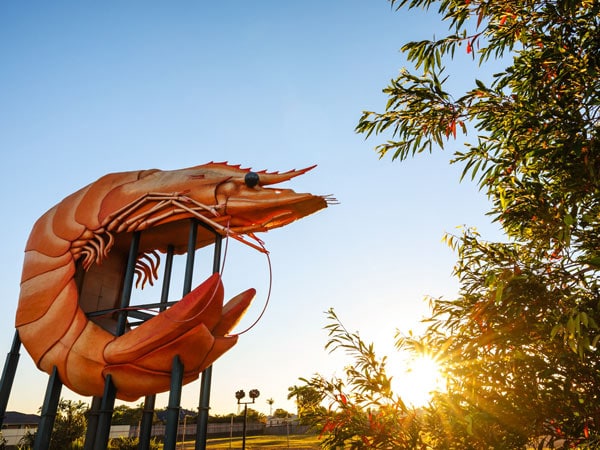
Ballina’s 33-tonne Big Prawn has been around since 1989.
16. The Big Potato
The rural idyll of Robertson in NSW’s Southern Highlands is home to The Big Potato , built in 1977 by local farmer Jim Mauger in order to celebrate the production of potatoes in the region, which is known for its rich, fertile soil and reliable rainfall.
Located off the Illawarra Highway, near the Robertson Supermarket, the gigantic tuber measures 10 metres by four metres and is also affectionately known as ‘the big poo-tato’ for its resemblance to oversized excreta. The Big Potato, modelled on the Sebago potato variety, sold to new owners in 2020.
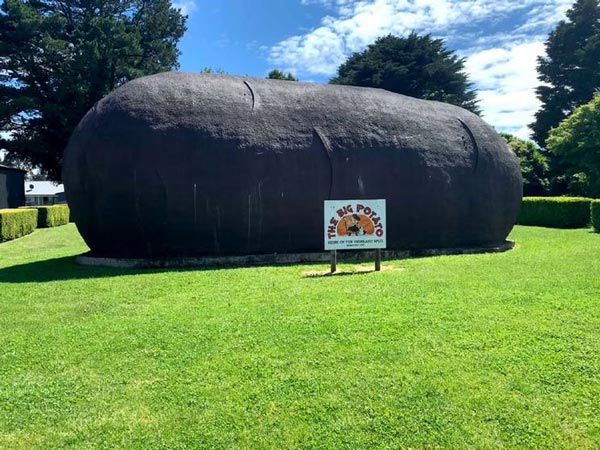
The Big Potato in Robertson, NSW. (Image: Neil Tait/Destination NSW)
17. The Big Kookaburra
Pokolbin artist Chris Fussel created this king-sized kookaburra out of recycled steel, aluminium and copper and the giant bird is now an iconic sculpture and centrepiece of Kurri Kurri’s Col Brown Park. It’s one of Australia’s more low-key, lesser-known Big Things, but it’s worth getting in a flap about: it’s absolutely beautiful.
The 4.6-metre-high Big Kookaburra takes pride of place in Kurri Kurri where the bird is used as an emblem for several Kurri sporting and community organisations. The artist utilised old car bonnets to fashion the feathers and airstrip lights to create the kookaburra’s eyes. It’s one of Australia’s most considered Big Things.
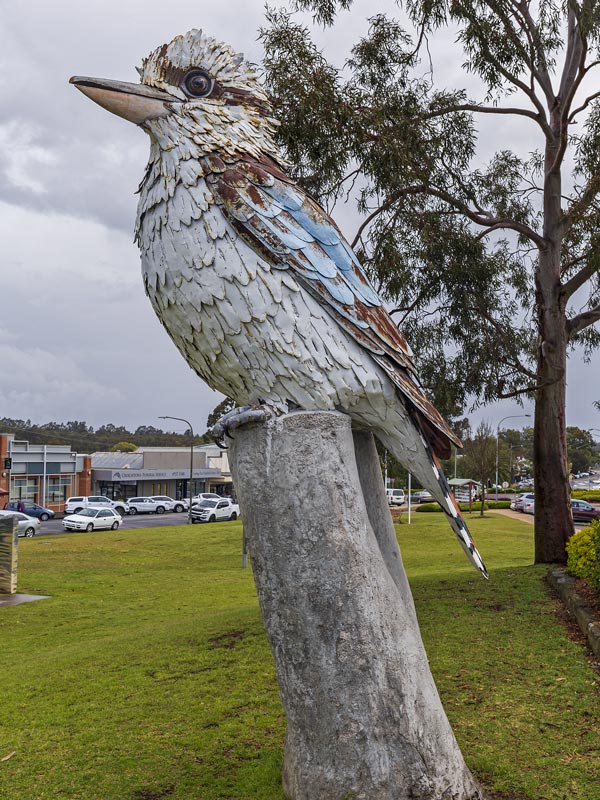
The Big Kookaburra in Kurri Kurri, NSW. (Image: Bidgee )
Northern Territory
The Northern Territory is undoubtedly home to the best “rock” in the country but it also has its share of Big Things to attract you to it. Here are the top three to add to your list.
18. Big Stubbie
You will clock up a lot of kilometres on the road between Darwin and Alice Springs in the Northern Territory. You are also most likely to be lured off the road for a pot of beer at the Larrimah Hotel in the Northern Territory thanks to the placement of the Big Stubbie, which does what it says on the tin.
The Big Stubbie is artfully placed next to a Pink Panther reclining in a chair outside the character-filled outback pub in Larrimah, which has one of the largest Second World War dirt airstrips in the country.
19. The Big Boxing Crocodile
Never smile at a crocodile. Unless it’s outside Humpty Doo, in the Northern Territory. There’s more than a grain of truth to the tale that the town was founded on a post-war folly: to transform the surrounding flood plains into rice paddies.
When that plan went belly up, the town designed to build a representation of life in Humpty Doo in the form of an eight-metre-high crocodile.
The Big Croc is made comical with the addition of a pair of boxing gloves just in case it needs more in its tool kit than its crushing jaws to defend its territory on the Arnhem Highway, some 40 kilometres from Darwin. The Northern Territory is also home to The Giant Jumping Crocodile in Wak Wak, and George the Big Crocodile in Darwin.
20. The Big Turtle
Artist Techy Masero, who is also behind the Big Barramundi (in Wanguri, not Normanton), created this mosaic masterpiece with help from local Indigenous artists. The four-metre-wide turtle is located in Garamanak Park near a community centre in the northern suburb of Lyons, in Darwin.
It’s one of the more obscure Big Things created by the Australian artist who was born in Chile and came to live in Darwin in 1985. Masero works mostly in cane and other natural materials, albeit on a monumental scale. You can learn more about Masero on a leaf mosaic path near the open-air cinema designed to celebrate Northern Territory women.
The Apple Isle gets our vote for the cutest Big Thing of them all in the form of a giant fairy penguin – one of two Big Things that made it into our pick of the most iconic in the state.
21. The Big Penguin
The aptly named town of Penguin in Tasmania comes into its own between the months of September and March, when a colony of fairy penguins descend on this corner of the island state’s north west. The birds are called fairy penguins because of their small size, and it’s wonderful to watch them parade past with their bluish plumage on show during breeding season.
The Big Penguin is made from fibreglass and cement and locals love to dress it up in military fatigues, to commemorate Anzac Day, and in a Santa suit during the festive season making the town one of the top spots to stop on a Tassie road trip . Penguin’s penguin theme also runs hot in the souvenir stores and in the penguin-shaped rubbish bins on the town’s foreshore.
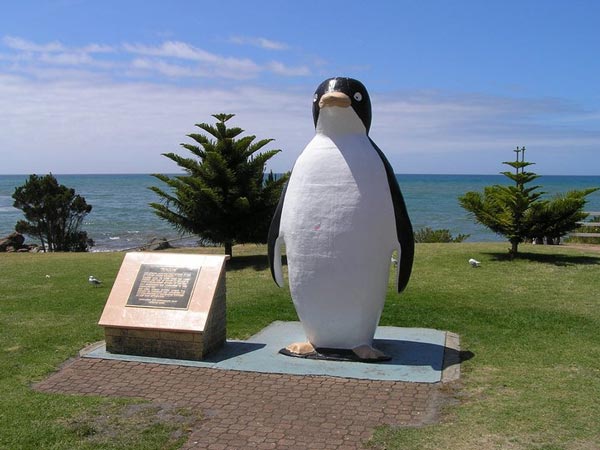
The Big Penguin can be found in the Tasmanian town of Penguin. (Image: @TheBigPenguin)
22. The Big Tassie Devil
There’s nothing comedic about the giant Tassie devil guarding the entrance to Trowunna Wildlife Park Sanctuary. In fact, it stands as a poignant reminder of the breeding programs in place at this privately owned park which has been at the forefront of conservation and education in the State since it first started caring for Tasmania’s native animals in the late 70s.
Wildlife conservation is indeed, a Big Thing at the park, at the foot of Cradle Mountain which also offers great scenery, walking trails and outdoor activities.
The list of Big Things in Victoria is long, but they’ve one-upped the other states and built a “Giant” thing in the form of Australia’s most beloved marsupial, a koala. Here, find five to put on your bucket list.
23. Giant Murray Cod
Keen anglers already in the know don’t need a Giant Murray Cod to alert them to the presence of the 11-metre-long blue-and-green Australian freshwater fish in the waterways that snake around Swan Hill, located on a bend of the Murray River between Robinvale and Kerang.
The 11-metre-long replica, dubbed the Giant Murray Cod, is actually a former movie prop from the 1992 feature film, Eight Ball , and it’s located near the Burke & Wills Moreton Bay fig tree, one of nature’s Big Things that is believed to be the largest tree of its kind in Australia.
24. Giant Koala
The soaring marsupial known as Sam was constructed in honour of the koala that made headlines the world over when it was photographed drinking from a water bottle offered by a firefighter in burned bushland in 2009. Located in Wimmera, in western Victoria, the giant marsupial is made from 12 tonnes of fibreglass, steel and bronze.
The Big Koala is located in Dadswell Bridge, between Horsham and Stawell, and is a top spot to break up a road trip as there is a restaurant, ice creamery and wildlife park located on the property.
25. The Big Strawberry
This enormous ode to the sweet soft red fruit so revered around the world brightens the darkest of days in Koonoomoo thanks to its eternally rosy disposition. The Big Strawberry , which survived a tornado in 2013, stands six metres tall and five metres wide and was a sweet collaboration between Competition Kayaks, which supplied the fibreglass, and Barry Dickson Paint & Panel, which rendered the sculpture Monza red.
This Victorian Big Thing is a draw for families who want to take their children strawberry picking. Order scones with strawberry jam and cream at the café and stock up on strawberry-themed souvenirs at the gift shop.
26. Big Ned Kelly
History buffs will stop dead in their tracks outside the Glenrowan Tourist Centre when they catch sight of the giant monument of Ned Kelly that nods to the outlaw’s suit of heavy armour forged from old farm ploughs. The rugged high country around Glenrowan is rich in gold rush and bushranger heritage and the Big Ned Kelly marks the site of the Kelly Gang’s last stand.
Visit the monument to learn more about the shootout that resulted in the deaths of three police officers who were murdered in Mansfield by the Kelly Gang.
27. Big Wine Bottle
Let’s get real: the town of Rutherglen is a magnet for oenophiles who are drawn to the region for its history and vineyards, not its oversized wine bottle. Regardless, the Big Wine Bottle stands like a beacon on the landscape, signalling the fact there are a growing number of award-winning cellar doors scattered around Tower Hill on the fringes of town.
This giant roadside attraction has a disused water tank on its top, which was originally the community’s second water supply. The Wine Bottle became a big thing in 1969 when a mesh top section was added to the wine bottle, which put it on the map as part of the town’s Winery Walkabout.
Western Australia
Australia’s largest state has its fair share of Big Things to brag about, but if you really want to get the kids excited to see a Big Thing on a road trip, then take them to the largest free-standing Big Lollipop in the world – and they can stock up on lollies while they’re there.
28. The Big Lollipop
“If you build it, they will come.” This quote is based on a line from Kevin Costner’s Field of Dreams but instead of building a baseball field, the owners of The Yummylicious Candy Shack, Belinda and Darrin Mcharge thought they’d suck it and see, self-funding The Big Lollipop in order to attract more tourists to this part of WA. Families are now suckers for Ravensthorpe, which has been home to the largest free-standing lollipop in the world since 2019.
29. The Big Orange
Fans of James and the Giant Peach by British author Roald Dahl will appreciate the fact the owners of Harvey Fresh went out on a limb in order to celebrate the citrus fruit grown in the surrounding orchards. Harvey now rests on a 10-metre-high tower at the Harvey River Estate and, for a small fee, you can climb up into the giant piece of fruit to discover information about the history of Harvey.
30. The Big Western Rock Lobster
Western rock lobsters are only found on the continental shelf off the Western Australia coastline. This is not a hands-off kind of sculpture. In fact, visitors often climb onboard the giant marine crustacean to get their photo taken. While the icon has become an attraction in its own right, don’t forget the real reason you’re in Dongara Port Denison: to scoff seafood.
Honourable Mentions
Of course, not all of Australia’s Big Things are well known. But we think there are some that simply cannot be ignored. Nyngan’s Big Bogan in NSW is the first to spring to mind. Complete with a mullet, stubbies and a Southern Cross tattoo, the five-metre-tall ‘Maaaaaate’ was unveiled in 2015. Nyngan, it is important to mention, is in the Bogan Shire.
In Tropical North Queensland, we’d like to give a shout-out to the Big Peanut, in Tolga, which looks like a Mr Potato Head on a kipfler. But it’s pretty big, so it counts.
The Big Dugong in Rockhampton also makes the cut because dugongs are quite possibly the most fantastically strange-looking animals in the Kingdom. And what could be better than a 22-by-12-metre version? The mammoth mammal is located at the Rockhampton Dreamtime Cultural Centre.
We’re also waiting, with much anticipation, to see The Big Chris, statue of Chris Helmsworth come to life in the township of Cowra, as part of a clever Cowra Tourism campaign to put the NSW town on the map. “Four stories tall with a beard like spun canola” is how tourism manager Glenn Daley described the proposed Big Thing. Sounds Chris-tastic.
LEAVE YOUR COMMENT
Cancel reply.
Save my name, email, and website in this browser for the next time I comment.
Comments (7)
Not many people are aware of the BIG WHEELBARROW in Port Hedland entrance into their Light Industrial Area of Wedgefield.
The big trout, Talbingo an oldie but a goodie.
Kate, Carla, you’ve outdone yourselves. This has to be my favourite “list of (insert whatever)” article on a travel website ever. I knew we had lots, but I didn’t know there were that many. That potato though…….if there wasn’t a sign in front saying it was “the big potato” …..it’s grey…….and shaped like a log…..
Wow loved the ones that are pictured
In Warrnambool, Victoria there is a Big Seal built for local legend Sammy the Seal.
Australia has great big idea and iconic statues. There are so many more to build. Tourism is a great way to bring people and money to country areas.
Fantastic details for many iconic sites to see and visit – even our Big Kiama Blowhole is an icon in itself – we hope to see you soon Carla!!
You might also like
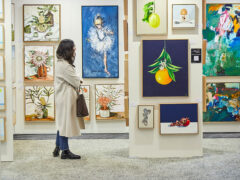
What’s on around Australia in August 2023
There’s no shortage of things to do in Australia. Here’s what’s on in August. There are countless amazing experiences to be had throughout Aust...

7 Griffith restaurants leading the way in farm-to-table dining
From paddock to plate, Griffith and the Riverina are at the forefront of the sustainable food movement. Griffith restaurants have always been one of ...

Where to eat, stay and play in Wagga Wagga
It may be known as the land of many crows, but Wagga Wagga and surrounds are fast evolving into the land of boutique stays, quality coffee, gourmet re...
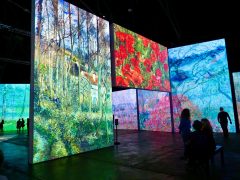
What’s on around Australia in June 2023
There’s no shortage of things to do in Australia this month. If anyone knows that it’s us, so here is what’s happening in your state this June. ...
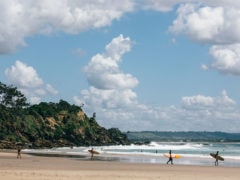
A Sydney to Byron Bay road trip itinerary
Driving from Sydney to Byron Bay is one of the most iconic drives in Australia. Here's how to make the most of the route over four days. The kind cli...
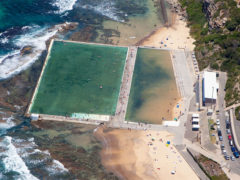
Where to eat, drink, stay and play in Newcastle
Your essential guide to all the best bits of NSW’s second city: from speakeasy cocktail bars to brunch spots and heritage-listed ocean baths. As ...

© Australian Traveller Media 2024. All rights reserved.

31 of the Most Iconic Places to Visit in Australia
Written By: The Planet D
Updated On: July 23, 2023
Australia is huge! Seeing it all in one trip probably won’t happen for most people. If you are like us, you’ll have to go back again and again. These iconic places to visit in Australia might help you know where to start when you travel next to the land down under.
Table of Contents
The Best Places to Visit in Australia
When you plan your trip, you must choose what you want to see and where you want to go. If you do have the time to drive around the continent spending a year or so in a campervan , you may be able to check off all the iconic places to see in Australia that cannot be missed.
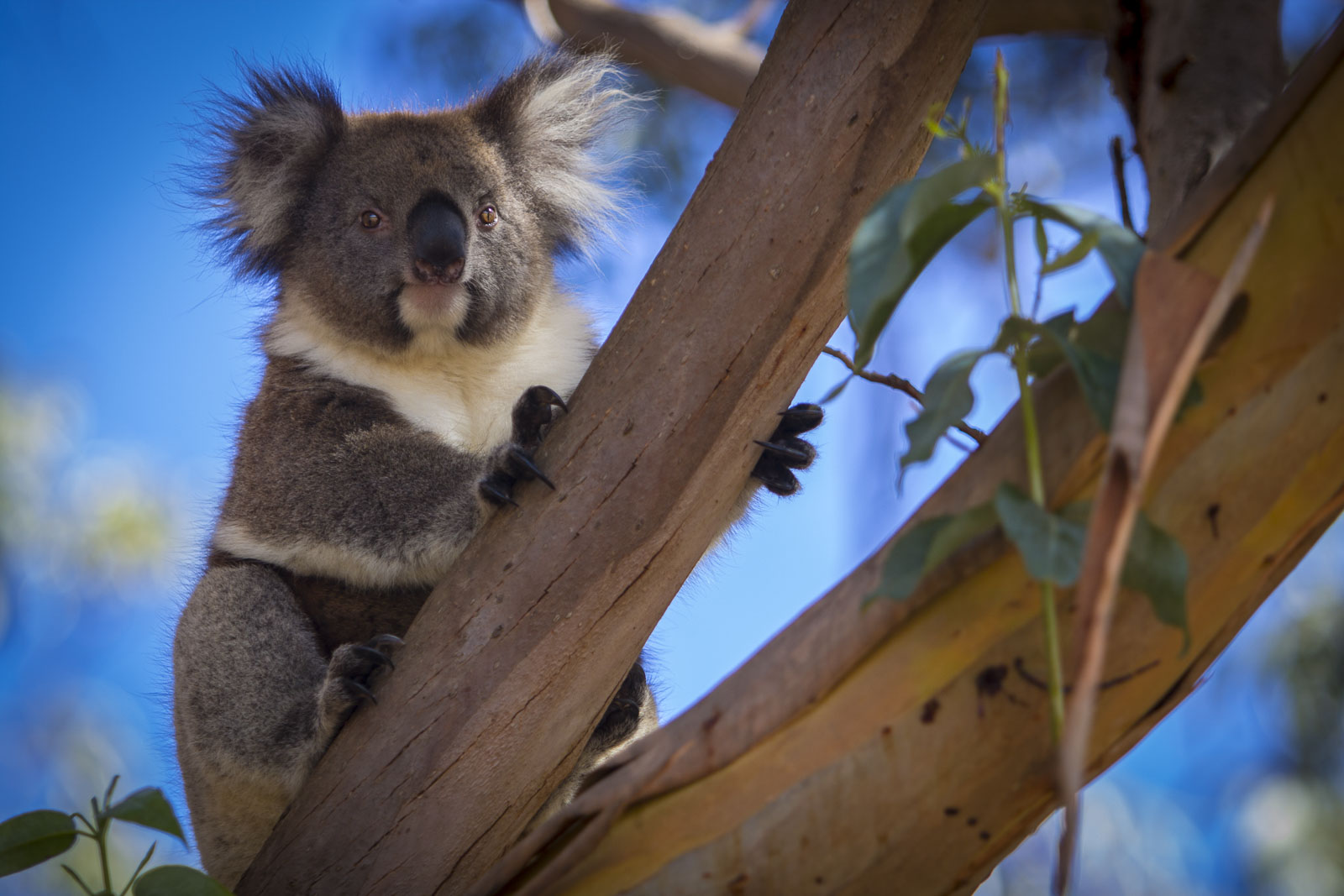
It may be the world’s smallest continent, but it’s ranked number 6 in the world by country size. So take your time, enjoy the ride, and check out all the amazing things to see in Australia. From Dreamtime walks to the heavenly apostles, the landmarks of Australia are awe-inspiring.
1. Great Barrier Reef
It may be Australia’s most famous attraction but with good reason! The Great Barrier Reef is one of the seven wonders of the natural world.
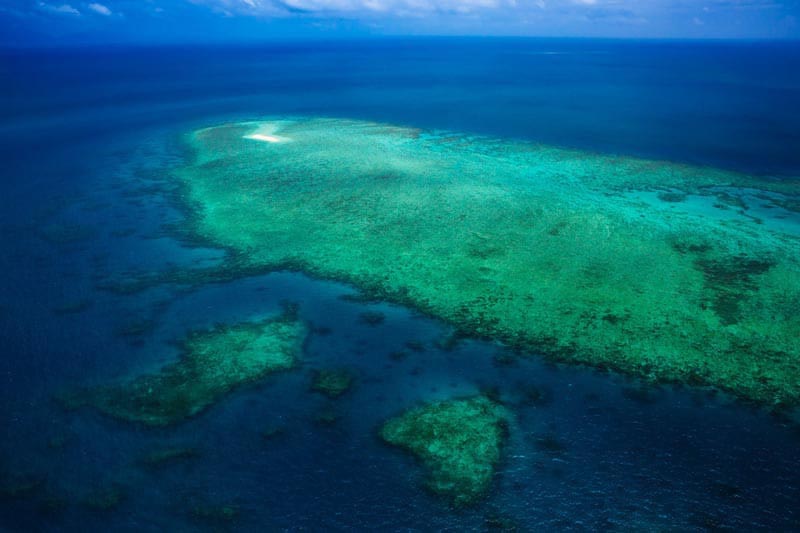
Stretching 3000 km across the coast of Queensland, the Great Barrier Reef is a diver’s dream. Whether you are an avid scuba diver , casual snorkeller or first-time underwater newbie, there is something for everyone at this popular tourist destination.
You don’t need to go scuba diving to enjoy the Great Barrier Reef. A scenic flight is a spectacular way to see the wonder of the world. You can go snorkeling or swimming on one of the platforms in the ocean and you can even take a discovery dive.
You can book a liveaboard dive boat vacation to go out to the most remote dive sites of the reef, take a helicopter tour over the impressive waters, or you can try your hand at diving with a helmet. One of our favourite experiences. Plan your trip to the Great Barrier Reef with FlightCentre
2. Daintree Rainforest
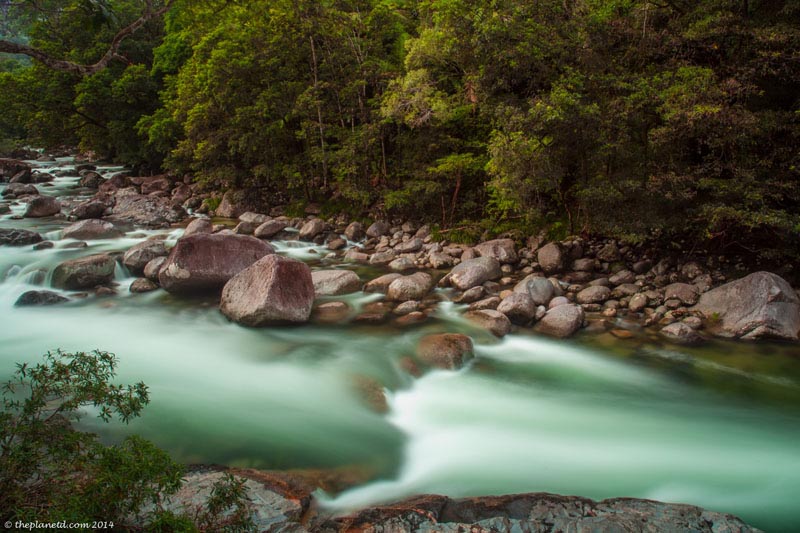
Located in Queensland , the Daintree Rainforest is one of Australia’s natural wonders. At 180 million years old, it covers 1200 square km and visitors can take a Dreamtime walk with an Indigenous guide from the Kuku Yalanji Tribe.
Stay in the rainforest at Silky Oak Lodge and relax in your treehouse listening to the sounds of the ancient forest. You can also do some paddleboarding on the Mossman River. Don’t worry, the local saltwater crocodiles don’t come that far inland.
This rainforest is filled with beauty with waterfalls, plenty of hiking trails and outdoor activities.
- Fun Fact : Daintree Rainforest is a UNESCO World Heritage Site and is twice as old as the Amazon Rainforest
3. Fraser Island
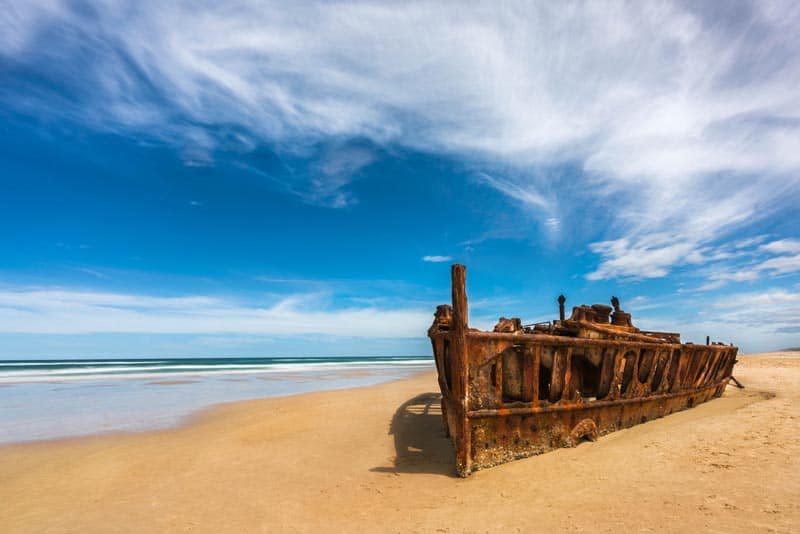
Fraser Island is one of the coolest Australian places to visit in Australia because of its 75-mile long beach! It’s one of the longest beaches in the world. Rent a four-wheel drive truck in the town of Noosa and start your adventure to one of the wildest drives you’ll ever have. It’s an island with sand dunes, dingos, tidal pools, and shipwrecks.
Oh and one more thing, drivers share the beach with airplanes! Yes, there is an airport right on the sandy shores. The white sand beaches of this island will take your breath away as you drive its coastline. There are hotels and resorts that you can book on the island to spend more time exploring. Read all about our trip at Fraser Island Tour – A 4X4 Adventure
4. Whitsundays
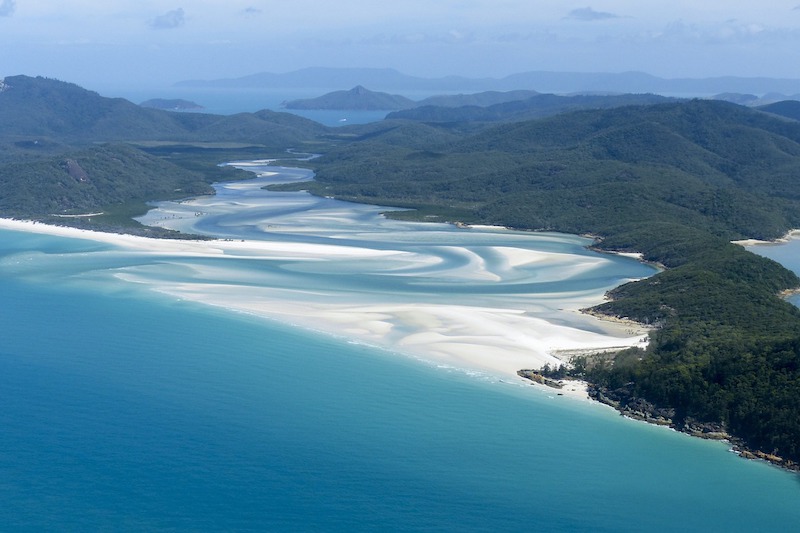
The Whitsundays are a group of 75 islands off the coast of Queensland. When visiting the Great Barrier Reef, you must spend some time here. These islands are located right in the heart of it! Beautiful white sandy beaches, swirl effortlessly with the turquoise water.
There are luxury resorts, sailing and snorkeling. A must stop is the largest and most famous of all the islands, Whitehaven Beach with pristine white sands made of silica beads stretching for 7km. Because this sand is made up of silica, it doesn’t get too hot making it the perfect beach for a walk.
5. Port Douglas
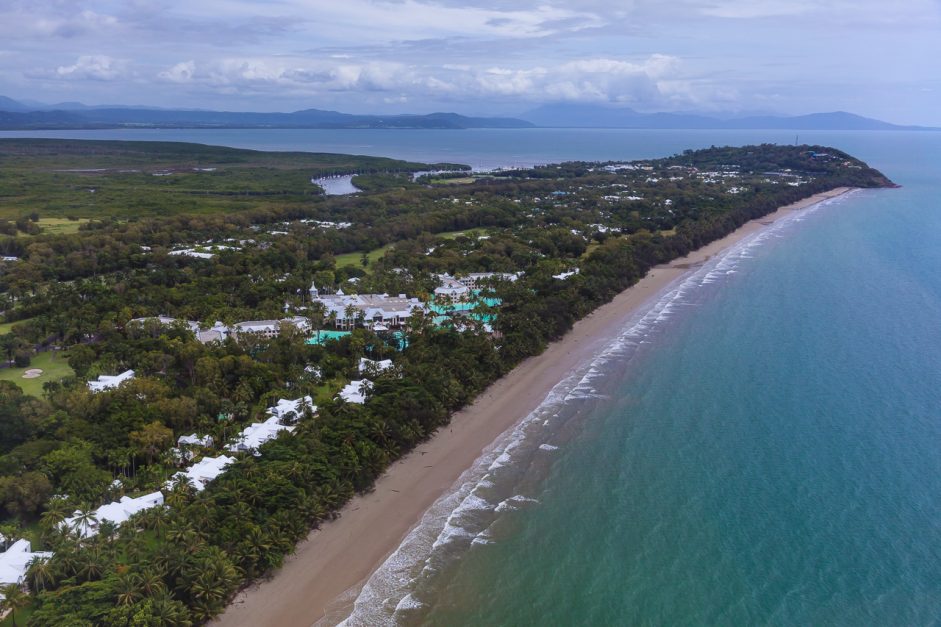
Port Douglas is a laid-back resort town in Queensland’s Tropical North. It’s the jumping off point for visiting the Great Barrier Reef and the Daintree Rainforest making it the perfect spot to spend a few days relaxing and exploring the beauty of Australia. Located along Australia’s most scenic coast, a road trip to Port Douglas is a must. See our s cenic flight from Port Douglas over the Great Barrier Reef.
Known as the gateway to Australia’s Great Barrier Reef, Cairnes is located about 1,700 kilometers north of Brisbane. Cairns enjoys a tropical climate and is nestled between the Coral Sea and the rainforests of the Wet Tropics, offering a unique blend of marine and terrestrial attractions.
As a destination, Cairns offers a multitude of reasons for tourists to visit. As well as its proximity to the Great Barrier Reef — a must-visit for snorkelers, divers, and marine life enthusiasts — Cairns also provides easy access to the Daintree Rainforest. You can take a scenic railway journey to the village of Kuranda, experience indigenous culture at the Tjapukai Aboriginal Cultural Park, or simply enjoy Cairns’ excellent restaurants, bustling markets, and lively nightlife. The city’s Esplanade, with its saltwater swimming lagoon and waterfront boardwalk, is another major drawcard.
7. Gold Coast
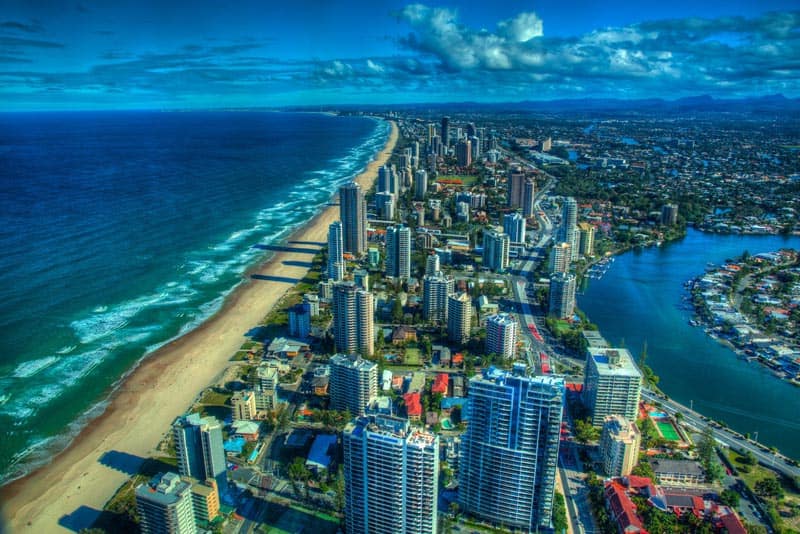
Home to the world-famous Surfer’s Paradise, the Gold Coast of Australia offers an endless stretch beach with outstanding surf breaks. Highrise resorts and condos line the sand while beachgoers enjoy the many eateries and dining options.
You can enjoy surf lessons or you can simply rent a bike and ride to Currumbin Beach and Burleigh Head to watch the pro surfers catch a wave. For a great view, go to the Skypoint Observation Deck to take it all in from above.
8. Twelve Apostles
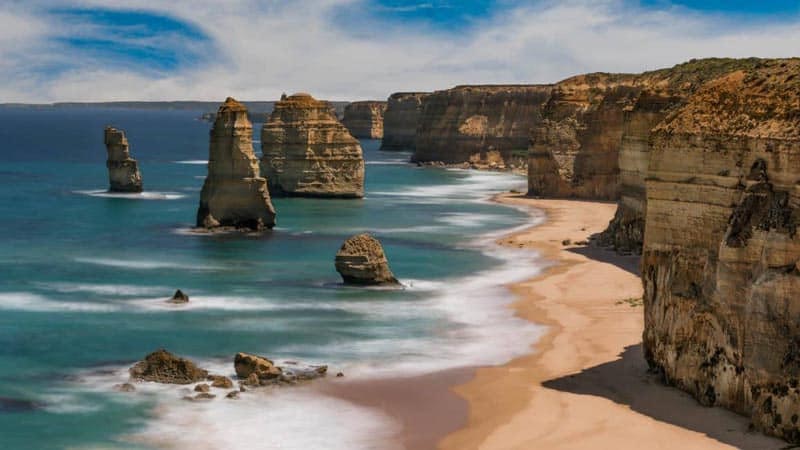
The Great Ocean Road is one of the most popular day trips from Melbourne. A Drive to the coast takes you to the incredible Twelve Apostles .
For us, the Twelve Apostles were the most awe-inspiring of places to visit in Australia. But to really experience this rugged coast, you must do the Great Ocean Walk. It takes you along the coastal route that is impossible to see from a car. If you can, make sure to take a helicopter ride over the Apostles to really take in its beauty.
9. Melbourne
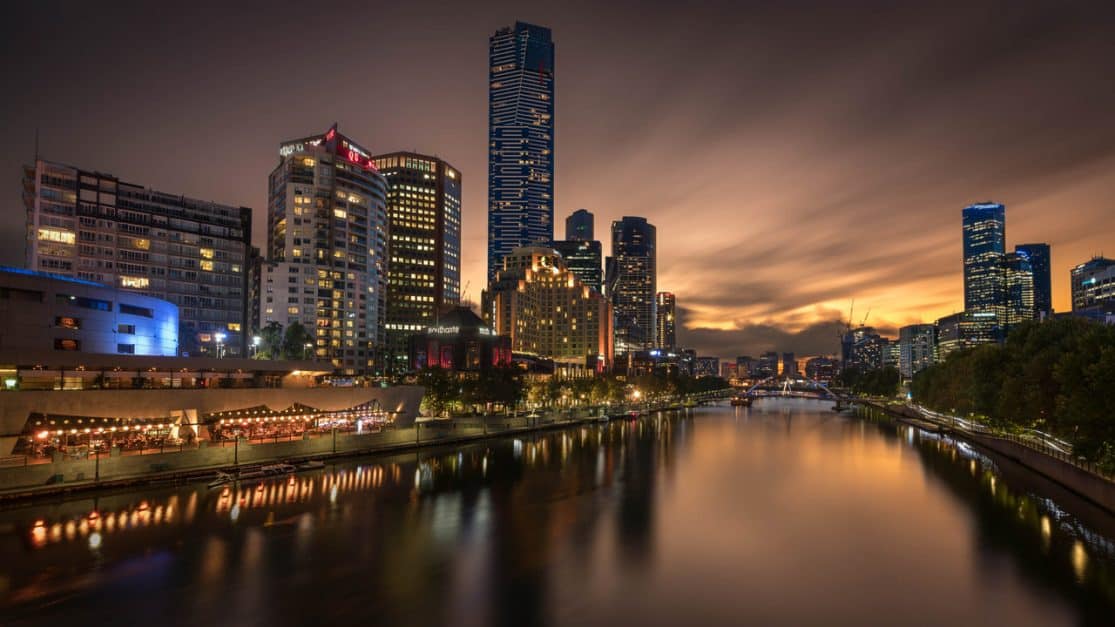
Melbourne is quite possibly the coolest city in Australia . I know it was our favourite. It has been named the most livable city in the world and it’s a great place for tourists too! Highlights include Queen Victoria Market, The Arcades and Secret Lanes, Eureka Square, Federation Skydeck and Graffiti Lane.
South Australia
10. kangaroo island.
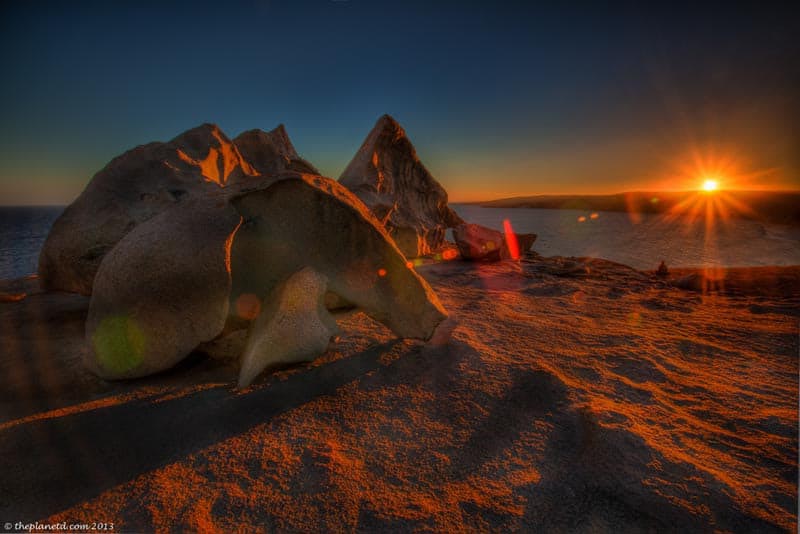
Kangaroo Island is located off the coast of South Australia and is an incredible place in Australia to tour for a few days. It is a spectacular wildlife haven for kangaroos, koalas, sea lions and seals, and pelicans. There is even a Birds of Prey rehabilitation center where you can watch a show and learn about birds that are indigenous to the continent.
The landscape is beautiful here and at sunset, you must see the Remarkables; granite boulders have been sculpted into unique formations over 500 million years. Kangaroo Island is also home to what is considered by many as the best beach in Australia.
11. Wilpena Pound
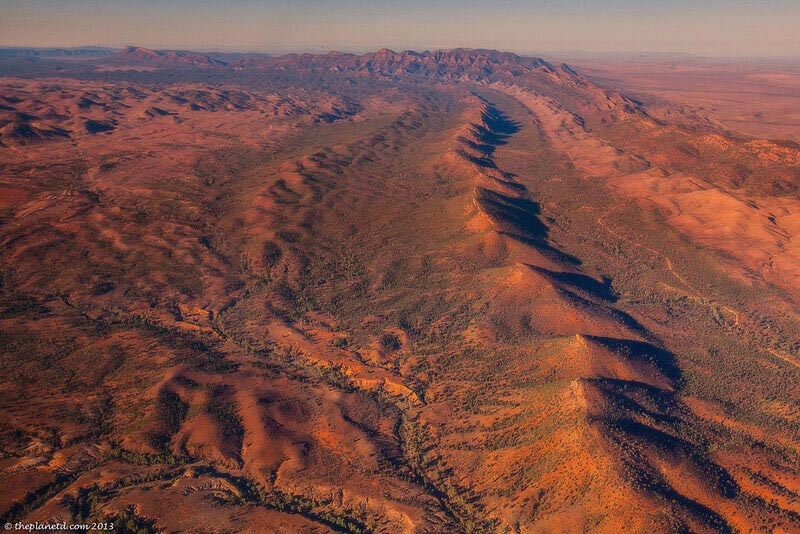
Wilpena Pound is a giant 80 Square kilometer amphitheater of rock that is simply astounding. Located in the Flinders Ranges of South Australia, it’s a 450 km drive from Adelaide. A good place to stay is inside the National Park that is set within the backdrop of the mountains. Flinders Ranges is 100 million years old and a tour of the ancient landscape is truly fascinating.
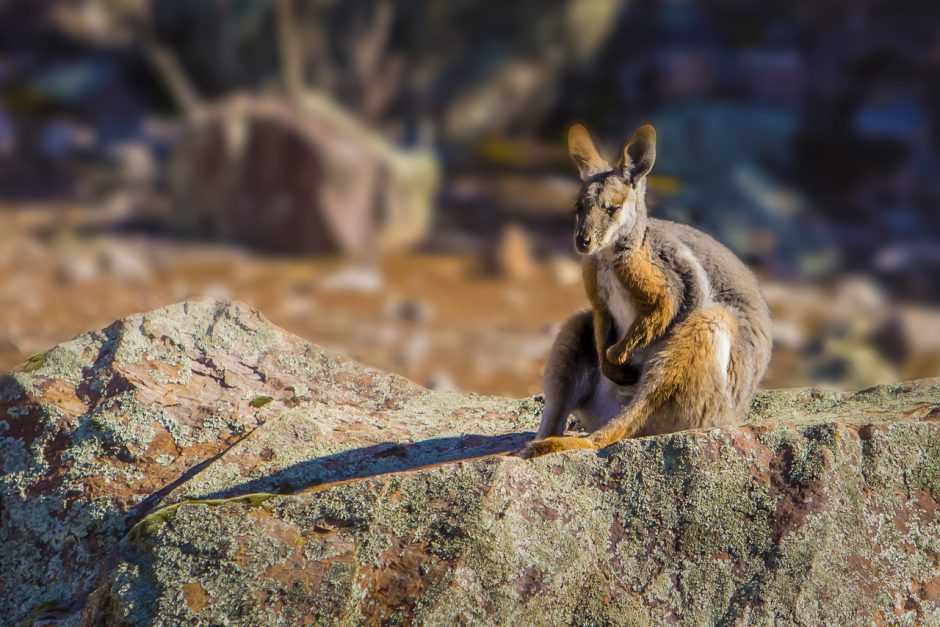
It is also one of the best places in Australia to spy the endangered yellow-footed rock wallaby. Check out our visit to the Flinders Ranges and Wilpena Pound
12. Barossa Valley
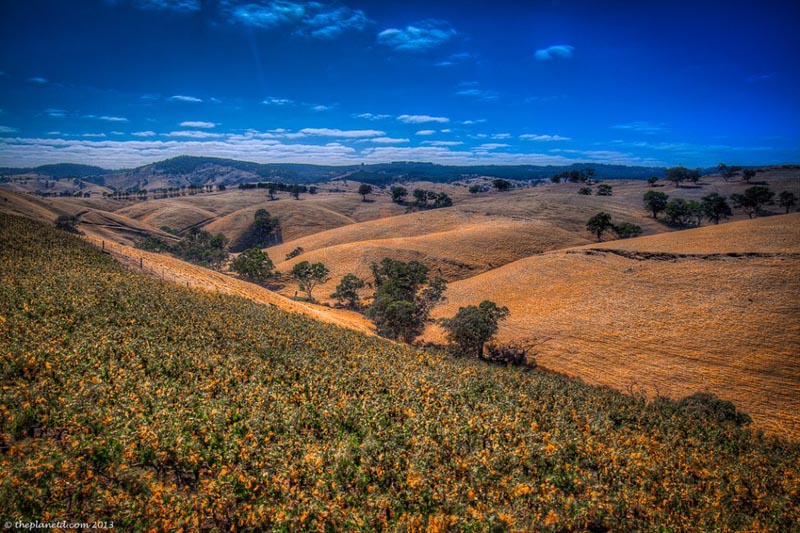
Barossa Valley is home to Australia’s most famous vineyards. Here you can visit wineries such as Wolf Blass, Lehmann and Penfolds just to name a few. A tour through the valley will take you through gorgeous countryside and it is best to hire a driver so you can truly experience all the wines of Barossa. Located an hour outside Adelaide, it is a beautiful region to spend a few days.
South Australia boasts many Australia’s best wine regions outside of the Barossa Valley including, MaLaren Vale, Adelaide Hills and Clare Valley.
13. Burra Homestead
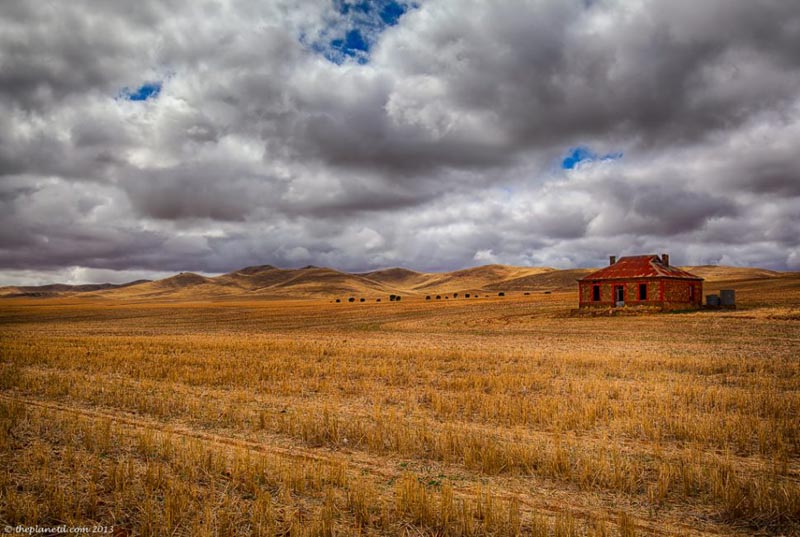
Made famous by Midnight Oil’s record album cover Diesel and Dust, the Burra Homestea d has become an iconic stop for photographers in Australia. The homestead was abandoned by homesteaders years ago and still stands alone and empty by the side of the road. It’s easy to miss and we made quite the detour just to see it. Being huge fans of music, we just had to see this with our own eyes.
14. Lake Gairdner
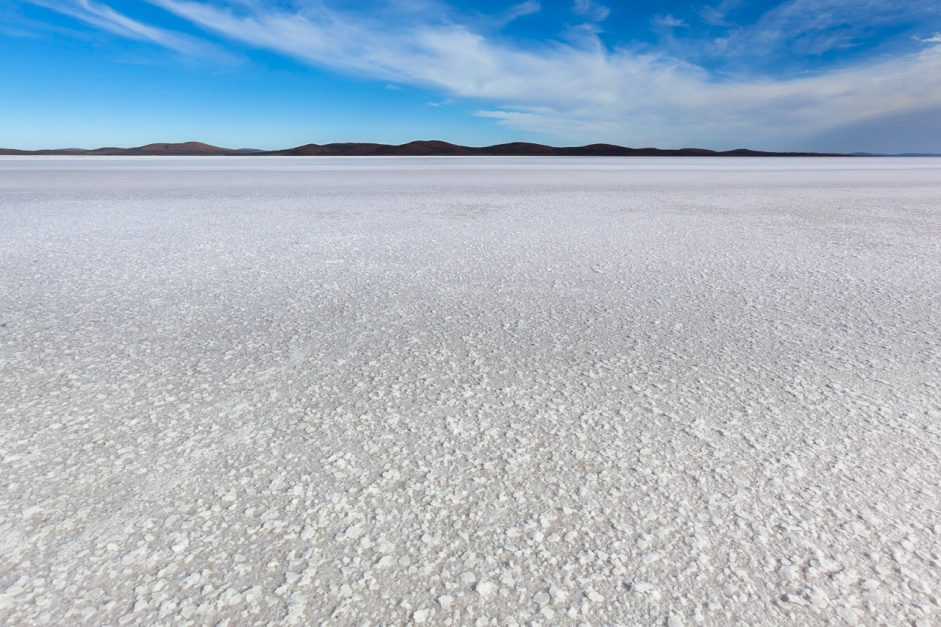
Lake Gairdner is a Salt Lake in the Gawler Ranges of South Australia. It feels as if you have stepped on another planet when you visit the lake. The lake itself is an impressive sprawl of white landscape but being surrounded by the red hills of the Gawler Ranges make for the picture-perfect spot.
New South Wales
15. sydney opera house.
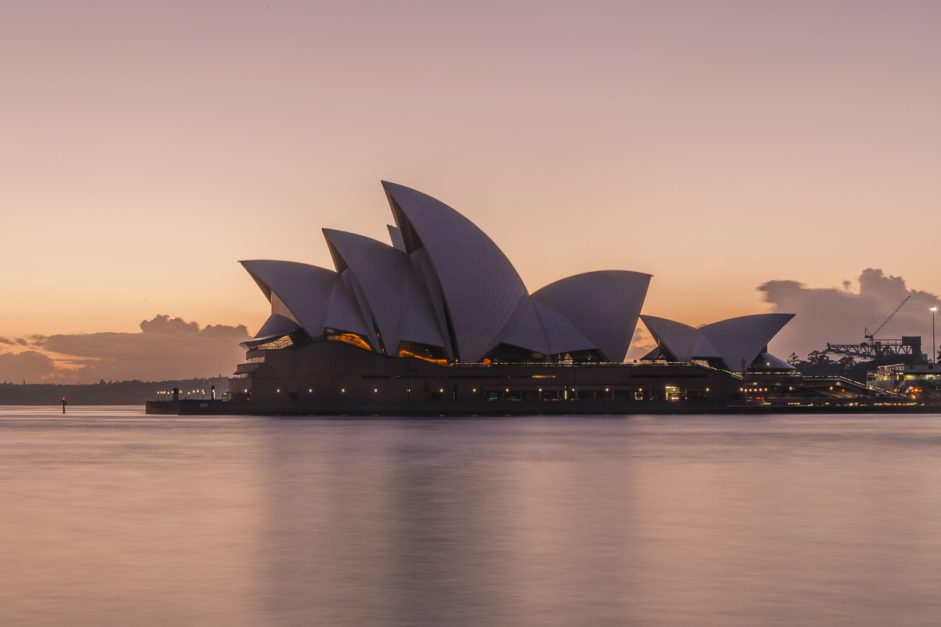
It’s definitely Australia’s most iconic building and seeing the Sydney Opera House dominate the Sydney Skyline does not disappoint. The Sydney Opera House opened in 1973 and has become Australia’s top tourist attraction.
We never went inside the opera house when visiting Sydney, but walking around it and taking in the views from the waterfront will remind you why this is one of the most iconic landmarks in the world.
- Side Note : I hear they are fixing the acoustics of the Opera House, so perhaps when we are back in Sydney, we’ll catch a concert.
16. Blue Mountains
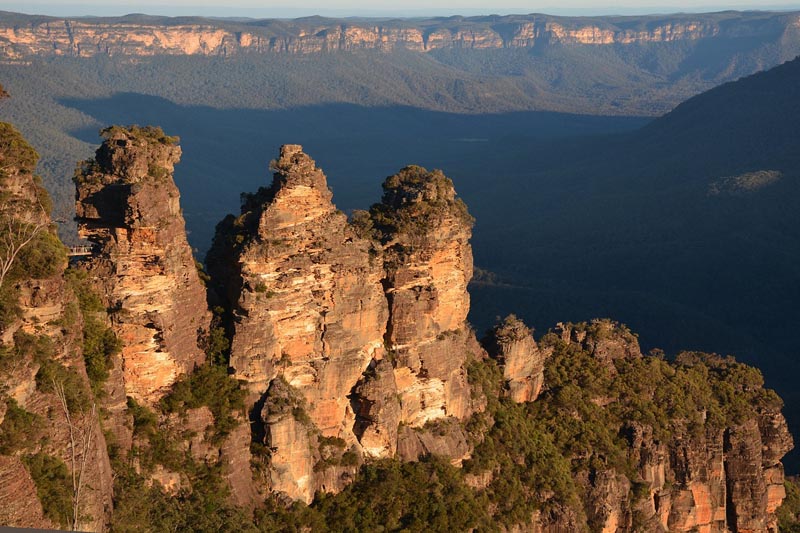
Located just 50km (32 miles) from Sydney, the Blue Mountains are another famous view that attracts numerous visitors. The Three Sisters are the most iconic view of the Blue Mountains. Echo Point lookout offers an impressive view of the three sisters overlooking the Jamison Valley.
17. Sydney Harbour Bridge
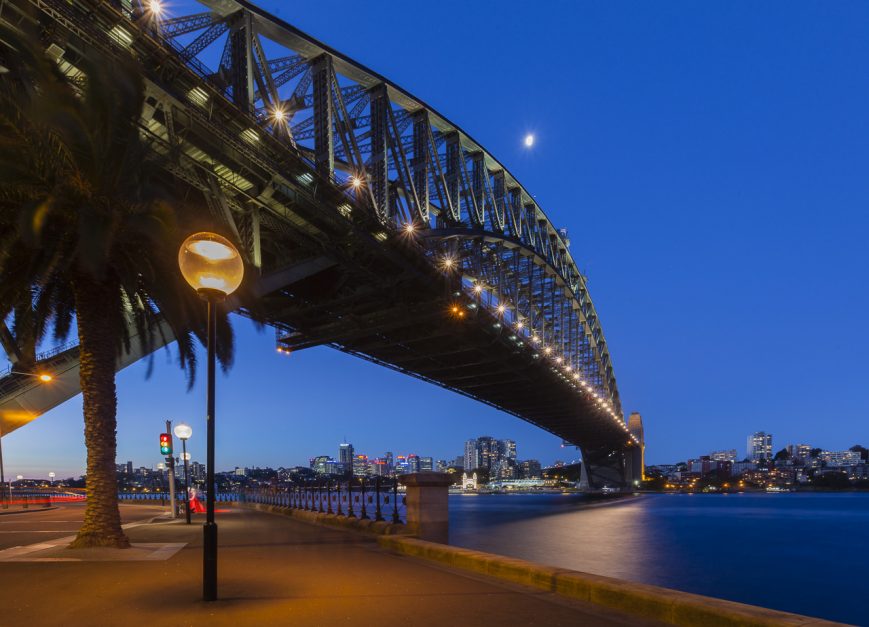
Next, to the Sydney Opera House, the Sydney Harbour Bridge is another of the city’s iconic landmarks. It connects the CBD to the North Shore and is the biggest steel bridge in the world.
If you really want a thrill, you should do the Sydney Harbour Bridge Climb. We ended up doing the Harbour Bridge Climb in Brisbane which was awesome, but I wish we mustered up enough energy to include Sydney’s Bridge too!
18. Bondi Beach
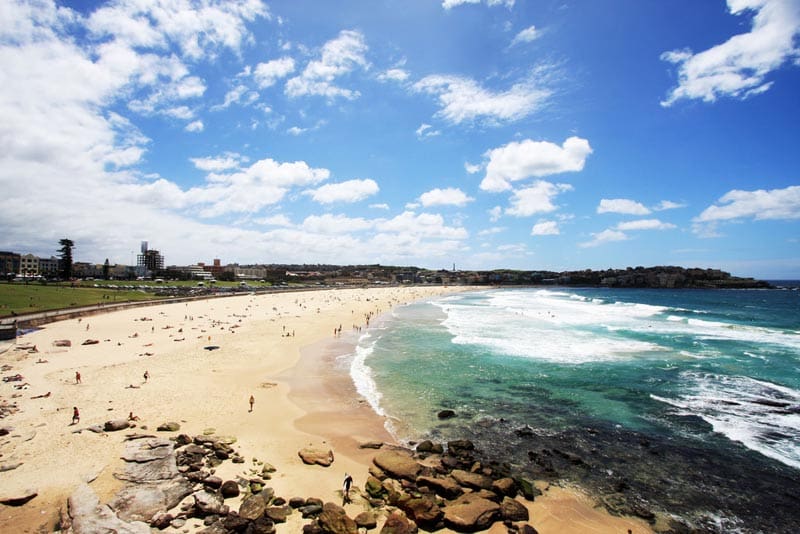
No visit to Australia would be complete without a stop at Bondi Beach. Located just 7km from Sydney’s central business district, it is one of Australia’s most iconic and celebrated beaches.
The beach itself, with its golden sands and turquoise waters, is an irresistible attraction. Known for its reliable surf, Bondi Beach draws surfers from around the globe, while the wide sandy stretch also provides ample space for sunbathing, beach volleyball, or simply enjoying the ocean view. The Bondi Icebergs Pool, a stunning ocean pool at the southern end of the beach, offers a unique swimming experience, with the waves of the Pacific Ocean crashing over its sides.
Bondi Beach isn’t just about sand and surf; it’s also a hub for dining and shopping. Campbell Parade, the main street running parallel to the beach, is lined with trendy cafes, award-winning restaurants, and boutique stores. The beach is also the starting point for the scenic Bondi to Coogee coastal walk, which takes in some of Sydney’s most stunning ocean views.
19. Byron Bay
Nestled on the northeastern coast of New South Wales, Byron Bay artfully combines natural beauty with its laid-back culture. The town’s location, just about 800 kilometers north of Sydney and 170 kilometers south of Brisbane, Byron Bay is easily accessible from the major city centers. Framed by pristine, golden-sand beaches and the sparkling Pacific Ocean, Byron Bay’s geography is spectacular.
Byron Bay isn’t just renowned for its captivating landscapes, if you’re an outdoor lover you can surf the world-class breaks, kayak with dolphins, or embark on a trek to the iconic Cape Byron Lighthouse for a panoramic view of the bay.
The Outback
20. south, west, north, and east australia.
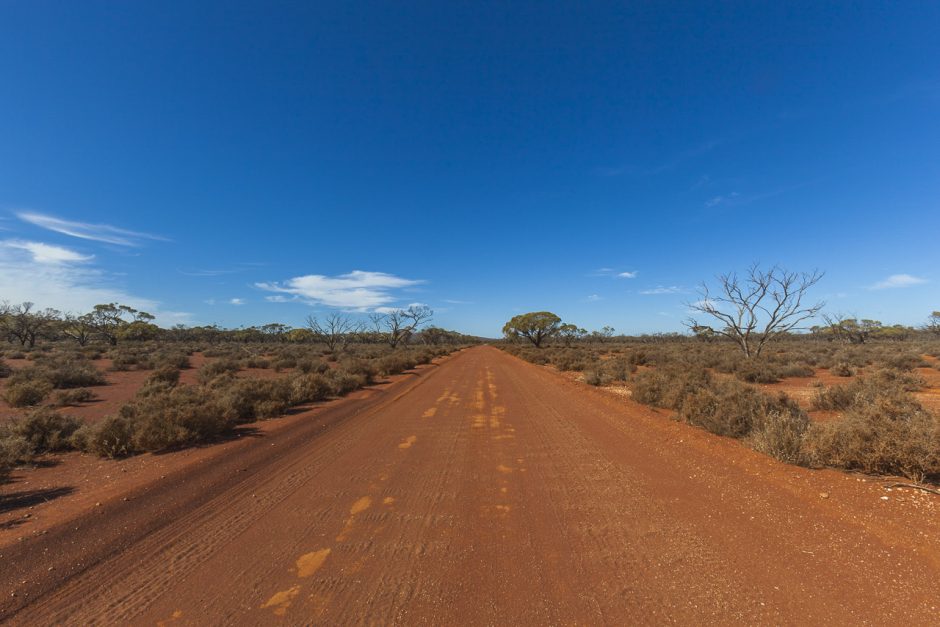
The Outback covers a huge expanse of Australia touching nearly every state of the country. When visiting Australia, you cannot miss a trip to the Outback. We took a multi-day journey in South Australia with Gawler Ranges Wilderness Safaris and had the chance to truly experience all the wonders of Australia’s famous Outback.
From salt lakes to red sands and rock formations, you truly feel like a pioneer. While it is dry and arid, people do live on the Outback and there are homesteaders raising sheep among the kangaroos and emus.
Northern Territory
21. uluru-kata tjuta national parks.
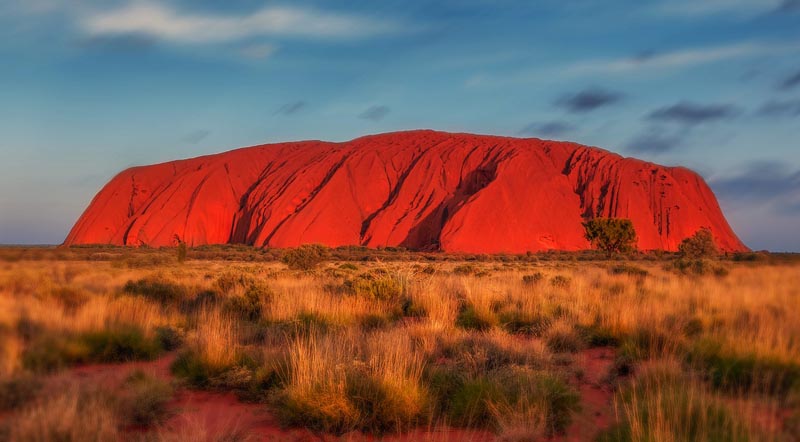
One of the most famous sites of the Outback is Uluru (also known as Ayers Rock) near Alice Springs. A UNESCO World Heritage site, Uluru is sacred to the indigenous people of the area. Standing 348 metres high it makes for an imposing site in contrast to the flat desert landscape. Spanning 3 1/2 km long and nearly 2 km wide, it is a popular stop on overland tours.
22. Kata Tjuta
The massive sandstone domes of Kata Tjuta (The Olgas) are particularly striking, rising majestically from the flat desert landscape and changing hues with the passing of the day. The park offers numerous walking trails, ranging from leisurely walks to challenging hikes, that give visitors the opportunity to explore these wonders up close and experience the area’s rich biodiversity.
The cultural tours led by the Anangu guides provide deep insights into the ancient traditions, stories, and customs associated with these sacred sites, making a visit to the park a truly enriching experience.
23. Kakadu National Park
Kakadu National Park is a UNESCO World Heritage site, located in the Top End region of the Northern Territory. Roughly 170 kilometers southeast of Darwin, the park covers an impressive area of around 20,000 square kilometers, making it the largest national park in Australia and about half the size of Switzerland.
The park is known for its diverse landscapes that range from wetlands and floodplains, to rugged escarpments and arid regions, creating a haven for a wide variety of wildlife. It’s home to over 280 bird species, numerous reptiles, and a large variety of fish.
Kakadu is also rich in Aboriginal culture, with rock art sites dating back thousands of years. Ubirr and Nourlangie are among the most visited rock art sites, where visitors can learn about the ancient indigenous culture and the spiritual connection to the land.
There are numerous guided tours available to explore the park and many walking trails that range from easy strolls to challenging hikes. One can also take a scenic flight over the park or a river cruise to witness its grandeur from different perspectives.
Perched at the top end of Australia’s Northern Territory, Darwin is a captivating blend of modernity and untamed wilderness. This cosmopolitan city, strategically located on the Timor Sea offers the chance to immerse in indigenous culture and heritage. Nature lovers will be drawn to the city’s proximity to world-renowned national parks like Kakadu and Litchfield, which are brimming with diverse wildlife, stunning waterfalls, and dramatic landscapes.
For those in search of adventure, there’s an array of activities including cruising along the Mary River wetlands to spot saltwater crocodiles. And history buffs will be interested in diving into the city’s turbulent history at the Museum and Art Gallery of the Northern Territory.
Western Australia
25. hamelin bay stingrays.
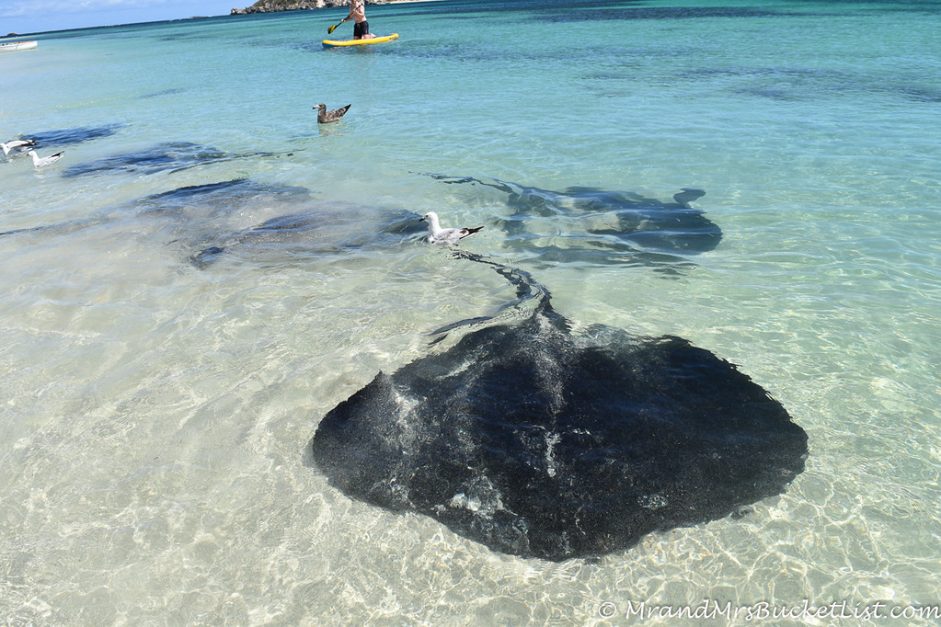
According to Mr. and Mrs. Bucketlist, there is no better place to see stingrays than in Hamelin Bay. Located in the Margaret River Region, local stingrays frequent these waters to feed off local fishermen. The stingrays are so friendly, you can snorkel with them.
Plus, Hamelin Bay is picture perfect, so it’s a beautiful place to spend some time. Read about all the wildlife encounters you can have in Western Australia here by Mr. and Mrs. Bucketlist
26. Pinnacles
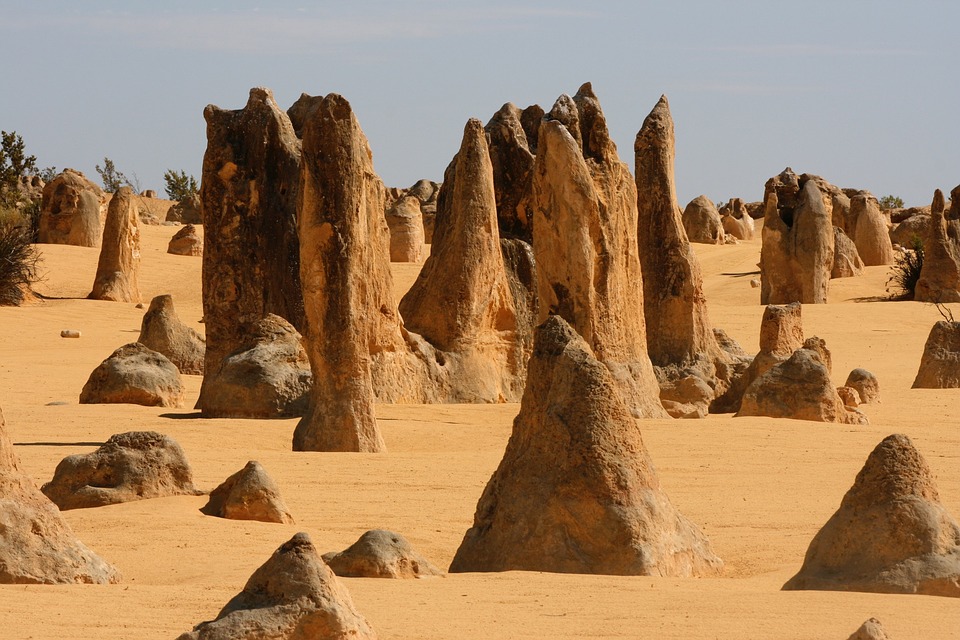
If you are into unique landscapes, a visit to the Pinnacles of Nambung National Park is in order. Located about 200km from Western Australia’s capital, Perth, the Pinnacles are another one of those fascinating places to see in Australia.
The formations range to from heights of short stumps to pillars reaching 3 metres high, the Pinnacles are ancient formations formed when the landscape was underwater.
27. Cable Beach
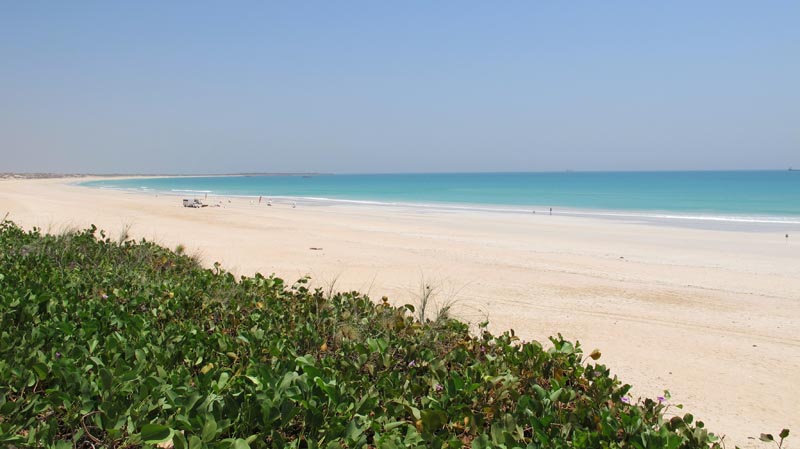
Cable Beach is that place where you’ve seen all those images of camels walking in a silhouette at sunset, but probably never knew where it was. It isn’t Australia’s longest beach, but at 22km in length, it is nothing to sneeze at.
There are many tour companies that offer camel rides along the beach at sunset. Camels arrived in Australia from India in the 1800s to transport gear overland. The harsh Australian landscape proved to be a better environment for camels than horses and they helped shape the history of the continent.
28. Kimberly Region
The Kimberley region is one of Australia’s hidden treasures, located in the remote northern part of Western Australia. This vast, rugged wilderness area spans over 420,000 square kilometers, stretching from Broome in the west to Kununurra and Lake Argyle in the east, and from the Timor Sea in the north to the Great Sandy and Tanami deserts in the south.
The Kimberley is an adventurer’s dream, offering a wealth of unique and exhilarating experiences. It’s known for its breathtaking landscapes, ranging from dramatic gorges and waterfalls to ancient rock formations and lush rainforests. One of the region’s most iconic destinations is the Bungle Bungle Range in Purnululu National Park is known for its striking beehive-shaped towers. For those seeking aquatic adventures, there’s the opportunity to cruise the stunning Horizontal Falls or explore the bucolic waterways of the Ord River. The Kimberley is also steeped in indigenous history, with numerous sacred Aboriginal sites and some of the oldest rock art in the world.
29. Rottnest Island
Rottnest Island, affectionately known as “Rotto”, is a small island located just off the coast of Western Australia, about 19 kilometers west of Fremantle. It is easily accessible by a short ferry ride from Perth, the state’s capital, and serves as a popular holiday destination for locals and international tourists alike.
The island is renowned for its beautiful beaches and secluded coves, perfect for swimming, snorkeling, and surfing. With its vehicle-free policy, cycling is a popular way to explore the island’s scenic paths and trails. One of the island’s most famous residents is the quokka, a small marsupial found only in Western Australia. These adorable creatures are known for their friendly demeanor and photogenic smiles.
30. Wine Glass Bay
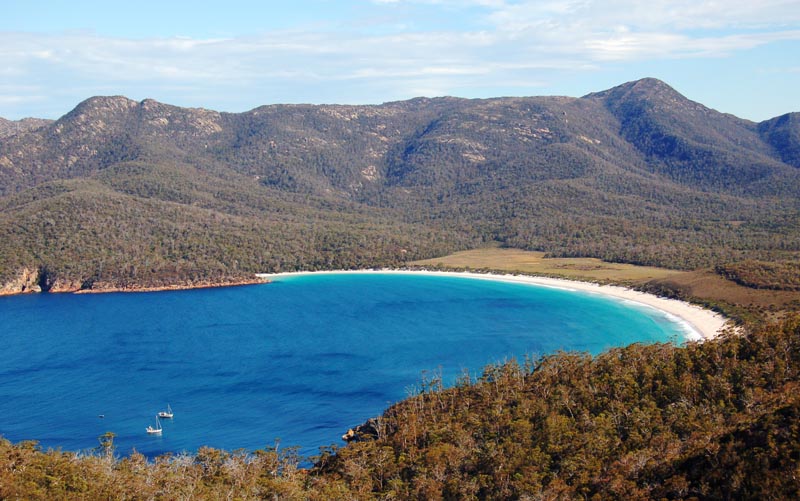
We haven’t been to Tasmania yet, but you cannot include an Australia Guide without mentioning Tasmania. We nearly went once two years ago and did a lot of research of top places to see in Tasmania. From Cradle Mountain to Hastings Caves and a chance to spy the Tasmanian Devil, it seems like the perfect off the beaten path destination.
We’ve had so many friends share their favourite places on Instagram, and the one place the stands out to us is Wine Glass Bay. We’re suckers for beautiful beaches.
31. Maria Island
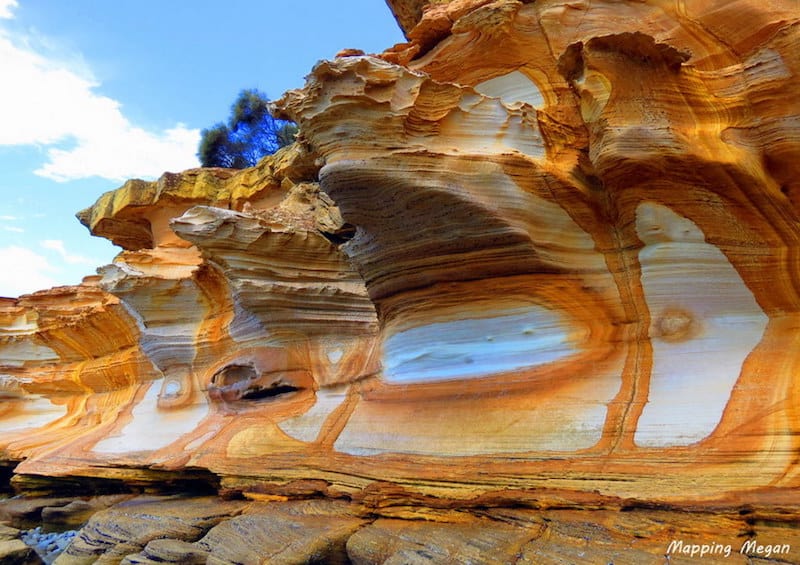
Mapping Megan wrote an article for us about Maria Island located off of Tasmania. Her photo of these Wave Rocks caught our attention.
As Megan stated in her article:
“ We also took in the phenomenal Painted Cliffs – spectacular sandstone cliffs with wonderful honeycomb patterns formed through staining by iron oxide. While this kind of rock formation is not uncommon, it is rare for it to be so exposed and accessible for tourism. A 2 and a half hour hike from the main port in Darlington, the cliffs weren’t overrun by tourism as we had expected. In fact, there were only one or two other people exploring the area when we arrived.”
And there you have it! A list of the most amazing places to visit in Australia as well as a few we have yet to explore, but have been on our list for years!
Like Canada, India, China and The United States and Russia, Australia is massive and you cannot see it all in a lifetime, but it is certainly fun to try!
Disclosure: This post is brought to you by FlightCentre , all opinions remain our own.
- The Best of Kangaroo Island
- G’Day Outrageous Australian Stereotypes Debunked
- Where to Stay in Melbourne a Guide to the Best Neighbourhoods
- See our Full Australia Travel Guide for Travel Tips and Advice
If you enjoyed this article save it to Pinterest to help you plan your trip to see all of the best places to visit in Australia!
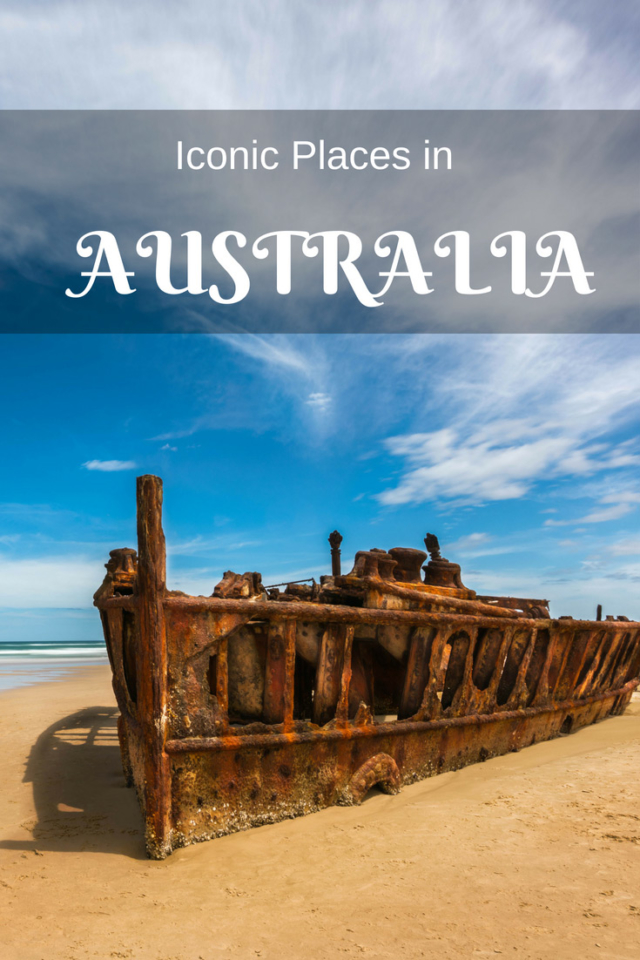
Travel Planning Resources
Looking to book your next trip? Why not use these resources that are tried and tested by yours truly.
Flights: Start planning your trip by finding the best flight deals on Skyscanner
Book your Hotel: Find the best prices on hotels with these two providers. If you are located in Europe use Booking.com and if you are anywhere else use TripAdvisor
Find Apartment Rentals: You will find the cheapest prices on apartment rentals with VRBO .
Travel Insurance: Don't leave home without it. Here is what we recommend:
- Allianz - Occasional Travelers.
- Medjet - Global air medical transport and travel security.
Need more help planning your trip? Make sure to check out our Resources Page where we highlight all the great companies that we trust when we are traveling.
You May Also Like
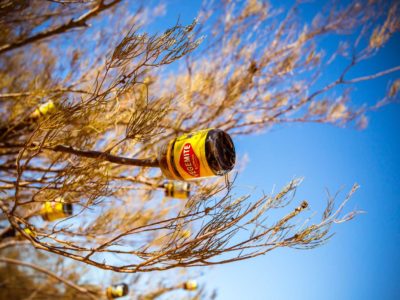
Australian Food: 24 Australian Dishes You Have to Try
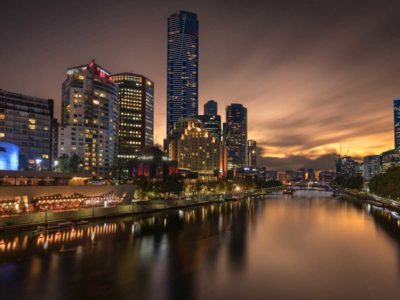
The Best Things to do in Melbourne, Australia
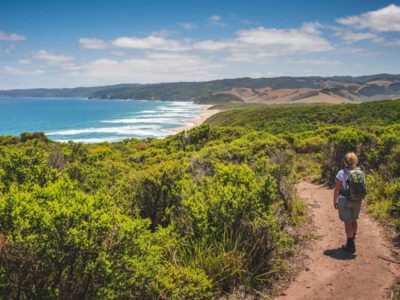
10 Fun Facts About Australia
About The Planet D
Dave Bouskill and Debra Corbeil are the owners and founders of The Planet D. After traveling to 115 countries, on all 7 continents over the past 13 years they have become one of the foremost experts in travel. Being recognized as top travel bloggers and influencers by the likes of Forbes Magazine , the Society of American Travel Writers and USA Today has allowed them to become leaders in their field.
Join thousands of others who get our monthly updates!
Leave a comment cancel reply.
Save my name, email, and website in this browser for the next time I comment.
27 thoughts on “31 of the Most Iconic Places to Visit in Australia”
This engaging blog article from The Planet D showcases some of the best places to visit in Australia, providing an enticing glimpse into the country’s diverse landscapes and attractions. As an experienced traveler with a passion for exploring new destinations, I found this article to be both informative and inspiring. The authors’ firsthand experiences and stunning photography bring each location to life, offering valuable insights and practical tips for planning an unforgettable Australian adventure. From the bustling cities of Sydney and Melbourne to the remote beauty of the Outback and the pristine beaches of the Whitsunday Islands, this comprehensive guide caters to every traveler’s interests and preferences. Whether you’re seeking adrenaline-pumping adventures or tranquil escapes, this article serves as a valuable resource for planning your next trip to Australia.
Love seeing some of my favourite Western Australian locations included in this list! A day trip to Rottnest Island should be on everyone’s bucket list when visiting Perth especially.
Thank you for what you have shared with me. As an avid traveler, reading these tips will give you ideas for your upcoming trip to beautiful Australia.
Thanks for providing such a great post
Your work impress me to visit in Australia, I hope one day! Thanks a lot.
Great Country, with a big and beautiful city and yet also has this scenic view also. We have more options to go to Australia because we are of this beautiful scenery and also what you can get in the city. Thanks for sharing incredible posts that only a few know.
Wonderful word and amazing suff
I think that Australia is really a beautiful place to have your self-relaxed and just get lost in the beauty of nature. It is definitely on my bucket list.
Great cross section of the best places to see in Australia. Really relate to 7. Twelve Apostles! We drove a BMW 240i convertible (with the roof down) along the Great Ocean Road late last year. It’s a great way to experience this beautiful part of Australia.
I love this so much! I’m from Australia and always try to tell people that you’ll find the real beauty outside of the cities and these places are exactly what I mean. Cable beach is probably my favourite place on Earth and I love how you put the pinnacles in there too. This was a great read and 100% agree with everything said in it
Very iconic! Australia really one of the best country to travel because of it wonderful sites that will surely take your breath away.
Nice Narration. Australia is the best travel destination having lovely places all around. I went to Queenstown last year for the Christmas Holidays. Really Enjoyed a lot. Thanks for the nice info, I love to visit again
This is so amazing, I wish I could visit and see all of this wonderful site in Australia someday.
Yes you are right Australia is the most beautiful country here you find most amazing places
Australia – The place where Kangaroos live. These stunning pictures made me to go for this summer with my colleagues and friends. Thank you for Nice narration .
Hamelin Bay sounds like a dream. Australia tops my bucket list. Thanks for sharing
Hello, I’m Ellen Smith. I was reading this blog. This is a nice blog and Images are posted by you in this blog there’s nice. I think this is very usefull information for visit australia’s most iconic places.
The way you wrote everything that’s so good. Thanks for sharing this with us. Great information and explain everything properly about beautiful places.
I only managed to visit about 3-4 places from your list! I hope you haven’t been to all either 😉 Whitsundays and the Great Barrier Reef are definitely on my go-to list for next time!
This is such a detailed and exceptional list of places to visit in Australia, Dave and Deb! I hope that one day I’ll have a chance to explore each one of these places, especially Fraser Island. How many days would you recommend spending on Fraser Island?
It’s really awesome, I am planning a trip to Australia and by read your blog I have get complete knowledge of this place. I will must visit all these places
Australia located near from Indonesia but along this time, I only know Melbourne, I have not visit the places have You listed. it is amazing!
hope much sometime can visit those places.
Thank You for your information
Australia is a great place to spend holidays!! Awesome list of places in Australia. I think i need to visit all these places as all the places are looking very attractive. i can’t wait to go to this places! So stunning pictures you captured.
I like Uluru. It is very special
Thanks for sharing this post this is really very nice and amazing. I would love to explore Australia and Queenstown is my favourite place to explore. I have heard much about the Queenstown and just wanted to visit there.
hello thanks for the information and advice 🙂
Awesome, you're subscribed!
Thanks for subscribing! Look out for your first newsletter in your inbox soon!
The best things in life are free.
Sign up for our email to enjoy your city without spending a thing (as well as some options when you’re feeling flush).
Déjà vu! We already have this email. Try another?
By entering your email address you agree to our Terms of Use and Privacy Policy and consent to receive emails from Time Out about news, events, offers and partner promotions.
Love the mag?
Our newsletter hand-delivers the best bits to your inbox. Sign up to unlock our digital magazines and also receive the latest news, events, offers and partner promotions.
- Things to Do
- Restaurants
- Arts & Culture
- Coca-Cola Foodmarks
- Los Angeles
Get us in your inbox
🙌 Awesome, you're subscribed!

The 20 top tourist attractions in Australia
These are the places actually worth visiting in the land Down Under

Australia is pretty hard to beat when it comes to natural landmarks and epic experiences . However, it’s hard knowing which ones live up to the hype. We’ve done the hard yards and compiled a list of the top tourist attractions in Australia, spanning from the east coast to the west.
While the Big Banana didn’t make the cut this time around, you’re sure to be amazed by these spectacular sights, including the world’s largest coral reef, the oldest continually surviving rainforest, and the best sunset-watching location on Earth. Start compiling your great Australian bucket list. And if you’re looking for a bit more travel inspiration, check out the best places to visit in A ustralia right now.
RECOMMENDED: The most exciting events happening in Australia in 2024 .
Stay in the loop: sign up for our free Time Out Australia newsletter for more news, travel inspo and activity ideas, straight to your inbox.
An email you’ll actually love
Top tourist attractions in Australia

Uluru-Kata Tjuta National Park, NT
Escape the hustle and bustle of Australia’s capital cities and journey to the country's red centre, where the skies are clear, the stars are out and the landscapes are spectacular. Uluru recently took out gold for being the best sunset-watching location on Earth and we suggest experiencing the magic for yourself.

Daintree Rainforest, QLD
Tropical, lush and leafy, the Daintree lives its life in all shades of green. This World Heritage-listed wonder is the oldest continually surviving rainforest in the world, with more tree species in one hectare than in the entirety of the United Kingdom. Explore the emerald canopy via a river cruise, rainforest boardwalk, crocodile tour or treetop zipline.

Rottnest Island, WA
Not to be dramatic, but Rottnest Island may be one of the most beautiful places on Earth. This tiny island an hour off Perth is host to a bunch of fluffy, legitimately smiling marsupials called quokkas (who aren't found anywhere else in the world), pure white sand and numerous tiny, perfect beaches that you can bike ride between in one day.

Blue Mountains National Park, NSW
There’s a very good reason why the epic vistas of the Blue Mountains are World Heritage listed. Several in fact. Firstly, it has some of the most breathtaking geological formations, gorges and waterfalls anywhere in the country. Secondly, it’s one of the largest national parks of its type (the top spot goes to Kosciuszko National Park, also in NSW), covering more than a million hectares. Just imagine all the hikes that await you.

Great Barrier Reef, QLD
You can live your best Little Mermaid fantasy at the Great Barrier Reef – the largest coral reef in the entire world. Made up of more than 100 islands and 3,000 individual reef systems, this is easily one of Australia’s most sought-after tourist hot spots. You can experience the technicolour marvels of the reef on and off the water, with experiences like snorkelling, scuba diving, glass-bottomed boat viewing , helicopter tours, whale watching and swimming with dolphins.

Sydney Opera House, NSW
You can’t visit Sydney without snapping a picture at one of the world’s most photographed and famous performing arts venues. Along with its spectacular roster of classical and contemporary music, opera, theatre and dance shows, Sydney Opera House offers different tours that allow you to get intimate with the building. If you don't feel like shelling out, it's still free to sit on the steps for a quick lunch by the water and gaze in marvel at those 1,056,000 pearly, self-cleaning Swedish tiles.

Great Ocean Road, VIC
Justifiably one of Victoria’s most popular tourist destinations, the Great Ocean Road snakes all along the southwest coast of Victoria, starting in Torquay (1.5 hours from Melbourne’s CBD) and finishing up just before Warrnambool. There are jaw-dropping vistas at every turn on this winding stretch of road, including the 12 Apostles, Loch And Gorge, London Arch, Bells Beach and Erskine Falls. Make sure to stop for a scallop pie at the Apollo Bay Bakery en route.

K’gari (Fraser Island), QLD
K’gari is not only the largest sand island on Earth, but boasts the fourth most crystal-clear waters in Oceania. You would have to run three marathons to get from one end to the other, leaving room for lots of dips in the sparkling waters and a long sun bake on the soft white sands.

Wineglass Bay, TAS
This crescent-shaped bay is easily one of Tasmania’s most photographed views, and deservedly so. It’s less than an hour's hike up to Wineglass Bay lookout, where you’ll be rewarded with unparalleled views of the breathtaking blue waters and sparkly white beach (shaped in a wine glass, of course). If you’re lucky, you may even spot whales or dolphins swimming in the bay.

Lake Hillier, WA
Just like a strawberry milkshake, this protected pink lake is a delight for the senses. You’ll find Lake Hillier on Middle Island in the pristine wilderness of Western Australia’s Recherche Archipelago. The natural wonder, shaped like a footprint and 600 metres in length, gets its bubblegum colour from a mix of salt-loving bacteria and algae. You can truly appreciate the magical contrast between the pink waters and the dark blue Indian Ocean from the sky.

Australian War Memorial, ACT
Canberra gets a bad rap compared to other Australian capital cities, so you might be surprised that it’s home to one of the top ten free tourist attractions in the world. At the Australian War Memorial, you can discover the Australian experiences of war and connect with the stories of people and events that shaped our nation. Place a poppy on the Roll of Honour to remember the sacrifice made by our servicemen and women, and stay for the moving Last Post closing ceremony.

BridgeClimb, NSW
Take a walk over the most iconic bridge in the world and get a bird's eye view of Sydney that's worth every penny. Yes, it’s expensive. Yes, you have to wear an unflattering grey jumpsuit. But, the feeling as you summit the fourth-longest single-span steel arch bridge is one to last a lifetime.

Cradle Mountain, TAS
Standing 1,545 metres above sea level in the heart of Tasmania’s World Heritage Area, Cradle Mountain is easily one of Australia’s most famous peaks. The bushwalkers' paradise comes alive in every season, with snow-covered mountains to hike, crystal-clear lakes to swim in and ancient rainforests to explore. Keep a lookout for hungry echidnas and waddling wombats in the grass.

Kakadu National Park, NT
Covering an incredible 20,000 square kilometres of the Northern Territory, this is Australia's biggest national park and also one of its only UNESCO World Heritage-listed. Along with its tiny yellow butterflies, ancient rock art galleries, immense red gorges and deep blue pools, Kakadu boasts a powerful history, having been a sacred place of living and ceremony for Indigenous people for 65,000 years. This really is the place for an adventure of a lifetime.

Byron Bay Lighthouse Walk, NSW
Trust us: there’s more to this hippie beach town than what you saw on Byron Baes. Wake up with the sun and walk along the headland to the old-fashioned Cape Byron Lighthouse (which happens to be Australia’s most easterly point). Keep your eyes out for wallabies, dolphins and even whales, and pack your swimmers for a post-climb dip in the sparkly blue shores at Wategos Beach.

Cable Beach, WA
It’s quite likely that you’ll let out an audible gasp after catching your first glimpse of Cable Beach in Broome. This sparkly 22km white sand beach earned bragging rights as the third best in the world, according to TripAdvisor’s 2023 Travellers’ Choice Awards. Rise early and hike the 7.7 kilometres from Cable Beach up to Gantheaume Point , where you can take in the most spectacular vistas in Broome. However, a camel ride or cocktail on the beach does the trick too.

No trip to Tasmania is truly complete without a day trip to the Museum of Old and New Art (MONA). This transcendent palace of big, bad and mad ideas doesn’t discriminate when it comes to art, so you could see everything from a classical wall of ceramic vaginas to an intricate glass machine that produces legitimate faeces, or a wax head of an Italian man from the 17th century. MONA only opens from Thursday to Monday, so plan your trip wisely.

Paronella Park, QLD
There are few (if any other) tourist attractions in the world that are heritage-listed, eco-certified and completely carbon neutral. This five-hectare fairytale wonderland ticks all the boxes. Within Paronella Park, you’ll find a Spanish-style castle, a waterfall (with a fully operational 1930s hydroelectric generator), and more than 7,500 tropical plants and trees.

Adelaide Central Market, SA
One of the largest undercover markets in the Southern Hemisphere, this fresh food mecca buzzes with more than 80 traders from over 40 nationalities under the one roof. Eat your way through the stalls, sampling everything from seafood paella and spicy coconut laksa to canelés and chocolate torte. Then fill your tote bags with locally-made brie, green ant gin and pastel-pink macarons for the way home.

The Ghan, SA
Perhaps the most renowned (and Instagrammable) overnight train journey in Australia, the Ghan is one experience worth splurging on. You can take in the wonders of Australia’s vast outback, with four different routes travelling between Adelaide, Darwin and Alice Springs. The best part? You get all-inclusive dining, beverages and off-train experiences to the likes of Kakadu National Park, Cooper Pedy and Katherine Gorge.
[image] [title]
Discover Time Out original video
- Press office
- Investor relations
- Work for Time Out
- Editorial guidelines
- Privacy notice
- Do not sell my information
- Cookie policy
- Accessibility statement
- Terms of use
- Modern slavery statement
- Manage cookies
- Time Out Market
Time Out products
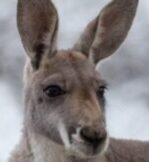
TheTourAustralia.com.au
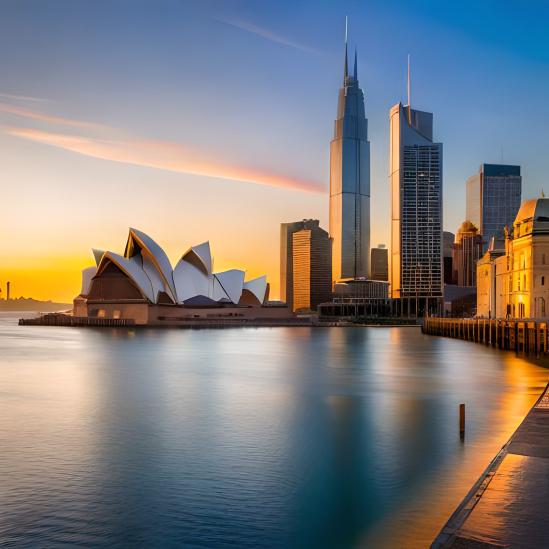
TOP 20 TOURIST ATTRACTIONS IN AUSTRALIA Must-Visit Destinations
Are you ready to embark on an unforgettable journey through the diverse and breathtaking landscapes of Australia? From iconic architectural wonders to stunning natural marvels, Australia offers a plethora of attractions that will leave you in awe. In this comprehensive guide, we will take you on a virtual tour of the top 20 must-visit destinations in Australia . Get ready to explore the land Down Under and uncover the beauty and wonder it has to offer.
Table of Contents
Sydney Opera House (New South Wales) – Iconic Architectural Masterpiece and Performing Arts Venue

The Sydney Opera House, nestled majestically in the heart of Sydney Harbor, is a symbol of Australia’s creativity and cultural prowess. This UNESCO World Heritage-listed architectural masterpiece is renowned for its distinctive sail-like design, creating an enchanting sight against the backdrop of the harbor.
The Sydney Opera House is a multi-venue performing arts center that hosts a wide range of world-class performances, including opera, theater, dance, and concerts. Its striking architecture and prime location make it a must-visit landmark for travelers and art enthusiasts alike.
Things to Do
- Guided Tours : Take a guided tour to learn about the history, design, and behind-the-scenes of this iconic venue.
- Catch a Performance : Experience the magic of live performances at one of the Opera House’s theaters.
- Climb the Roof : Embark on the Sydney Opera House BridgeClimb for stunning panoramic views of the harbor and city skyline.
- Dine with a View : Enjoy a meal at one of the onsite restaurants with breathtaking harbor views.
- Book your tickets for performances and tours in advance to secure your spot.
- The Opera House is beautifully illuminated at night, offering a different perspective for photography enthusiasts.
How to Reach
The Sydney Opera House is conveniently located in Sydney’s central business district. It is easily accessible by public transport, including trains, buses, and ferries.
Great Barrier Reef (Queensland) – World’s Largest Coral Reef System

The Great Barrier Reef is a natural wonder like no other, stretching over 2,300 kilometers along the Queensland coast. This extraordinary ecosystem is home to a dazzling array of marine life and vibrant coral formations.
The Great Barrier Reef is a paradise for snorkelers, divers, and nature enthusiasts. It is a UNESCO World Heritage site and one of the most biodiverse locations on Earth.
- Snorkeling and Diving : Dive into the crystal-clear waters and witness the incredible marine life up close.
- Scenic Flights : Take a scenic helicopter or seaplane flight for a bird’s-eye view of the reef’s beauty.
- Island Hopping : Explore the stunning islands dotting the reef, such as Hamilton Island and Lizard Island.
- Marine Life Encounters : Join a guided tour to spot majestic humpback whales, dolphins, and sea turtles.
- Practice responsible reef tourism to protect this fragile ecosystem for future generations.
- Apply reef-safe sunscreen to protect the delicate coral from harmful chemicals.
Cairns and Airlie Beach are the primary gateways to the Great Barrier Reef, with numerous tours and cruises departing from both locations.
Uluru (Northern Territory) – Sacred Sandstone Formation in the Australian Outback

Uluru, also known as Ayers Rock, is an awe-inspiring sandstone monolith rising dramatically from the vast Australian Outback. This sacred site holds great cultural significance for the Anangu Aboriginal people.
Uluru is not just a natural wonder; it is a spiritual and cultural icon representing the heart and soul of Australia’s Indigenous heritage.
- Sunrise and Sunset Viewing : Witness the mesmerizing colors of Uluru during sunrise and sunset.
- Base Walk : Embark on a guided or self-guided walk around the base of Uluru to learn about its cultural importance.
- Camel Rides : Enjoy a unique experience by riding a camel through the desert landscape.
- Stargazing : Marvel at the brilliant night sky and celestial wonders above Uluru.
- Respect the sacred significance of Uluru by refraining from climbing it, as it is a sacred site to the local Aboriginal community.
- Stay hydrated and carry plenty of water, as the Outback can get extremely hot.
Uluru is located in the Northern Territory, and the nearest town is Yulara, which is accessible by air or road.
Great Ocean Road (Victoria) – Scenic Coastal Drive with Twelve Apostles Rock Formations

The Great Ocean Road is one of Australia’s most iconic drives, offering a stunning coastal journey along Victoria’s southern coastline. The Twelve Apostles, a collection of limestone stacks, is a highlight of this scenic route.
The Great Ocean Road promises breathtaking ocean views, lush rainforests, and impressive rock formations, making it a must-visit for nature enthusiasts and road-trippers.
- Twelve Apostles Viewing : Witness the majestic Twelve Apostles at sunrise or sunset for the most enchanting views.
- Otway National Park : Explore the rainforests and waterfalls of the Otway Ranges in the Great Otway National Park.
- Surfing : Hit the waves at popular surfing spots like Bells Beach and Torquay.
- Wildlife Spotting : Keep an eye out for koalas, kangaroos, and native bird species along the way.
- Plan for multiple stops along the road to fully appreciate the stunning scenery.
- Check weather conditions before embarking on the drive, as the coastal weather can be unpredictable.
The Great Ocean Road starts in Torquay, which is around 100 kilometers southwest of Melbourne. It is easily accessible by car from Melbourne.
Sydney Harbour Bridge (New South Wales) – Panoramic Views from the Iconic Bridge Climb

- The Sydney Harbour Bridge is an iconic symbol of the city’s grandeur, connecting the central business district with the North Shore. The BridgeClimb offers a thrilling adventure and unmatched views of Sydney’s skyline and harbor.
- The Sydney Harbour Bridge is a testament to engineering brilliance and offers an exhilarating experience for both locals and tourists.
- BridgeClimb : Embark on the BridgeClimb for a unique opportunity to scale the iconic arches and enjoy panoramic views.
- Pylon Lookout : Visit the Pylon Lookout for a more budget-friendly option to admire the harbor views.
- Harbor Cruise : Take a harbor cruise to view the bridge from the water and appreciate its splendor.
- New Year’s Eve : Witness the spectacular fireworks display from the bridge on New Year’s Eve.
- Wear comfortable clothing and closed-toe shoes for the BridgeClimb.
- Capture stunning photos from the top of the bridge to cherish the memories.
The Sydney Harbour Bridge is easily accessible from the city center. Trains, buses, and ferries all connect to Circular Quay, where the bridge is located.
Bondi Beach (New South Wales) – Australia’s Most Famous Beach

- Bondi Beach is synonymous with the Australian beach lifestyle, attracting sunseekers, surfers, and beach lovers from all over the world.
- Bondi Beach is a vibrant and buzzing destination that perfectly embodies the laid-back Australian beach culture.
- Surfing : Learn to surf or catch some waves at Bondi Beach, known for its surf-friendly waves.
- Coastal Walk : Embark on the Bondi to Coogee Coastal Walk for stunning ocean views and picturesque scenery.
- Icebergs Pool : Take a dip in the famous Bondi Icebergs Pool, perched on the edge of the ocean.
- Bondi Markets : Explore the Bondi Markets on Sundays for unique souvenirs and local crafts.
- Be mindful of surf conditions and swim between the flags, where lifeguards are on duty.
- Arrive early to secure a good spot on the beach during peak seasons.
Bondi Beach is just a short drive from Sydney’s city center, and public buses regularly run to and from the beach.
Kakadu National Park (Northern Territory) – A UNESCO World Heritage Site

- Kakadu National Park is a sprawling wilderness that showcases the natural and cultural wonders of the Australian Outback.
- Kakadu is not only Australia’s largest national park but also a living testament to the region’s Indigenous heritage.
- Aboriginal Rock Art : Discover ancient rock art galleries that depict the rich history of the Indigenous people.
- Yellow Water Cruise : Take a cruise on the Yellow Water Billabong to spot crocodiles and a variety of birdlife.
- Jim Jim Falls : Hike to the magnificent Jim Jim Falls and cool off in its pristine plunge pool.
- Cultural Tours : Engage in guided cultural tours to gain insights into the Indigenous way of life.
- Kakadu’s climate can be extreme, so be prepared with appropriate clothing and plenty of water.
- Respect the cultural significance of the rock art and wildlife by following park guidelines.
Kakadu National Park is located in the Northern Territory and is accessible by car or guided tours from Darwin, the nearest major city.
Melbourne (Victoria) – A Vibrant City of Culture and Creativity

- Melbourne, the cultural capital of Australia, is a melting pot of arts, music, and culinary delights.
- Melbourne is a city that embraces diversity and creativity, offering a plethora of experiences for every traveler.
- Street Art : Explore the vibrant street art laneways in Melbourne’s CBD, such as Hosier Lane.
- Coffee Culture : Indulge in Melbourne’s famous coffee scene at local cafes and roasteries.
- Queen Victoria Market : Shop for fresh produce, gourmet delights, and unique souvenirs at the market.
- Festivals and Events : Immerse yourself in cultural festivals, food festivals, and live music events.
- Take advantage of the city’s extensive public transportation system to explore various neighborhoods.
- Melbourne’s weather can be changeable, so pack layers for your trip.
Melbourne is well-connected with international and domestic flights, and the city’s public transport network makes it easy to get around.
Fraser Island (Queensland) – The World’s Largest Sand Island

- Fraser Island is a natural wonderland where lush rainforests meet sandy beaches and crystal-clear lakes.
- Fraser Island is an ecological gem, featuring diverse landscapes and unique flora and fauna.
- Lake McKenzie : Swim in the pristine waters of Lake McKenzie, a perched lake with pure silica sand.
- Maheno Shipwreck : Visit the rusting Maheno Shipwreck on the beach, adding a touch of history to the island.
- Eli Creek : Float down Eli Creek in an inflatable tube and enjoy the refreshing natural stream.
- Champagne Pools : Take a dip in the Champagne Pools, naturally formed rock pools with effervescent water.
- Drive carefully on the island’s sandy tracks and be aware of dingoes, the island’s wild residents.
- Camping is a popular option for exploring Fraser Island, so book campsites in advance.
Fraser Island can be reached by taking a ferry from Hervey Bay or Rainbow Beach on the Queensland coast.
The Great Australian Bight (South Australia/Western Australia) – A Coastal Wonder
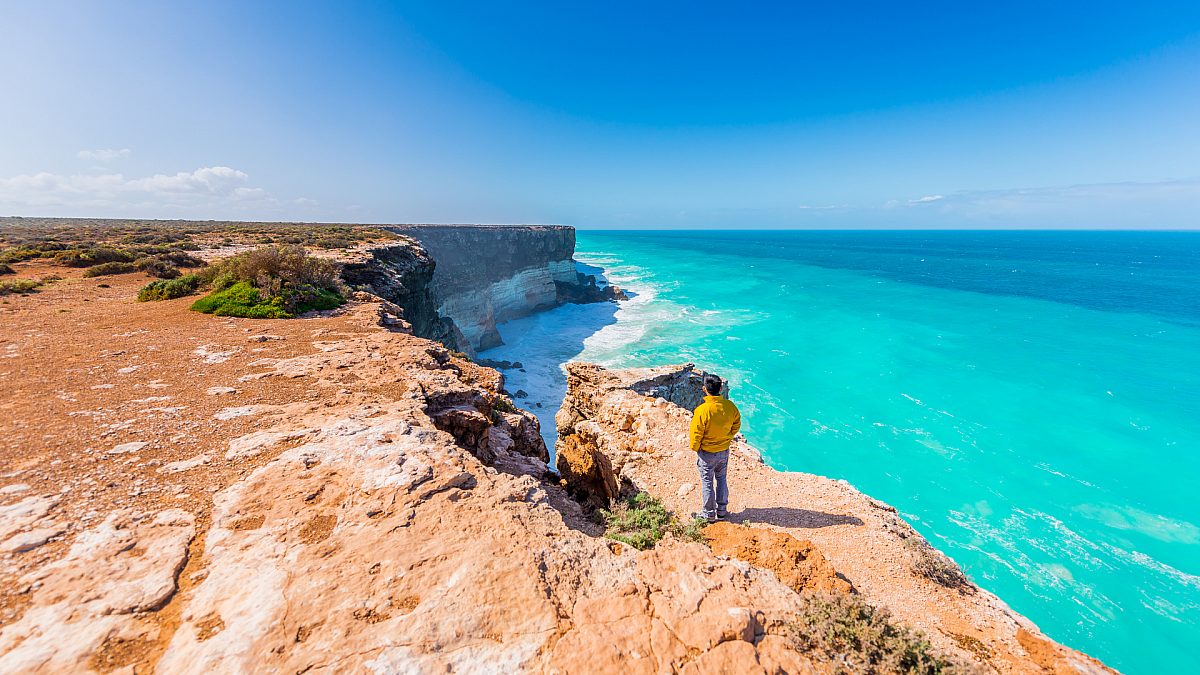
- The Great Australian Bight boasts awe-inspiring cliffs and offers a prime location for whale-watching.
- The Bight is a rugged and remote coastal region that showcases the raw beauty of Australia’s southern coastline.
- Cliff Top Walks : Enjoy scenic cliff-top walks that offer breathtaking views of the vast ocean below.
- Whale-Watching : Spot majestic Southern Right Whales and Humpback Whales during their migratory season.
- Nullarbor Links : Play a round of golf at the world’s longest golf course, the Nullarbor Links.
- Head of the Bight : Visit the Head of the Bight viewing platform for a chance to see whales up close.
- The best time for whale-watching is from May to October when the whales migrate.
- Bring binoculars and camera gear to capture the stunning coastal vistas.
The Great Australian Bight spans across South Australia and Western Australia, and access points can be reached by road from nearby towns.
The Daintree Rainforest (Queensland) – The Oldest Rainforest on Earth

- The Daintree Rainforest is a living museum, home to an ancient ecosystem teeming with biodiversity.
- The Daintree is a UNESCO World Heritage-listed rainforest that has thrived for millions of years.
- Daintree River Cruise : Take a river cruise to spot crocodiles, birds, and other wildlife.
- Cape Tribulation : Visit Cape Tribulation, where the rainforest meets the Great Barrier Reef.
- Mossman Gorge : Explore the Mossman Gorge and swim in its crystal-clear waters.
- Jindalba Boardwalk : Wander along the Jindalba Boardwalk for an immersive rainforest experience.
- Be cautious around water bodies, as some areas are home to saltwater crocodiles.
- Respect the rainforest’s delicate ecosystem and refrain from leaving any trash behind.
The Daintree Rainforest is accessible from Cairns or Port Douglas in Queensland by car or guided tours.
Phillip Island (Victoria) – A Penguin Parade Spectacle

- Phillip Island is renowned for its unique wildlife experiences, especially the famous Penguin Parade.
- Phillip Island is a sanctuary for wildlife, where visitors can witness adorable penguins returning to their burrows.
- Penguin Parade : Watch the adorable little penguins waddle ashore at sunset at Summerland Beach.
- Koala Conservation Centre : Get up close with koalas and spot other native wildlife in their natural habitat.
- The Nobbies : Explore the rugged coastline and spot seals at The Nobbies boardwalk.
- Surf Beach : Catch some waves or relax on the sandy shores of Surf Beach.
- Photography is prohibited during the Penguin Parade to protect the penguins’ sensitive eyes.
- Arrive early to secure a good viewing spot for the Penguin Parade.
Phillip Island is easily accessible from Melbourne by car or public transport, with guided tours available as well.
Adelaide (South Australia) – A Charming City of Culture and Wine
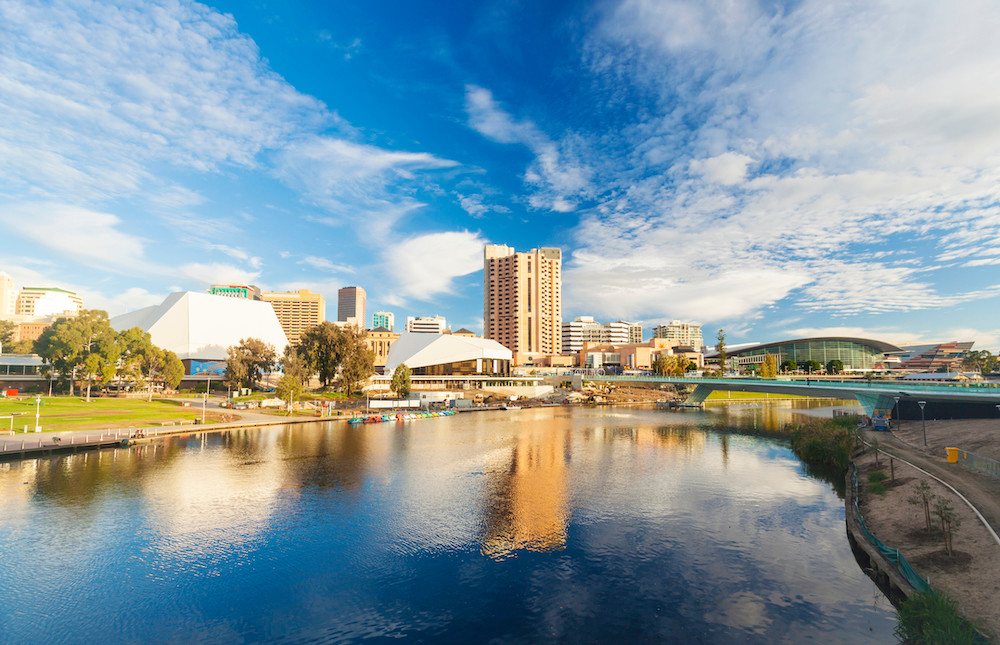
- Adelaide, the capital of South Australia, is a city that delights with its cultural offerings and wine regions.
- Adelaide is a city that embraces its heritage and offers visitors a taste of the good life.
- Adelaide Central Market : Experience a gastronomic paradise at the bustling Adelaide Central Market.
- Barossa Valley : Embark on a wine-tasting adventure in the nearby Barossa Valley wine region.
- Adelaide Botanic Garden : Stroll through the tranquil Adelaide Botanic Garden and its diverse plant collection.
- Art Gallery of South Australia : Explore the impressive collection of Australian and international art.
- Adelaide’s dining scene is a must-try, with diverse options from fine dining to food trucks.
- Take advantage of Adelaide’s free tram service within the city center.
Adelaide is well-connected by domestic and international flights, with a convenient airport located close to the city center.
Kangaroo Island (South Australia) – A Wildlife Wonderland

- Kangaroo Island is a haven for wildlife enthusiasts, offering encounters with diverse Australian fauna.
- Kangaroo Island is a natural zoo, where kangaroos, koalas, and sea lions roam free.
- Seal Bay Conservation Park : Observe Australian sea lions in their natural habitat at Seal Bay.
- Flinders Chase National Park : Discover the Remarkable Rocks and Admirals Arch at Flinders Chase.
- Kangaroo Island Wildlife Park : Get up close and personal with kangaroos, koalas, and other animals at the wildlife park.
- Little Sahara : Try sandboarding down the dunes at the unique Little Sahara.
- Respect the wildlife and maintain a safe distance, especially during breeding seasons.
- Kangaroo Island is a great place for stargazing due to its low light pollution.
Kangaroo Island can be accessed by a short ferry ride from Cape Jervis, which is approximately a two-hour drive from Adelaide.
Blue Mountains (New South Wales) – A Nature Lover’s Paradise

- The Blue Mountains are a captivating escape from the city, offering breathtaking landscapes and outdoor activities.
- The Blue Mountains are a UNESCO World Heritage-listed site, famous for its dramatic cliffs and eucalyptus forests.
- Three Sisters : Marvel at the iconic Three Sisters rock formation and the panoramic views from Echo Point.
- Scenic World : Take a ride on the Scenic Railway, Skyway, and Cableway for stunning views of the valley.
- Wentworth Falls : Hike to Wentworth Falls and enjoy the spectacular waterfall and lush surroundings.
- Leura Village : Explore the charming village of Leura with its boutique stores and gardens.
- The weather in the Blue Mountains can be unpredictable, so bring warm clothing and rain gear.
- Plan your visit during the week to avoid crowds and enjoy a more peaceful experience.
The Blue Mountains are easily accessible from Sydney, with regular train services and organized tours available.
Gold Coast (Queensland) – Australia’s Playground
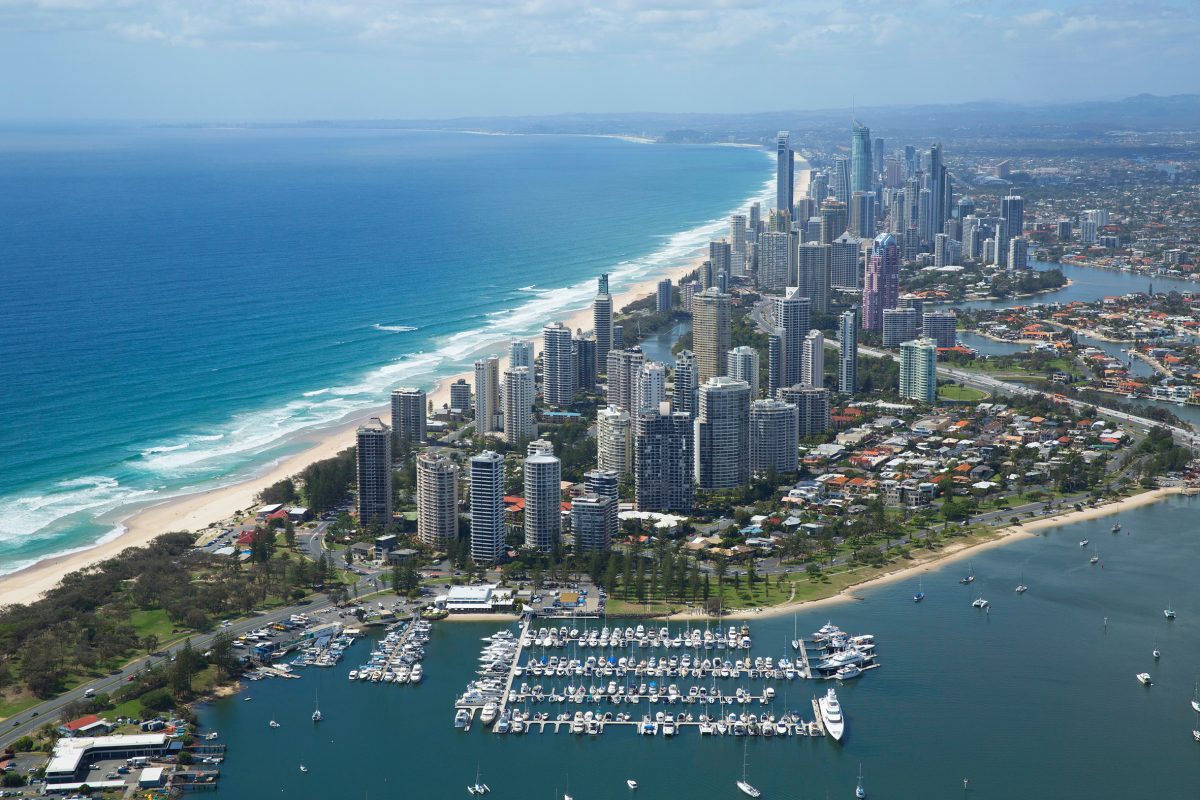
- The Gold Coast is a dynamic coastal destination known for its theme parks, stunning beaches, and vibrant nightlife.
- The Gold Coast offers an exciting mix of family-friendly attractions and lively entertainment.
- Surfers Paradise : Hit the world-famous Surfers Paradise beach for sunbathing and surfing.
- Theme Parks : Experience the thrills of Warner Bros. Movie World, Sea World, Dreamworld, and Wet’n’Wild.
- Currumbin Wildlife Sanctuary : Get up close with native Australian animals at the wildlife sanctuary.
- SkyPoint Observation Deck : Enjoy stunning views from the SkyPoint Observation Deck in Q1 skyscraper.
- Consider purchasing a theme park pass for discounts and access to multiple attractions.
- Surf only in designated areas and follow the lifeguard’s instructions for safety.
The Gold Coast is well-connected by flights, and Brisbane Airport is the nearest major airport. It is also accessible by road from Brisbane.
Purnululu National Park (Western Australia) – Breathtaking Bungle Bungle Range

- Purnululu National Park is a hidden gem in Western Australia, known for its unique Bungle Bungle Range.
- The Bungle Bungle Range is an ancient rock formation that looks like giant beehives, captivating visitors with its distinct appearance.
- Picaninny Creek : Hike along the Picaninny Creek trail to explore the heart of the Bungle Bungle Range.
- Echidna Chasm : Walk through the narrow and spectacular Echidna Chasm.
- Scenic Flights : Take a scenic helicopter flight for a bird’s-eye view of the rugged landscape.
- Cathedral Gorge : Discover the natural amphitheater of Cathedral Gorge with its remarkable acoustics.
- The park is remote, so be well-prepared with food, water, and necessary supplies.
- Respect the cultural significance of the area to the local Indigenous people.
Purnululu National Park is located in the Kimberley region of Western Australia and is accessible by 4WD vehicles or guided tours.
Whitsunday Islands (Queensland) – Paradise of Pristine Beaches and Reefs

- The Whitsunday Islands are a tropical paradise, offering stunning beaches and access to the Great Barrier Reef.
- The Whitsundays are a dream destination for beach lovers and water sports enthusiasts.
- Whitehaven Beach : Relax on the world-famous Whitehaven Beach with its pristine silica sand.
- Snorkeling and Diving : Dive into the clear waters to explore the colorful coral reefs and marine life.
- Hill Inlet Lookout : Hike to the Hill Inlet Lookout for breathtaking views of Whitehaven Beach and Hill Inlet.
- Sailing : Take a sailing trip around the islands for an unforgettable experience.
- Consider staying overnight on one of the islands for a more immersive experience.
- Practice responsible reef tourism and avoid touching or damaging the coral.
The Whitsunday Islands can be reached by boat from Airlie Beach or Hamilton Island. Hamilton Island also has its airport with regular flights from major cities.
The Kimberley (Western Australia) – Remote and Untamed Wilderness
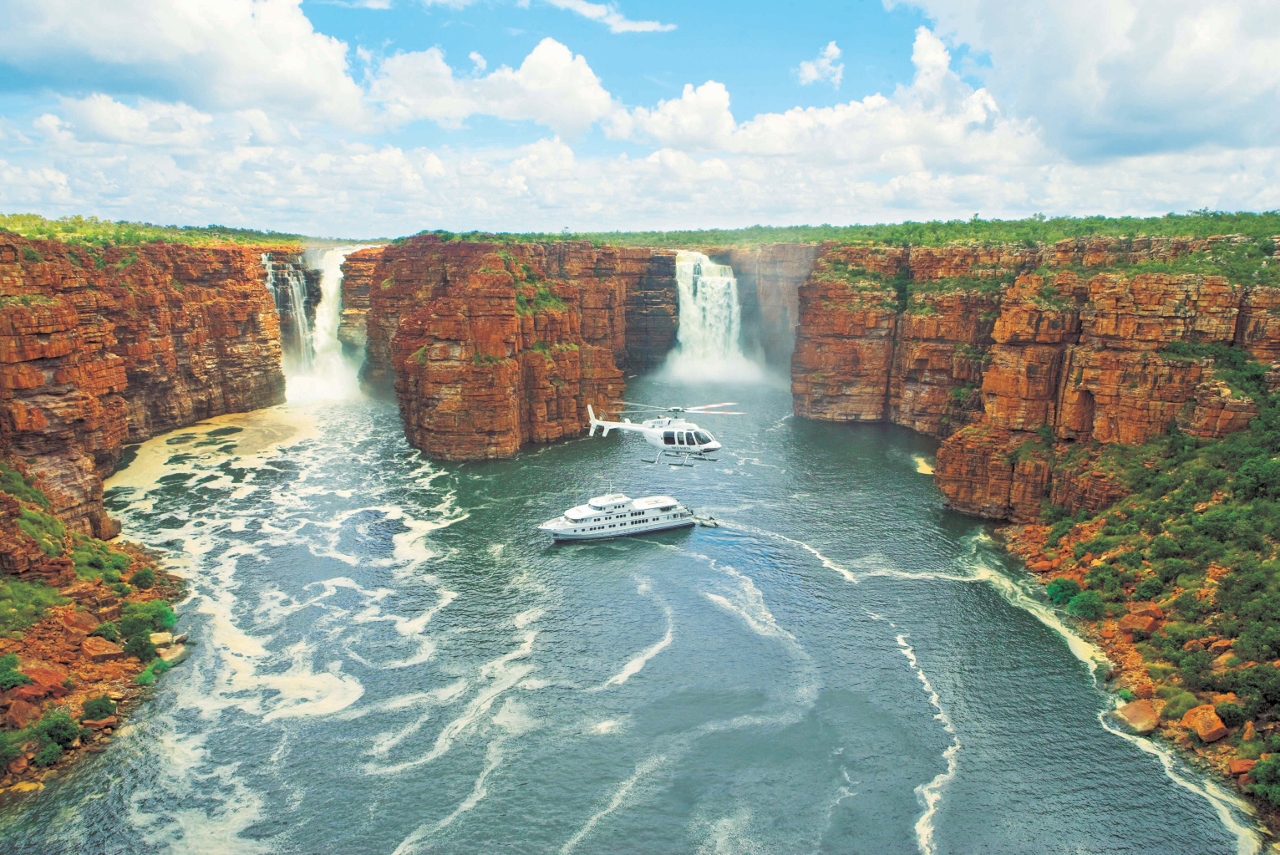
- The Kimberley region is a vast and rugged expanse of wilderness, offering a true outback adventure.
- The Kimberley is a remote and sparsely populated region known for its ancient landscapes and unique natural features.
- Bungle Bungle Range : Explore the stunning Bungle Bungle Range in Purnululu National Park.
- Mitchell Falls : Hike to the breathtaking Mitchell Falls and admire the multi-tiered waterfall.
- Horizontal Falls : Take a thrilling seaplane or boat ride through the Horizontal Falls in Talbot Bay.
- Gibb River Road : Drive along the iconic Gibb River Road for a quintessential Kimberley experience.
- The Kimberley has limited infrastructure, so be well-prepared with supplies and fuel.
- Respect the land and its traditional owners by following Leave No Trace principles.
The Kimberley region is best explored by 4WD vehicles or guided tours from cities like Broome and Kununurra.
Rottnest Island (Western Australia) – Home of the Quokkas
- Rottnest Island is a small slice of paradise, famous for its friendly quokkas and pristine beaches.
- Rottnest Island is a car-free destination where visitors can unwind and connect with nature.
- Meet the Quokkas : Interact with the adorable and friendly quokkas that call the island home.
- Bike Riding : Explore the island’s beauty on a bike and visit various beaches and bays.
- Snorkeling : Discover the vibrant underwater world and spot marine life while snorkeling.
- Wadjemup Lighthouse : Climb up to the Wadjemup Lighthouse for panoramic island views.
- Remember that quokkas are wild animals, so maintain a safe distance and avoid feeding them.
- Book accommodation and ferry tickets in advance, especially during peak seasons.
Rottnest Island is accessible by a short ferry ride from Perth or Fremantle.
Tasmania – The Island of Natural Wonders

- Tasmania is an island state that boasts diverse landscapes, including rugged mountains, pristine wilderness, and charming towns.
- Tasmania is a treasure trove of natural wonders, making it an ideal destination for outdoor enthusiasts.
- Cradle Mountain : Hike to the iconic Cradle Mountain and explore the surrounding national park.
- Freycinet National Park : Visit Freycinet to see Wineglass Bay and take in the stunning coastal scenery.
- Port Arthur : Explore the historic Port Arthur site and learn about Australia’s convict past.
- MONA : Visit the Museum of Old and New Art (MONA) for a unique and thought-provoking art experience.
- Tasmania’s weather can be unpredictable, so pack layers and waterproof clothing.
- Respect the wildlife and nature by adhering to the Leave No Trace principles.
Tasmania is accessible by air and sea, with flights available from major Australian cities and ferry services from Melbourne.
Australia is a land of contrasts, where vibrant cities meet untamed wilderness, and ancient cultures intertwine with modern experiences. From iconic landmarks to remote natural wonders, the country offers an endless array of must-visit destinations. Whether you’re seeking adventure, culture, or relaxation, Australia promises to leave a lasting impression on every traveler fortunate enough to explore its diverse and captivating landscapes. So, pack your bags, set off on an unforgettable journey, and let Australia enchant you with its beauty and charm.
Similar Posts
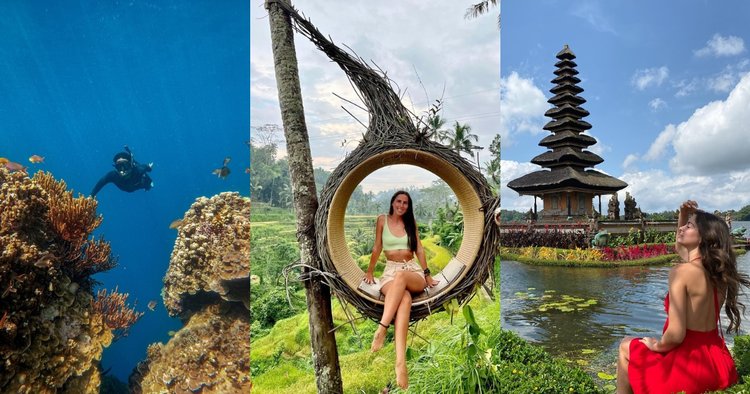
Things to Do in Bali on Christmas Eve and New Year
Things to Do in Bali: World’s Best Experiences Bali, often hailed as the “Island of the Gods,” is a paradise for travelers seeking a blend of natural beauty, cultural richness, and thrilling adventures. In this guide, we’ll delve into the things to do in Bali has to offer, ensuring you make the most of your…
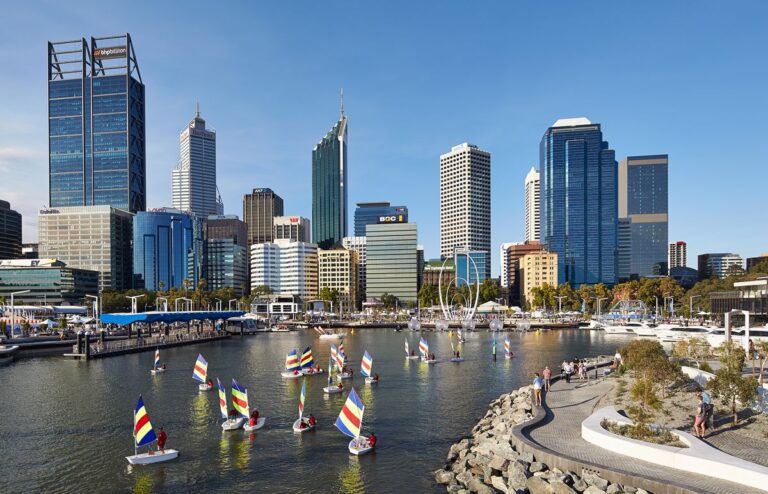
Perth to Broome Road trip Things To do 2023-2024
Perth to Broome Road trip Things To do including The Pinnacles Desert and Kalbarri National Park are nature’s wonders in Perth Western Australia Perth to Broome road trip for a new big adventure Down Under. Now we continue our trip. And this is what you saw before the Margaret River wine region with its beautiful…
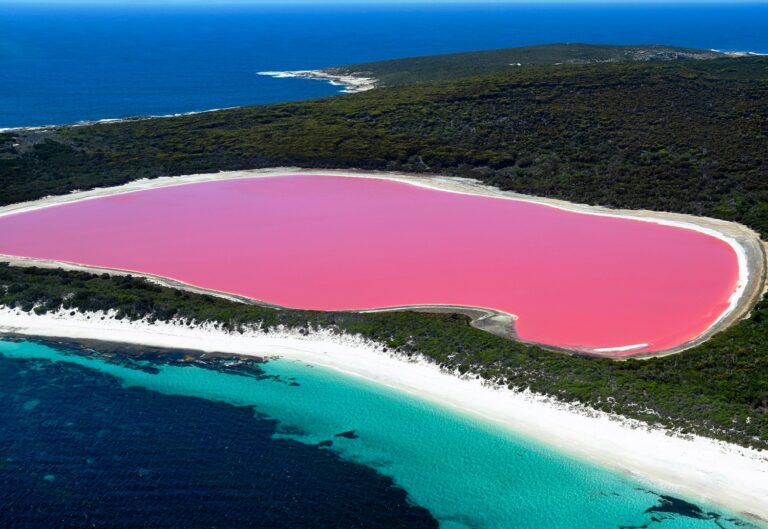
where is the pink lake in Australia
Discover the Enchanting Beauty of Pink Lake Australia: A Natural Wonder Awaiting Exploration Image Source: Unsplash ## Introduction to Pink Lake Australia Australia is home to some of the most breathtaking natural wonders in the world, and one such marvel is the Pink Lake. Nestled in the stunning landscapes of Australia’s Western Australia region, this…

11 Places to Visit in Perth Tourist Activity & Top Attractions
Here are the top things to do in Perth, Australia, for an exciting stay. Do stick around until the end to discover the brilliant activity. 11 Places to Visit in Perth Tourist Activity & Top Attractions Visit Kings Park and the Botanic Gardens. Kings Park is a large park in Perth Central business area close…

11 Best Perth Pregnancy Massage Centre With Lowest Price 2023-2024
Best Perth Pregnancy Massage Centre With Lowest Price 2023-2024 Are you a pregnant mom? Or maybe you have a special future mother in your life that you’re looking to ruin? A Perth maternity massage is the best method to treat on your own or that valued loved one. Spending some time to kick back, destress…
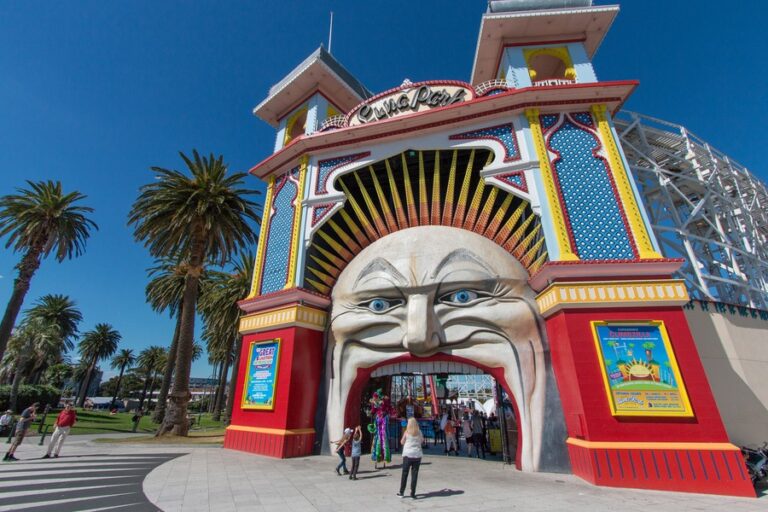
50 Things to Do in Melbourne the Vibrant City’s Best Attractions
50 Things to Do in Melbourne: Explore the Vibrant City’s Best Attractions and Experiences Melbourne, the artistic capital of Australia, is a vibrant megacity with a different range of lodestones and gests to extend. From iconic milestones and startling armature to trades and cultivation, culinary delights, and out-of-door emprises, Melbourne has commodity for everyone. In…
Leave a Reply Cancel reply
Your email address will not be published. Required fields are marked *
Save my name, email, and website in this browser for the next time I comment.

Touropia Travel Experts
Discover the World
25 Top Tourist Attractions in Australia
Australia is a vast country that is just slightly smaller than the continental United States. So it probably shouldn’t be surprising that a country this large would also be home to some of the most unusual destinations and creatures in the world.
Traveling around the world’s smallest continent and largest island, you’ll find a beautiful land with ancient indigenous heritage, the rugged Outback, and a thriving multicultural society. You’ll also see amazing beaches , incredible biodiversity and sandstone monoliths that have been around for millions of years. And that barely scratches the surface!
Among the many iconic sites and landmarks you can visit in Australia are Ayers Rock and the Sydney Opera House. While these spots are very popular with tourists, there are a number of tourist attractions in Australia that aren’t as well-known but are just as impressive.
Too much, in fact. So it pays to plan your schedule thoroughly before your visit to make the most of your time in this fascinating country.
25. Lighthouse Trail, Byron Bay
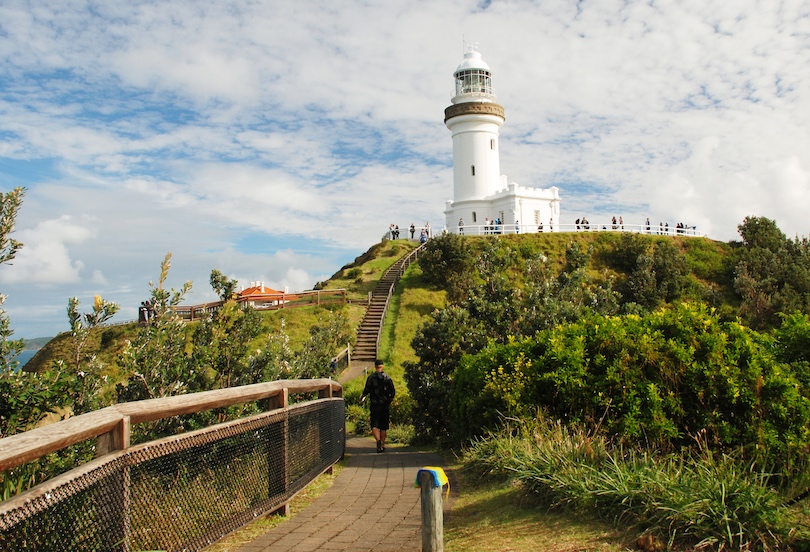
The Lighthouse Trail in Byron Bay is a scenic coastal walk that stretches along the easternmost point of mainland Australia. This iconic trail offers breathtaking views of the Pacific Ocean, rugged cliffs, and lush rainforest. So, it should be on the bucket list of anyone who loves nature or hiking.
The trail begins at Cape Byron Lighthouse, an iconic landmark that has stood proudly since 1901, and meanders along well-maintained paths, allowing visitors to absorb the stunning natural beauty. As it is the easternmost point in Australia, you will be the first person to see the sunrise if you can get there in time.
Along the way, the trail has numerous lookout points that provide sweeping panoramic vistas, including the famous Cape Byron Lookout. Watch for dolphins and whales (in season) whilst on it.
24. Kings Canyon
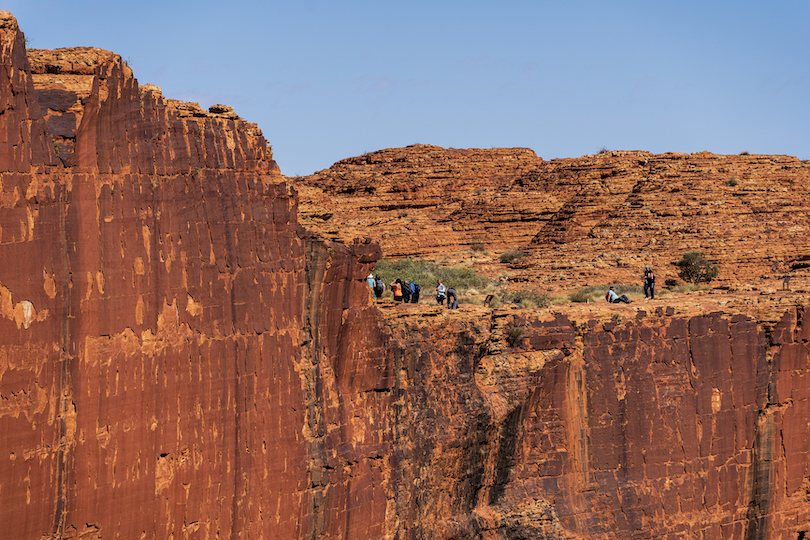
Over in the Northern Territory, Kings Canyon is a natural wonder renowned for its remarkable sandstone formations and breathtaking landscapes.
This incredible geological marvel is part of the Watarrka National Park and is regarded as one of the most beautiful tourist attractions in Australia. The canyon is characterized by its towering sandstone walls that rise majestically above the canyon floor to create a visually stunning and rugged terrain.
One of the most famous features of Kings Canyon is the ‘Garden of Eden’. This lush and verdant oasis is nestled within the heart of the canyon – providing a stark contrast to the otherwise arid surroundings of the area.
The canyon has several walking trails – including the challenging Kings Canyon Rim Walk – that allow visitors to explore this extraordinary natural environment. The vistas of the surrounding outback are spectacular, so make sure you have a camera with you.
23. Barossa Valley Wineries
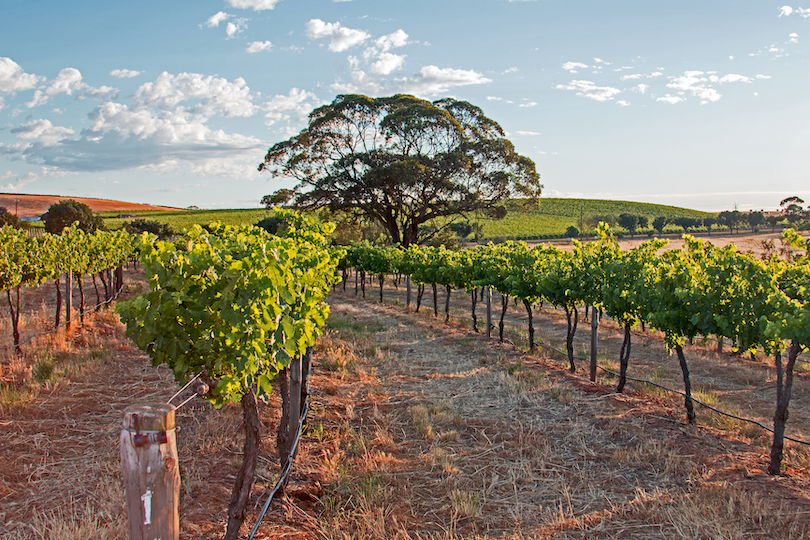
If you love wine, visiting the Barossa Valley is one of the best things to do in Australia. Located in South Australia, it is considered one of the world’s premier wine regions.
This region is famous for producing some of Australia’s most iconic wines, particularly Shiraz. But also a wide range of other varietals, including Riesling, Cabernet Sauvignon and Grenache.
Overall, the Barossa Valley is home to a multitude of wineries, each with its own unique character and winemaking traditions. Visitors can explore historic and contemporary wineries, often run by multi-generational winemaking families. Many of these establishments offer cellar-door tastings, where you can sample their wines and gain insight into the winemaking process.
In addition to the wine, the Barossa Valley is renowned for its culinary scene, with numerous hatted restaurants and food producers showcasing the region’s outstanding produce.
22. Port Arthur Historic Site, Tasmania
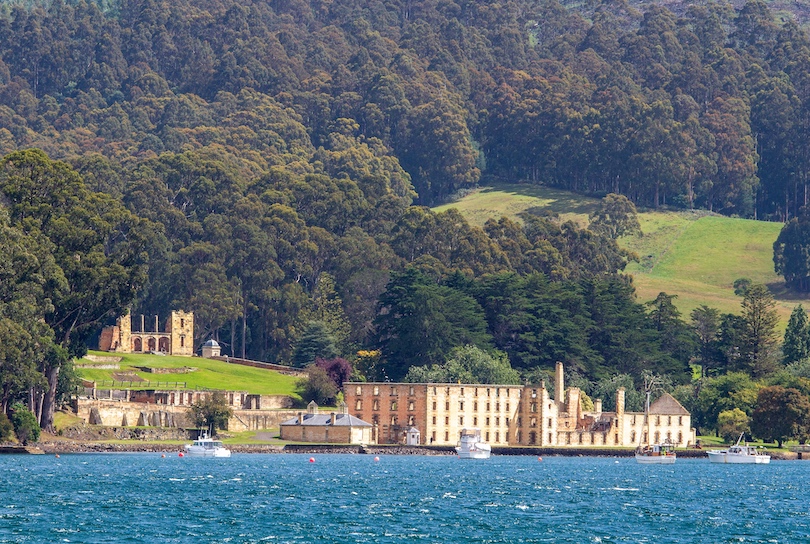
Located on the Tasman Peninsula in Tasmania , The Port Arthur Historic Site is a significant and haunting historical destination.
It was initially a brutal convict settlement established in 1830, where British convicts served their sentences in a remote and harsh environment. However, today, it now takes the form of a site that preserves the ruins and stories of this dark chapter in Australian history.
Visitors to Port Arthur can explore the well-preserved ruins of the former penal colony – including the penitentiary, the separate prison and the imposing Penitentiary Chapel. The site offers guided tours and interpretive displays that provide deep insights into the lives of the convicts, the hardships they endured and the penal practices of the time.
While Port Arthur is known for its grim history, the surrounding landscape is stunningly beautiful. Scenic walking trails and water views provide a striking contrast to the site’s dark past.
21. Rottnest Island
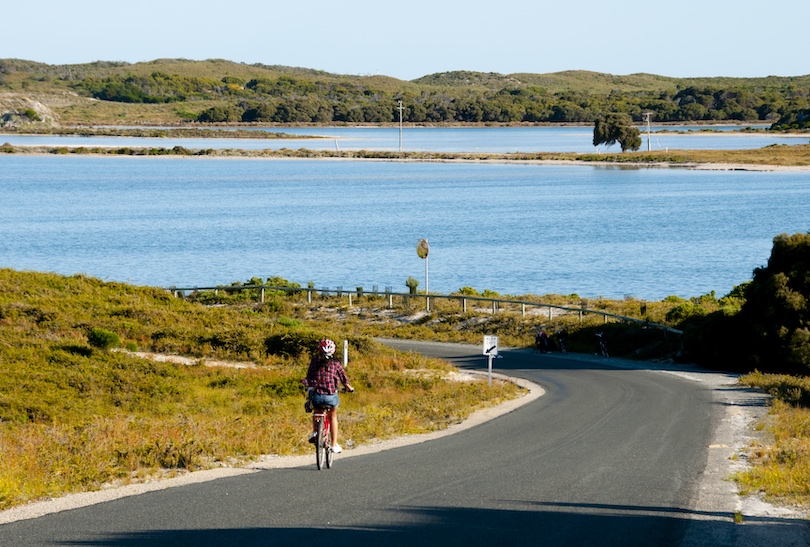
Rottnest Island, often affectionately referred to as ‘Rotto’, is a captivating island paradise in the Indian Ocean, just off the coast of Perth . Famous for its stunning beaches, crystal-clear waters, and unique wildlife, Rottnest Island is a popular destination for both locals and tourists.
The island is renowned for its pristine, white sandy beaches and exceptional snorkeling and diving opportunities, allowing visitors to explore vibrant coral reefs and encounter abundant marine life. A highlight of any visit to Rottnest is the opportunity to meet the island’s most famous resident, the quokka, a friendly and photogenic marsupial.
In addition to outdoor activities, Rottnest Island offers a rich history. Sites like the Wadjemup Lighthouse and the Oliver Hill Battery convey glimpses of the island’s past as a military installation and penal colony.
20. Kata Tjuta
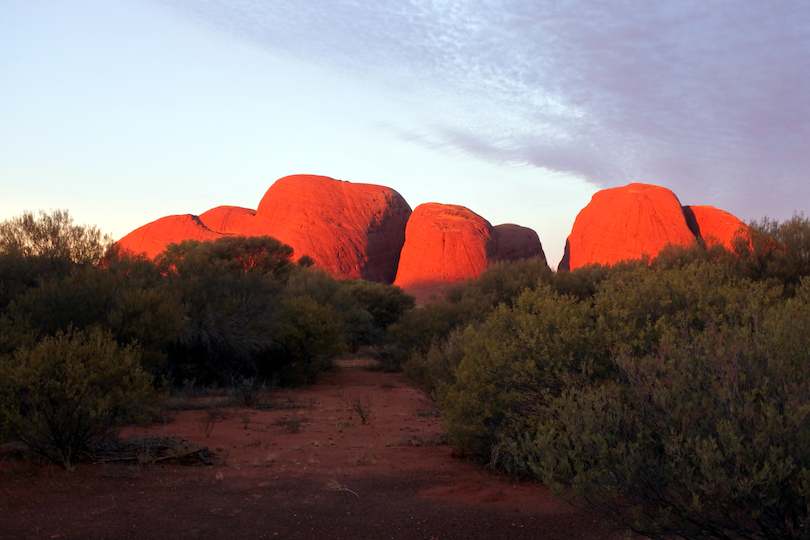
Often called ‘The Olgas’, Kata Tjuta is an extraordinary natural wonder near Uluru in the heart of the Red Center of Northern Territory. Comprising a group of large and ancient rock formations, Kata Tjuta is a sacred site for the local Anangu people and holds deep cultural significance.
Kata Tjuta means ‘many heads’ in the local indigenous language, which is apt, as the site features 36 massive domes that rise dramatically from the desert landscape. The highest peak, Mount Olga, stands even taller than Uluru.
These geological formations are composed of conglomerate rock and have been shaped by millions of years of erosion, weathering and natural forces. Visitors can explore the site through walking trails, the most popular being the Valley of the Winds walk, which provides breathtaking panoramic views of the domes and surrounding desert.
19. Bondi Beach, Sydney
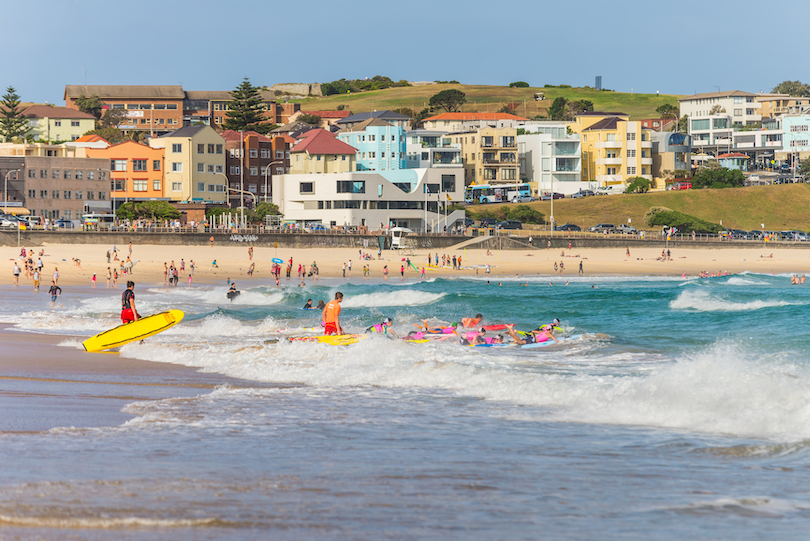
Bondi Beach is one of the most famous beaches in the world. Situated in the eastern suburbs of Sydney , this iconic stretch of coastline is renowned for its golden sands, crystal-clear waters and buzzy vibe.
Don’t be fooled into thinking that Bondi Beach is just a place to swim and sunbathe. It is a cultural hub with a diverse mix of tourists, workers and locals. Surfers flock to Bondi to ride the waves, while the Bondi to Coogee Coastal Walk offers a scenic pathway with dramatic coastal vistas, passing by other beautiful beaches.
The bustling promenade, Campbell Parade, is lined with trendy cafes, restaurants and shops – making it an ideal spot to grab a coffee, enjoy a meal, or people-watch.
18. South Bank Parklands, Brisbane
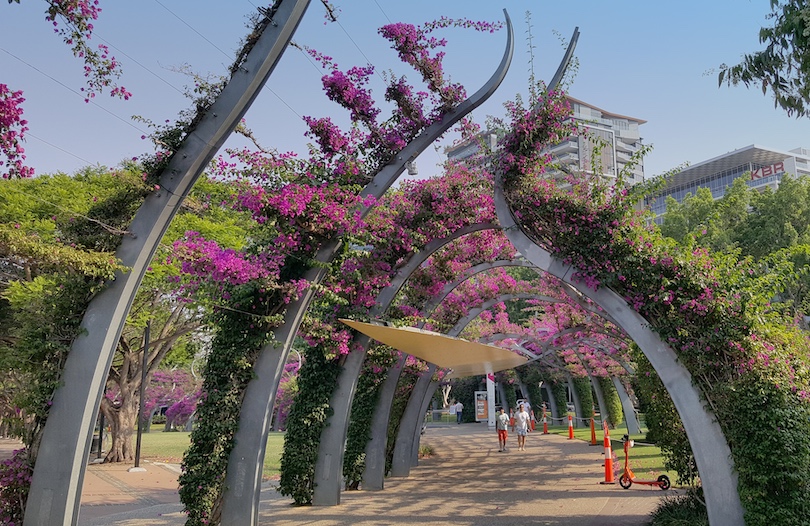
Brisbane is the capital of the state of Queensland, and its crown jewel is arguably the South Bank Parklands. This sprawling parkland, nestled along the southern banks of the Brisbane River, is a place where culture, recreation and community converge.
Visitors can enjoy beautiful gardens, splendid river views, and several recreational spaces, including Streets Beach. Australia’s only inner-city man-made beach, it is a popular spot for swimming and relaxing by the river. The parklands also feature the Wheel of Brisbane, an iconic Ferris wheel that offers panoramic city views.
If you are into cultural attractions, you should enjoy the parkland’s proximity to the Queensland Cultural Center. It is home to the Queensland Art Gallery, Gallery of Modern Art and the Queensland Performing Arts Center.
There are also plenty of restaurants, cafes and bars here, and regular markets.
17. Australian War Memorial, Canberra
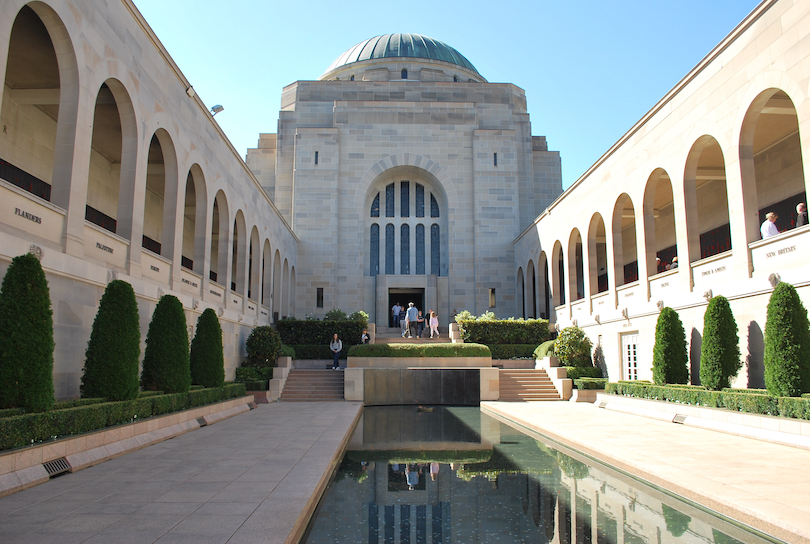
The Australian War Memorial – located in Canberra – is a solemn and prestigious institution. It serves as both a museum and a shrine dedicated to the country’s military history and the sacrifices made by Australian servicemen and women.
Established in 1941, the memorial honors and commemorates those who have served and fallen in the line of duty from World War I to the present day. The memorial is a museum that houses an extensive collection of artifacts, photographs and interactive displays.
It provides visitors with a comprehensive and educational perspective on Australia’s involvement in conflicts. The Hall of Memory is the heart of the memorial, where the Tomb of the Unknown Australian Soldier lies, representing all unknown soldiers who have given their lives.
Additionally, the Australian War Memorial includes beautifully landscaped grounds and the poignant Last Post Ceremony, which takes place every evening.
16. Kangaroo Island
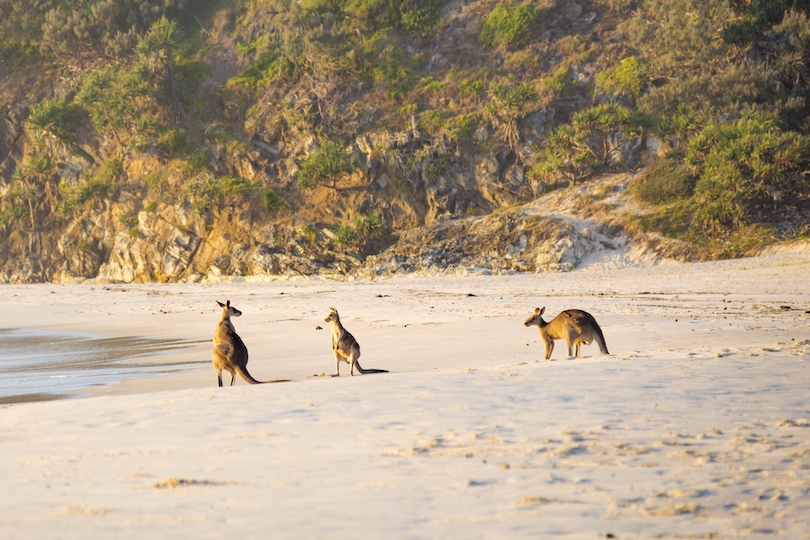
Just a short hop from the southern coast of South Australia, Kangaroo Island is a natural paradise renowned for its stunning landscapes, abundant wildlife and pristine beaches. The island, known as ‘Kangars’ or ‘KI’ by locals, is Australia’s third-largest island. It is home to various wildlife species, including kangaroos, wallabies, koalas and a thriving bird population.
The island’s rugged coastline features dramatic sea cliffs, hidden coves and beautiful sandy beaches that are great for photographing and exploring on foot. Remarkable Rocks and Admirals Arch in Flinders Chase National Park are two of the island’s iconic, must-see natural formations – showcasing the power of wind and waves.
Visitors can explore conservation parks, engage in wildlife encounters and savor the island’s fresh produce, including honey, wine and seafood. Adventure activities such as hiking, surfing and kayaking are popular here.
15. Seaside Lagoon, Cairns
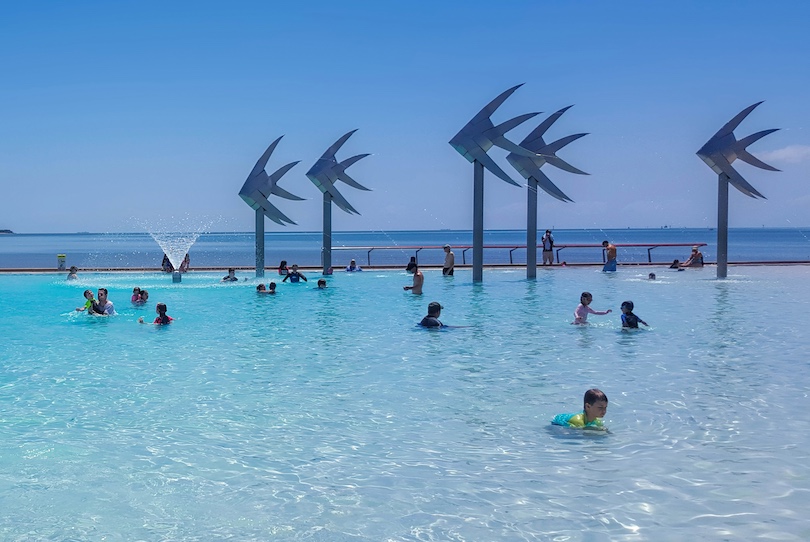
Residing at the heart of the Cairns Esplanade is a beautiful swimming Lagoon that provides a wonderful respite from the oppressive humidity that can grip the city.
This man-made saltwater swimming pool sits against the backdrop of the stunning Coral Sea, lush tropical gardens and distant mountains.
The sea around the Esplanade is unsuitable for swimming due to its proximity to the Great Barrier Reef. Subsequently, the Cairns Lagoon provides a safe and relaxing environment for people to do so while enjoying the beautiful surroundings. It is open until late evening and is a popular spot for families and those looking to unwind after work or a day of exploring the region’s natural wonders.
The Seaside Lagoon is also a central hub of activity – offering barbecues, picnic areas and various events throughout the year.
14. Pinnacles Desert
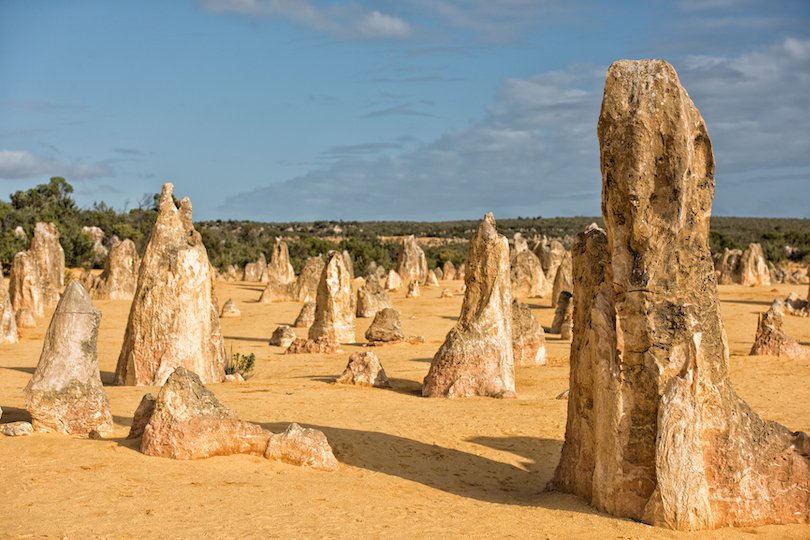
Situated within Nambung National Park in Western Australia, The Pinnacles Desert can best be described as a surreal and captivating natural wonder.
It is known for its otherworldly, eerie landscape dominated by thousands of limestone pillars, or pinnacles, rising from the golden sands of the desert. These limestone formations vary in size and shape, some reaching several meters in height, and are scattered across a vast area, creating a truly mesmerizing sight.
The Pinnacles were formed over millions of years through the accumulation of seashell fragments and the erosion of the surrounding sand, revealing these ancient geological sculptures.
Visitors can explore the desert on designated walking trails or by car, taking in the unique and enigmatic scenery. The play of light and shadows on the pinnacles at sunrise and sunset adds to the site’s ethereal beauty.
13. Royal Botanic Gardens, Melbourne
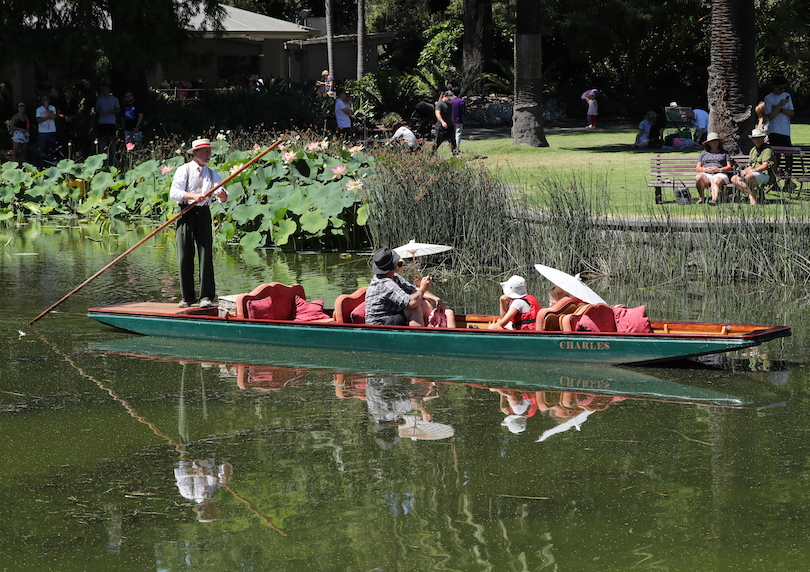
The Royal Botanic Gardens in Melbourne has provided a place for locals to escape the vibrant pace of life in the city since 1846.
Not to be confused with the one in Sydney, this historic garden is renowned for its curated collection of plants – both native and exotic – and stunning landscapes.
Whilst there, you can explore themed gardens, including the enchanting Guilfoyle’s Volcano, the peaceful Fern Gully and the Arid Garden. The gardens also house a herbarium, a library and educational facilities.
Centrally located adjacent to the iconic Shrine of Remembrance, they make a popular destination for picnics, leisurely walks, outdoor events and people-watching. The gardens are free to enter and are open every day of the year except public holidays.
12. Cradle Mountain, Tasmania
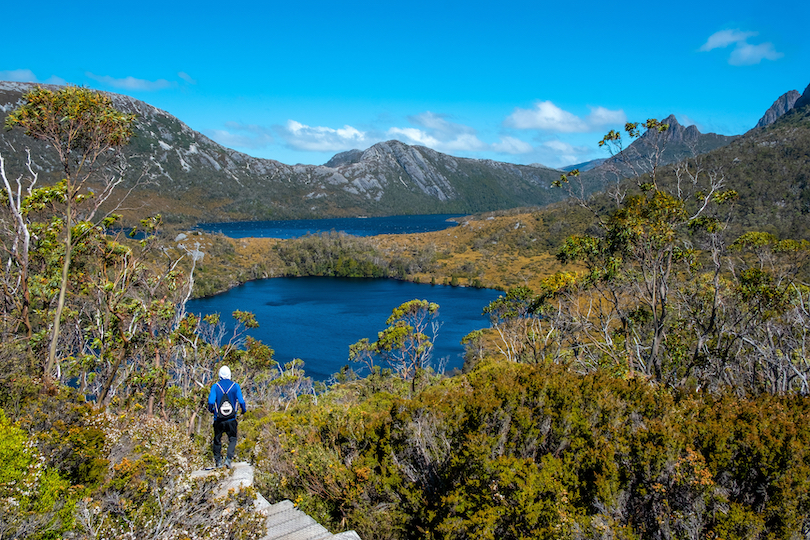
Cradle Mountain is one of Tasmania’s most iconic natural landmarks. You’ll find it within the Cradle Mountain-Lake St Clair National Park in the central highlands of the island state.
The mountain itself, along with the surrounding wilderness, is part of the Tasmanian Wilderness World Heritage Area, celebrated for its rugged beauty, pristine alpine lakes, and unique biodiversity.
Cradle Mountain is often considered the jewel of the national park and is a popular destination for hikers and nature lovers. The park offers walking trails suitable for various fitness levels, with the Overland Track being one of the most famous long-distance hikes in Australia, leading through this captivating landscape.
The area surrounding Cradle Mountain is home to diverse wildlife, including wombats, wallabies, and the elusive Tasmanian devil. Dove Lake, nestled at the base of Cradle Mountain, offers postcard-worthy reflections of the mountain on calm days.
11. Daintree Rainforest
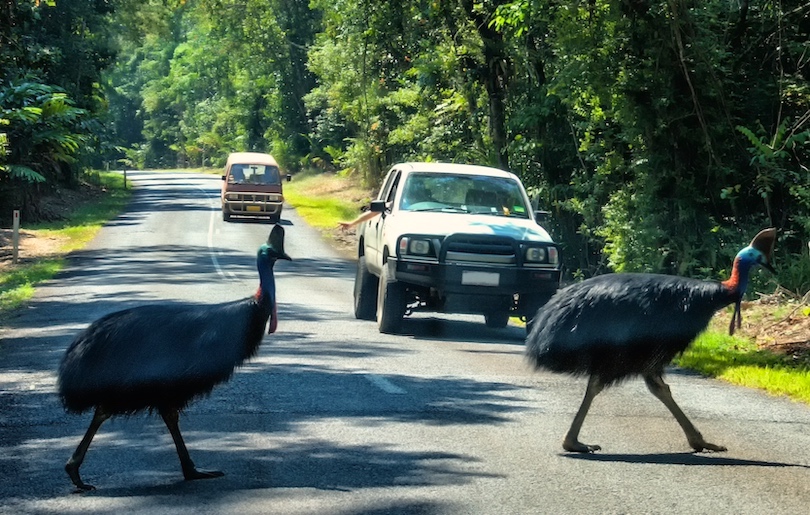
The Daintree Rainforest is a tropical rainforest located in Far North Queensland. It is famous for being one of the oldest rainforests on the planet, with some areas dating back over 135 million years.
This lush rainforest houses stunning biodiversity and has unique ecological significance. It accommodates an incredible array of plant and animal species, including many found nowhere else in the world.
You can explore the dense canopy, crystal-clear streams, and pristine beaches of the Daintree on foot. However, keep an eye out for crocodiles by the Daintree River!
In addition to its natural beauty, the Daintree Rainforest is culturally significant to the local Kuku Yalanji Aboriginal people, who have inhabited the region for thousands of years.
10. K’gari
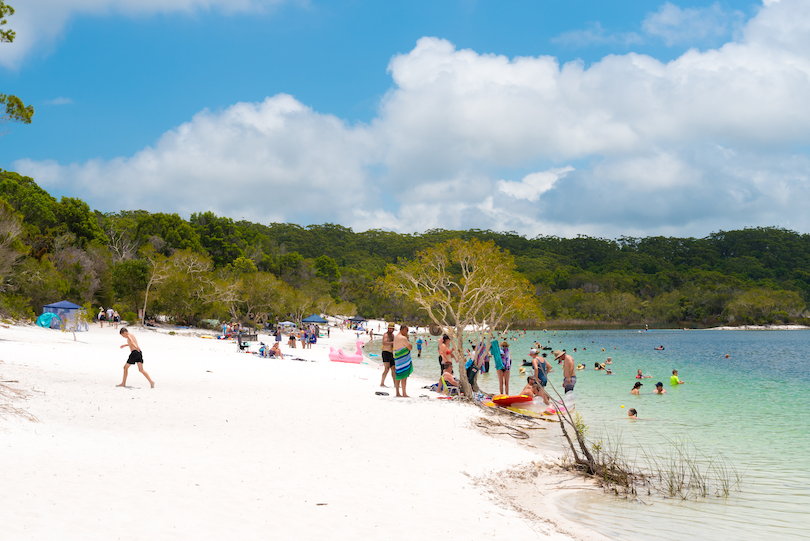
K’gari – formerly known as Fraser Island – is a pristine and enchanting island off the eastern coast of Queensland. Renamed in 2021, the island’s indigenous Butchulla name, K’gari, means ‘paradise’ – a fitting description for this natural wonder.
As the largest sand island in the world, K’gari is known for its diverse ecosystems, including lush rainforests, crystal-clear freshwater lakes and vibrant coastal dunes. Lake McKenzie, Lake Wabby and the Maheno Shipwreck are among the island’s iconic attractions.
K’gari offers a once-in-a-lifetime experience of unspoiled wilderness. Tourists can explore its natural beauty through various activities, including 4×4 adventures, hiking, camping, and wildlife watching. The island is also home to plenty of dingoes, so be mindful not to approach or provoke them.
9. Blue Mountains National Park
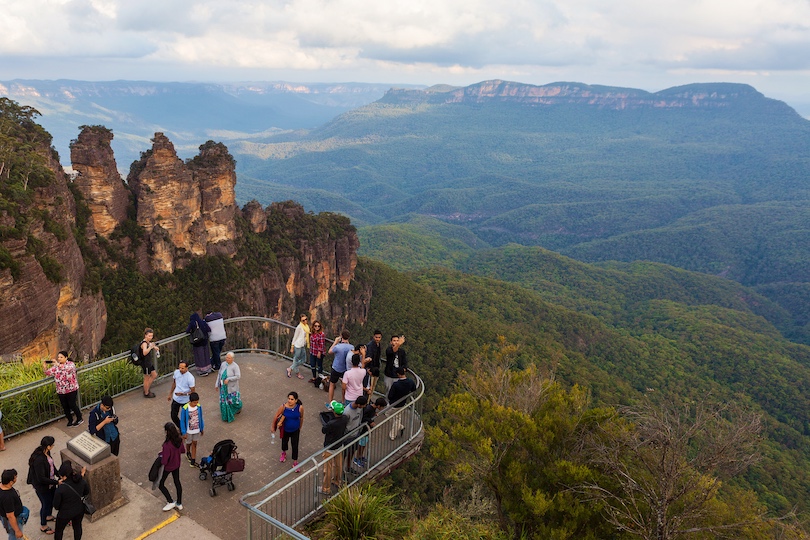
The Blue Mountains National Park is a breathtaking natural wonder about a 50-minute drive from Sydney . It is famous for its imposing sandstone cliffs, bosky eucalyptus forests, rugged canyons and thunderous waterfalls – which makes it a nature lover’s paradise.
The Blue Mountains is known for its misty atmosphere, created by eucalyptus oil evaporating from the gum trees, giving rise to the famous ‘blue’ haze that envelops the area.
It offers an extensive network of walking tracks, leading you through its diverse landscapes to prominent sites like the Three Sisters rock formation, Wentworth Falls and Jamison Valley.
One of the best things to do here is to experience the park’s stunning vistas on the Scenic Skyway, Cableway, or Railway. All of which provide unparalleled views of the valleys and forests below.
8. Cable Beach, Broome
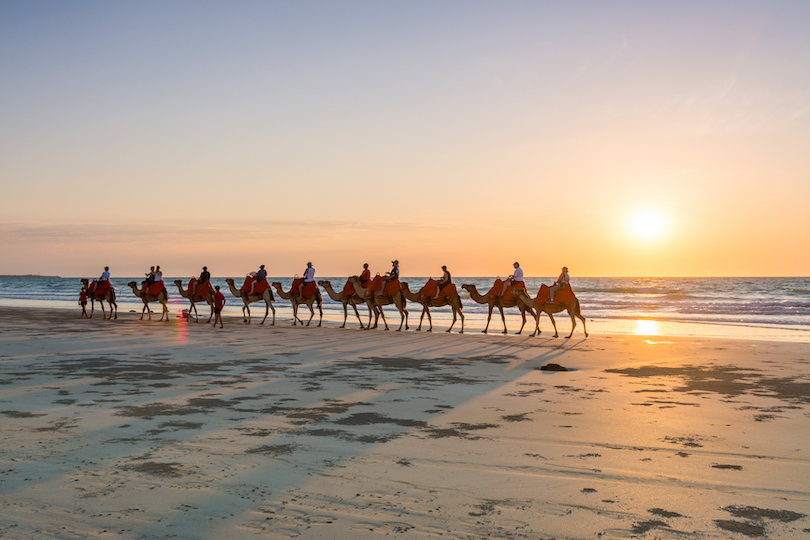
Stretching along the coastline from Broome, Cable Beach is one of Australia’s most iconic beaches. Characterized by its pristine white sands, clear turquoise waters, and stunning sunsets, the beach attracts visitors from all over the world.
Named after the undersea telegraph cable authorities laid between Broome and Java in the late 19th century, Cable Beach offers a perfect combination of natural beauty and leisure activities. Travelers can take leisurely walks along the shoreline, relax under the shade of the iconic red rocks, and take in the breathtaking views of the Indian Ocean.
Cable Beach is also famous for its camel rides along the shore, offering a unique way to experience the beauty of the beach, particularly at sunset. At this time, the vast, flat horizon provides an incredible and unobstructed view of the sun dipping below the sea.
7. Bungle Bungle Range
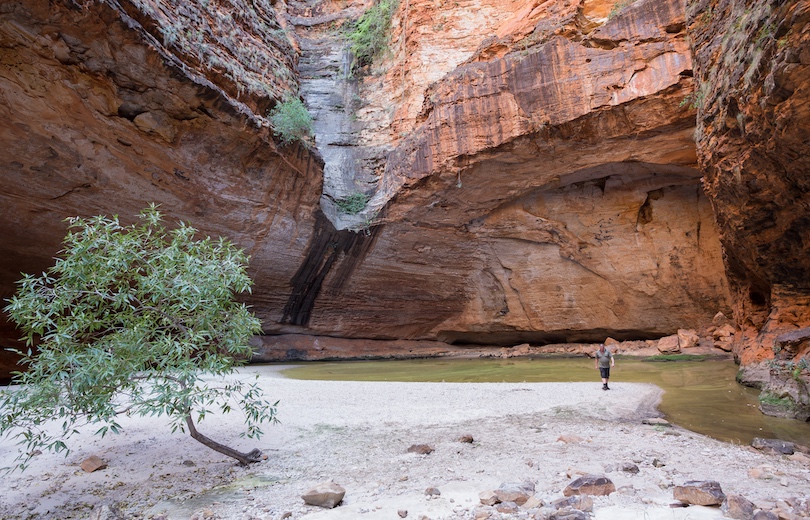
Situated within the remote Kimberley region of Western Australia, the Bungle Bungle Range is a mesmerizing geological formation that has to be seen to be believed. Nestled within the Purnululu National Park, this natural wonder is defined by its distinctive beehive-shaped domes.
Nature formed these orange and black-striped sandstone domes over 350 million years through the erosion of riverbed sediments and the subsequent weathering process. The alternating bands of colors are created by layers of sandstone and dark biological crusts, adding to the area’s stunning visual appeal.
The Cathedral Gorge, Echidna Chasm, and Piccaninny Creek are some of the most notable sites in the range. You can explore them and other towering cliffs and hidden gorges via a network of walking tracks and guided tours.
6. Whitsunday Islands
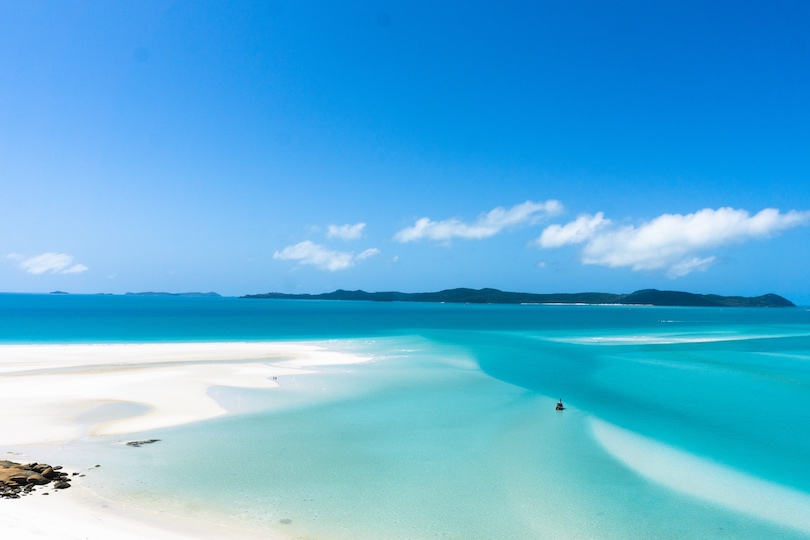
The Whitsunday Islands are a group of 74 stunning islands located in the heart of the Great Barrier Reef, off the coast of Queensland. Between them, these islands house picture-perfect beaches, azure waters, and vibrant coral reefs, making them paradisiacal destinations for lovers of sun, sea, and natural beauty.
Collectively, the Whitsundays offer a wide range of activities, including sailing, snorkeling, scuba diving, and swimming. The iconic Whitehaven Beach is notable for its white silica sand and cerulean waters.
Not all the islands are inhabited, but the ones you can visit include Hamilton Island and Daydream Island, which offer plush resorts to stay at for a few days.
5. Twelve Apostles
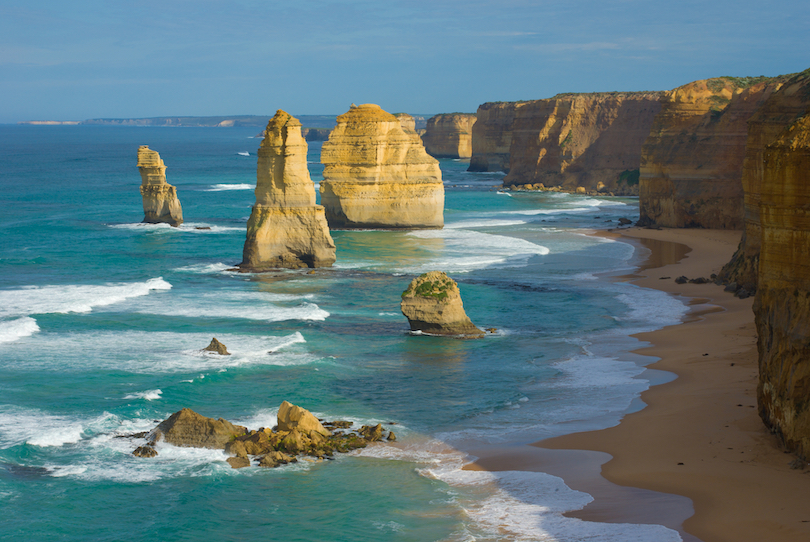
Over in Victoria, The Twelve Apostles is a world-famous natural landmark dotted along the dramatic coastline of the Port Campbell National Park. Despite its name, there were never actually twelve limestone stacks, and the erosion process has caused some of them to collapse over time.
Nevertheless, the site remains an awe-inspiring spectacle, with several impressive limestone pillars rising dramatically from the Southern Ocean.
The Twelve Apostles were formed over millions of years through the relentless erosion of the soft limestone cliffs by wind and wave action. These soaring stacks can be seen on viewing platforms or walking trails along the Great Ocean Road, which provide breathtaking vistas of them and the rugged coastline.
One of the best spots is at the bottom of the Gibson Steps, which gives an appreciation of the scale and majesty of one of the apostles from sand level.
4. Kakadu National Park
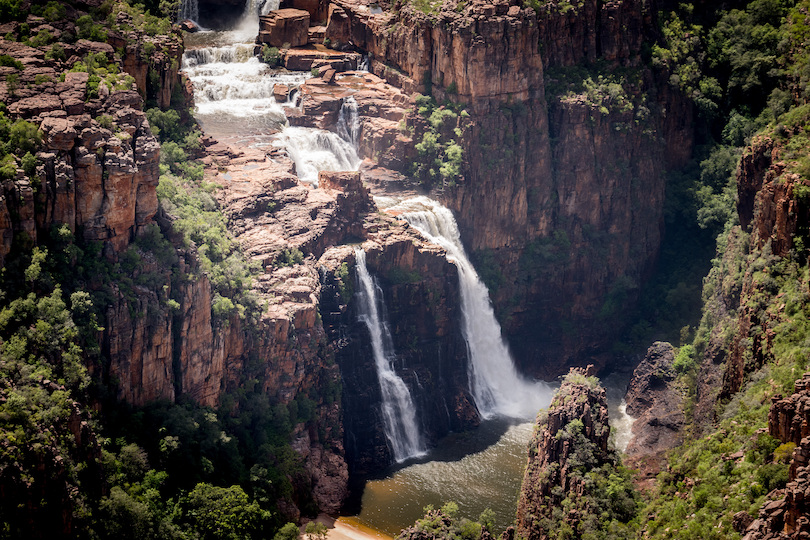
Kakadu National Park in the Northern Territory is one of the largest national parks in the world. It is a place of extraordinary natural beauty, rich cultural heritage, and unique ecosystems that you must set aside at least two or three days to see properly.
Kakadu is home to an incredible variety of landscapes, from floodplains to sandstone plateaus, monsoon forests to savannah woodlands, and meandering rivers. It is also a biodiversity hotspot with diverse flora and fauna, including saltwater crocodiles, kangaroos, and a remarkable bird species.
The best way to explore Kakadu is through walking trails, boat cruises and guided tours. Check out Nourlangie Rock, Yellow Water Billabong, and Jim Jim Falls during your time there. Also, ensure you see its Aboriginal rock art sites that date back thousands of years.
3. Great Barrier Reef
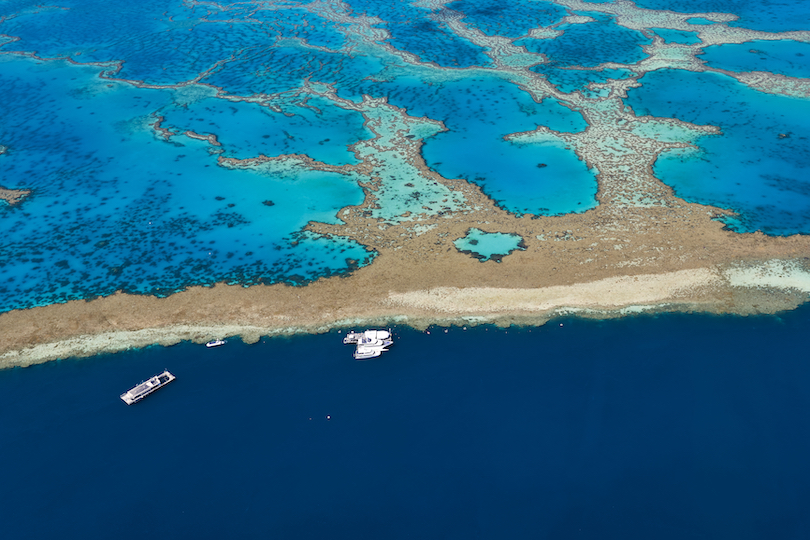
Stretching for more than halfway along the east coast of Queensland, The Great Barrier Reef is the world’s largest coral reef system. It is so big it is even visible from space!
This spectacular natural wonder is one of the planet’s most iconic and diverse marine ecosystems, comprising thousands of individual reefs and hundreds of islands. It plays a vital role in the ecological balance of the oceans and is a critical habitat for countless marine species.
The Great Barrier Reef is renowned for its breathtaking coral formations, vibrant marine life and idyllic waters. Whilst diving, snorkeling or sailing, you can encounter a kaleidoscope of marine species, including colorful corals, turtles, sharks, dolphins and countless fish species. Overall, it provides a fascinating showcase of the underwater world.
2. Uluru/Ayers Rock
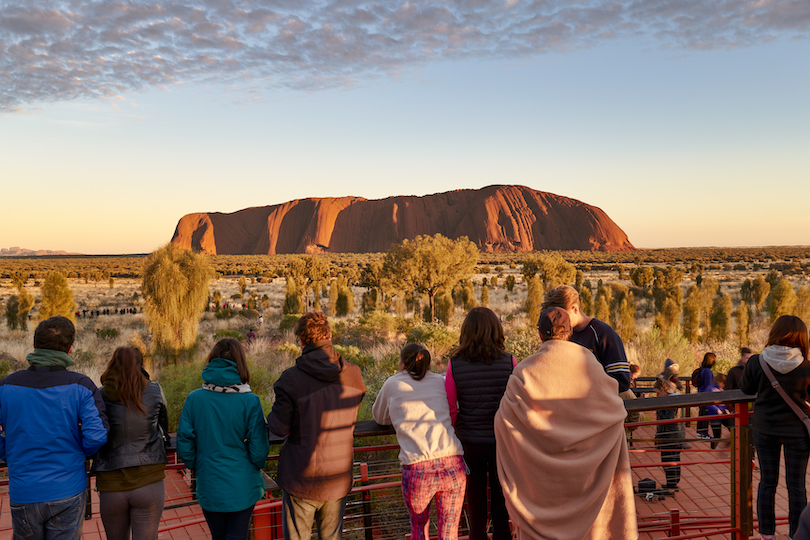
Arguably, one of Australia’s most iconic and sacred natural landmarks is Uluru . Formerly known as Ayers Rock, it resides in the heart of the outback, in Uluru-Kata Tjuta National Park.
Taller than the Eiffel Tower and bigger in landmass than Central Park in New York, the massive sandstone monolith is an imposing site. It holds deep cultural and spiritual significance for the local Anangu Aboriginal people, who have inhabited the region for thousands of years.
Visitors to Uluru can explore its base on foot, discovering ancient rock art, waterholes, and intricate geological features. Climbing Uluru is no longer encouraged out of respect for its cultural significance and safety concerns.
Impressively, the monolith’s colors change dramatically throughout the day, especially during sunrise and sunset, when it’s bathed in stunning hues of red and orange.
1. Sydney Opera House
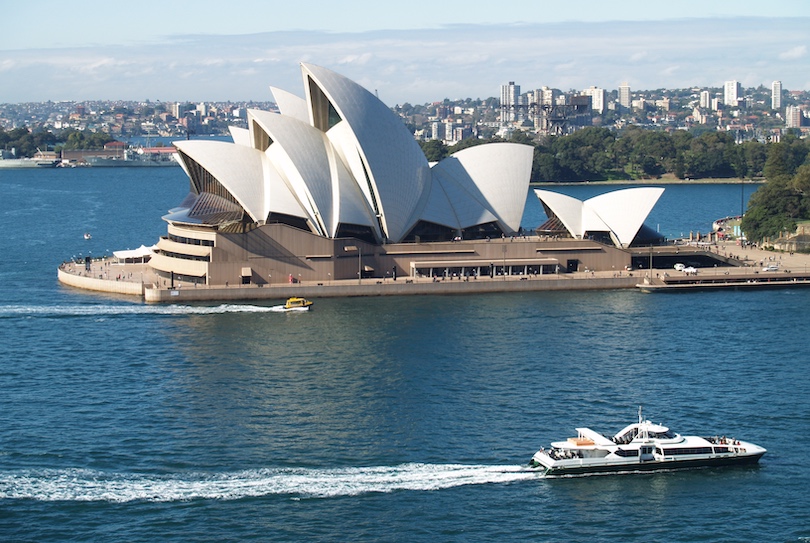
The Sydney Opera House ranks as one of the most iconic and recognizable architectural marvels in the world.
Situated on the picturesque Sydney Harbour , it was designed by the Danish architect Jørn Utzon and was officially opened in 1973. It is distinctive for its unique and innovative design, featuring a series of white, shell-like structures that evoke the sails of a ship billowing in the wind.
The complex houses several performance venues – including the Concert Hall, the Opera Theater and the Drama Theater. Between them, they host various artistic and cultural events, from operas and symphony concerts to theater productions and contemporary performances.
Tourists can explore the exterior of the Opera House and enjoy stunning views of the Sydney Harbour Bridge. They can also dine at its acclaimed restaurants and even take guided tours to learn about its history and architecture.

Map of Tourist Attractions in Australia
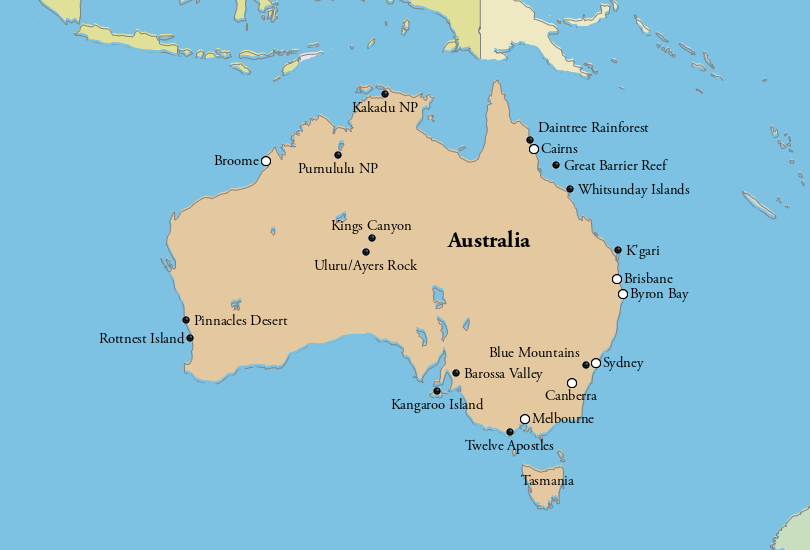
Share this post:
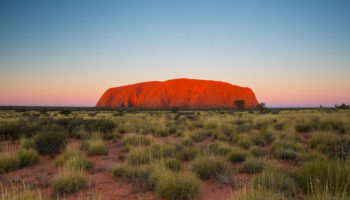
25 Best Places to Visit in Australia
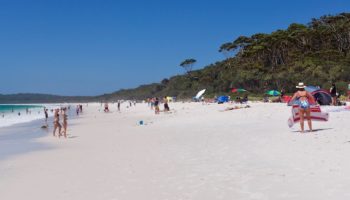
10 Best Beaches in Australia
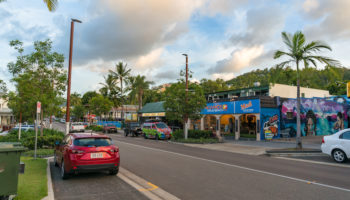
15 Most Scenic Small Towns in Australia
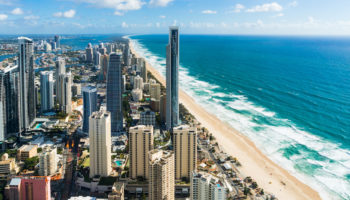
7 Most Beautiful Regions in Australia
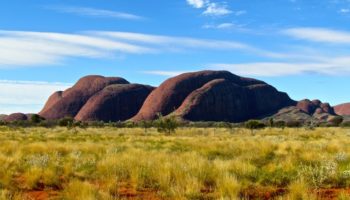
10 Most Beautiful National Parks in Australia
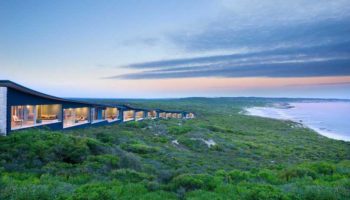
9 Most Amazing Places to Stay in Australia
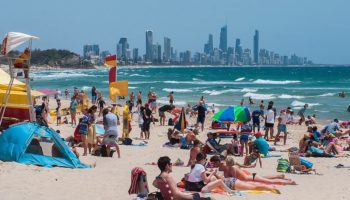
15 Best Cities to Visit in Australia
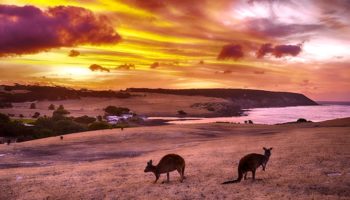
10 Best Islands in Australia You Should Visit
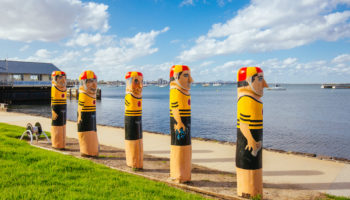
11 Best Things to Do in Geelong & the Bellarine Peninsula
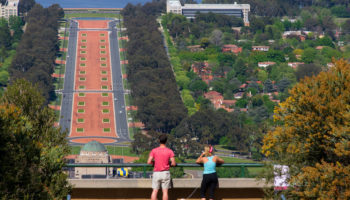
17 Best Things to Do in Canberra, Australia
Reader interactions.
October 22, 2018 at 2:41 am
This a a great list, but I’ve gotta let the readers know that trying to hit them all in one visit to Australia is going to be hard. These places are pretty spread out, and some of them a little remote. For sure add them to the bucket list, but getting to all of them in one holiday might be a bit hard (or expensive).
January 3, 2015 at 5:54 am
Very informative and great list, most of the popular holiday places in Australia are covered in this post. Amongst them, Sydney Opera house and Great Ocean Road are my favourite and you have shared some very useful information related to it.
Leave a Reply Cancel reply
Your email address will not be published. Required fields are marked *
This site uses Akismet to reduce spam. Learn how your comment data is processed .
16 things to know before going to Australia

Nov 3, 2023 • 10 min read
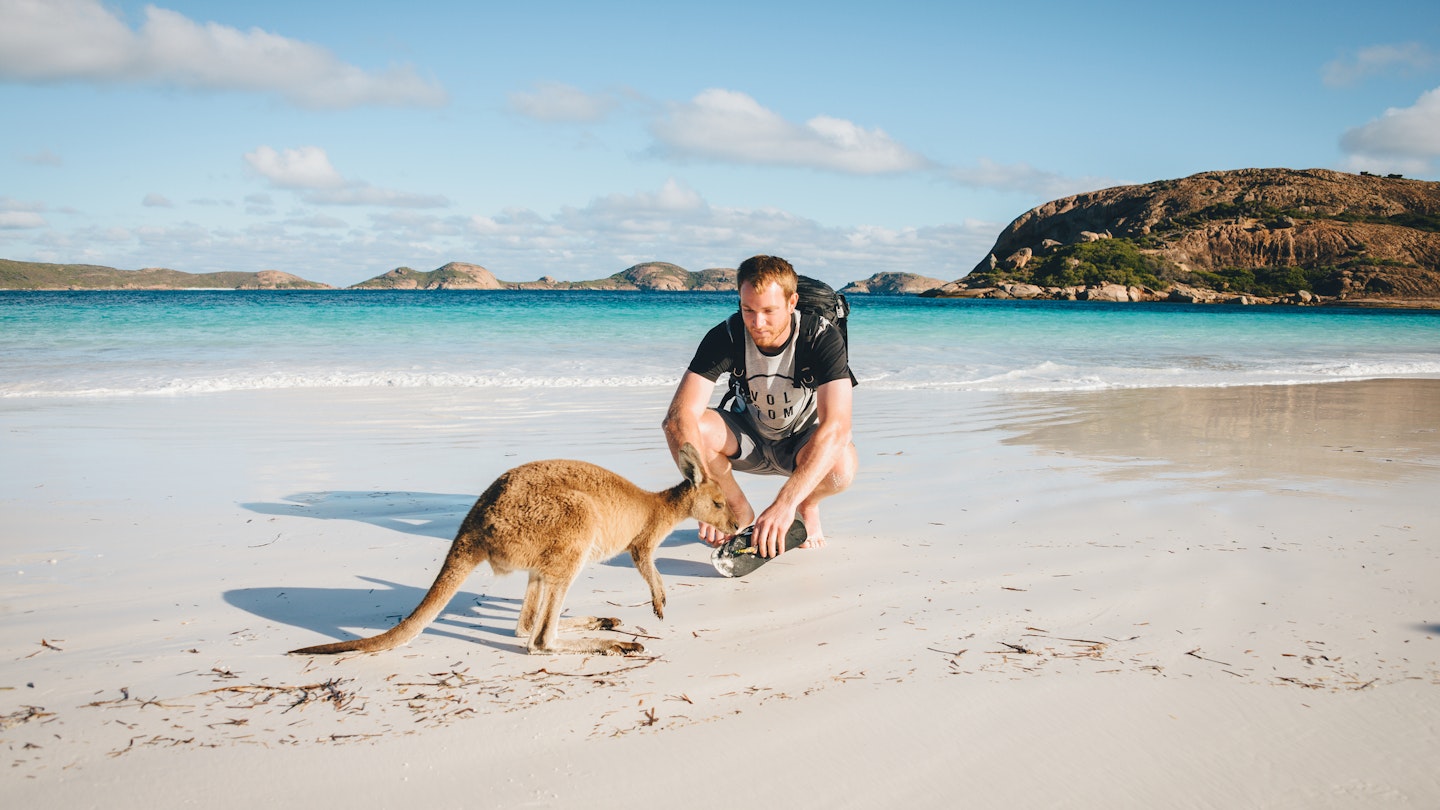
Follow these tips on health, safety, and etiquette for the best travel experience in Australia © John Crux Photography / Getty Images
As an Australian living in New York in my early 20s, I found myself fielding a wide range of questions about my home country.
Some were amusing, others were downright bewildering: “Do you ride kangaroos to school?” “Are there drop bears in the woods?” “Are Australian dollars really called ‘dollarydoos’?”
Australia can feel like an enigma, particularly for foreign travelers. It's a land filled with myths and misconceptions that could fill volumes, and the idea of Australia being a homogenous country is far from accurate. In reality, it's a diverse mix of cultures and ethnicities, with a rich Indigenous history spanning tens of thousands of years. Australian cities are multicultural hubs and most Australians live in vibrant urban centers – a sharp contrast to the rugged Crocodile Dundee stereotype.
This abundance of misinformation can make it challenging to prepare for a trip Down Under. To help you separate fact from fiction and ensure a smooth and enjoyable visit, here's a local’s guide to Australia and its people, including top tips on health, safety and etiquette.

1. There is no “right” time to visit Australia
Australia is almost as big as the United States, with everything from lush rainforests to snowy alps. Our weather varies significantly depending on where you are in the country and the time of year. The Northern Territory’s Top End remains hot year-round, with only two distinct seasons (the “wet” season and the “dry” season). In contrast, New South Wales experiences everything from blisteringly hot days during the summer to sub-zero temperatures during the winter. Even the Red Centre’s temperatures range from 3°C (37°F) to over 40°C (104°F) throughout the year.
Each state and region dances to its own climate tune, so think regionally when considering the best time for your visit and pack accordingly. To catch Uluru at its best, for example, opt for cooler months (between May to September) to avoid walking the base on a scorching day. In Tasmania , coastal heaths bloom from late October to early November, while food festivals are held from March to May. Winter is when Tasmania and the mountainous regions of New South Wales and Victoria experience snowfall. Meanwhile, visitors might find themselves cooling off in ocean waters along the East Coast year-round.
2. You’ll need to save money for your dream Australian holiday
Australia isn't known for being budget-friendly, particularly in cities such as Melbourne and Sydney. Iconic experiences like four-wheel driving across K’gari (formerly Fraser Island) or snorkeling on the Great Barrier Reef can be expensive, with tours and experiences costing hundreds of dollars per person.
However, smart planning and a clear budget can help you make the most of your money. Many of Australia's top outdoor attractions are free; from scenic drives along the Great Ocean Road to swimming at Bondi Beach .
3. If you want to see a kangaroo, get out of the city
Kangaroos aren't a common sight on bustling city streets – but you don’t necessarily have to “go bush” to see them. Instead, you'll find them in suburban areas including on golf courses, where they love to congregate on the links.
However, most kangaroo encounters usually happen during hikes or on road trips through regional landscapes, especially at dusk and dusk when they’re most active. Farm stays are also a great option if you want to see more of Australia’s wildlife . (And before you ask: Yes, you can eat kangaroo. It’s delicious.)
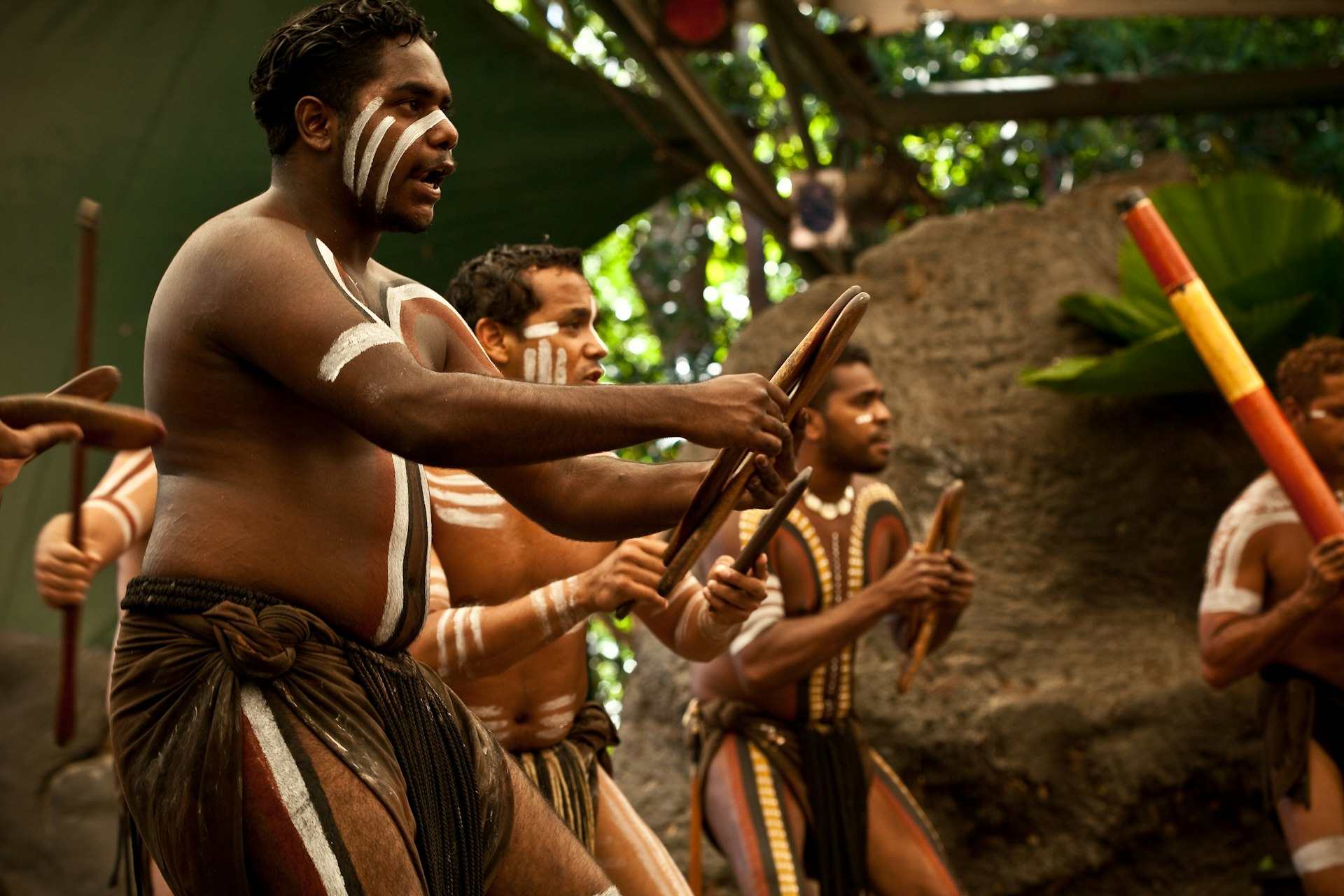
4. Australia is home to the oldest continuous living culture in the world
Australia's Indigenous population includes both Aboriginal and Torres Strait Islanders . This population is not a single group, but rather a rich tapestry of hundreds of distinct groups or “nations,” each with their own languages, histories, and cultural traditions. Translation? Not every group plays the didgeridoo or uses a boomerang.
During your visit, you’ll have the opportunity to learn more about the traditional landowners, with Aboriginal museums and art galleries dotted across the country. Indigenous-led tours – including those that are part of the Discover Aboriginal Experiences collection – are a great way to learn more.
5. Be prepared to talk to strangers on the train
Aussies are incredibly friendly and enjoy a good chat. You might find someone starting a conversation with you on a train or even stopping you on the street for a quick “chinwag.”
Australians are also known for their courtesy and manners. They'll hold doors open and if you're in their way, they'll step aside. As a visitor, it's important to be mindful of your surroundings and return the favor by holding a door or an elevator – a small gesture that means a lot.
6. The Great Barrier Reef is vulnerable – but it’s not “dead”
The Great Barrier Reef – arguably Australia’s most iconic attraction – made headlines in 2016, when reports claimed it was “dead” following coral bleaching events.
There’s no question that climate change has had an adverse effect on the Great Barrier Reef . In addition to increasing water temperatures, the vulnerable ecosystem has also been impacted by pollution from land run-off and the increasing severity and frequency of cyclones.
However, the Great Barrier Reef is more resilient than you think. It’s also far from lifeless. If you dive into the water, you may see evidence of bleaching events, but you’re just as likely to see colorful corals teeming with life. Increasingly, visitors can also get involved in reef restoration, including by participating in citizen science surveys such as Eye on the Reef.
7. Walking around barefoot is normal
Be prepared to see many Aussies strolling around barefoot, even in cities and public places, such as grocery stores, cafes and hardware stores.
Why? It all comes down to beach culture, which has a way of spilling over into everyday life, whether there’s sand and salt water present or not.

8. Keep a sense of perspective about crocs, snakes and spiders
Despite the famous belief that all wildlife Down Under is out to get you, a 2017 study conducted by Melbourne University researchers found that horses have caused more deaths in Australia than all the venomous creatures – including snakes and spiders – combined.
The reality is that crocodiles aren't wandering the streets (they’re only found along coastlines and waterholes in Western Australia, the Northern Territory and Queensland) and you’re more likely to encounter possums and harmless insects in buildings. Just be cautious of swooping magpies if you're in parks between August and October. This is when they’re breeding and are protecting their eggs or newly hatched chicks.
9. Restaurant kitchens close between 3pm and 5pm
Australia's urban and rural areas have their own life rhythm. In cities, restaurants tend to wrap up service by 11pm, but it's as early as 8pm in rural areas. Nightclubs and bars close around 2am.
What catches many travelers off-guard is that there's also a mid-afternoon dead zone between 3pm and 5pm, when the majority of cafes and restaurants are closed. Even the kitchens in pubs may not do food service at this time. If you’re after something to eat between these hours, fast food is your friend.
10. You don't need to tip in Australia
Australia's minimum wage is higher than in many countries. (At the time of writing, the national minimum wage is $23.23 per hour.) As a result, tipping isn’t customary in Australia, as all service charges are already factored into the cost of your meal. However, if you genuinely wish to show appreciation for outstanding service, tipping is at your discretion.
11. Australians speak an entirely different kind of English
Australians are renowned for their own unique take on the English language and you’re going to encounter a lot of slang from locals. Regional variations also exist, so if you meet someone from outback Queensland , they’re going to sound a little different to someone from Brisbane .
“Arvo” (good afternoon) is not to be confused with “avo” (avocado). You buy booze from the “bottle-o” and get “petty” (petrol or gas) from the “servo” (service station). Many words are abbreviated, with an “o” or “ie” added to the end. Endearing terms like “mate” are also common, but phrases you likely won’t hear (from anyone under the age of 60, at least) are “crikey” or “fair dinkum.”
One thing you will hear? Colorful language. Don’t be surprised or take offense if you catch an Australian dropping a swear word during a chat. It’s normal.
12. Meat pie, Vegemite and chicken salt are must-try foods
Australia lacks a single defining cuisine, but few things are as quintessentially Aussie as tucking into a steaming meat pie, traditionally served in a paper bag with a generous squeeze of tomato sauce (ketchup). It's a deliciously messy experience and an integral part of Australian food culture .
Vegemite is also a must-have experience. Spread a thin layer (thin being very important) on toast for a salty kick. Speaking of salt, chicken salt on hot chips (fries) is a near-obligatory and delightful initiation for newcomers. This seasoning has been a popular add-on to fries since it was launched in Australia in 1979. (By the way, it’s usually vegan. There's no actual chicken in it; just a lot of MSG.)

13. Snorkeling on the Great Barrier Reef requires covering up
Are you excited about that cute holiday snap snorkeling on the Great Barrier Reef? Don’t spend too much time selecting a bathing suit for photo ops as nobody will see it.
That’s because from May to November, it's stinger (jellyfish) season in tropical north Queensland. You'll need to don a rather stylish stinger suit supplied by your tour boat operator, complete with a hood and mitten-like hand covers. It might look a bit peculiar, but it's your best defense against the venomous and often hard-to-spot irukandji and box jellyfish that lurk in the water. It's much better than the alternative – getting stung.
14. People walk on the left
On sidewalks, trails and stairs, sticking to the left helps maintain a smooth flow of foot traffic and prevents any awkward dance moves with strangers trying to pass. Some train stations have arrows to direct the flow.
This practice also aligns with Australia's left-hand driving tradition. According to the UK’s National Motor Museum, driving on the left may have emerged as a safety measure, particularly when the main road hazard was highway robbery. Travelers would pass oncoming strangers on their right side, keeping their sword arm toward the passer-by. (Don't worry, you won't be jousted in Australia.)
15. The Outback can be unforgiving
Don't underestimate the harshness of the Australian Outback . Although it covers roughly 70% of the Australian continent, only around 5% of the population lives there. For those unprepared for its remote conditions, it can also present danger. A broken-down car, for example, could lead to heat exhaustion, dehydration, or worse.
So, if you're planning an independent outback road trip – to the Nullarbor Plain or Flinders Ranges , for example – do your homework and prepare for anything and everything. Stock up on water, go slow (especially on gravel roads), and let someone know your plans because the phone signal is spotty at best. For added safety, consider a personal locator beacon to instantly alert emergency services in case of trouble. If that sounds daunting, countless tour operators are pros at taking tourists – safely – through these iconic landscapes.
16. Beware of dangerous currents when swimming in the ocean
The primary danger for swimmers at Australian beaches isn't the wildlife; it's the perilous underwater currents known as “rips.” Rip currents have the potential to pull swimmers out to sea and are typically found in areas with underwater sand banks that obstruct the free flow of water back to the shore.
Not every beach is patrolled by lifeguards, so it's best not to risk it if you're not a confident swimmer. Just dip your ankles in for the same feeling.
Explore related stories
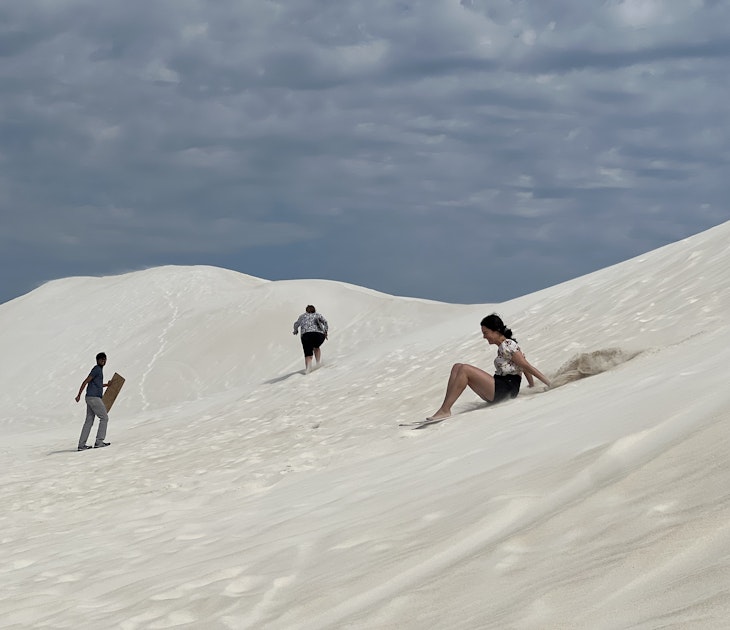
Art and Culture
Apr 4, 2024 • 5 min read
Perth’s immersive Indigenous experiences, stunning scenery and innovative culinary scene make it one of Australia's most exciting cities.

Mar 30, 2024 • 4 min read
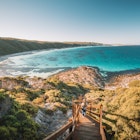
Mar 29, 2024 • 19 min read
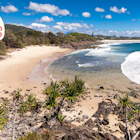
Feb 27, 2024 • 6 min read

Jan 30, 2024 • 9 min read

Jan 17, 2024 • 8 min read

Jan 5, 2024 • 20 min read

Dec 27, 2023 • 8 min read
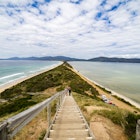
Dec 3, 2023 • 8 min read

Nov 29, 2023 • 10 min read
- South Africa
- Philippines
- New South Wales
- Northern Territory
- South Australia
- Western Australia
- Switzerland
- United Kingdom
- Netherlands
- New Zealand
- Solomon Islands
- Itineraries
- About Travel2Next
- Hotel Reviews
- Travel2Next TV
- Travel Shop
- Destinations
- Landmarks and Monuments
25 Australian Landmarks
- This post may contain affiliate links. Read our disclosure.
Ask most people to name the top landmarks in Australia and the answer is likely to include the Sydney Opera House, Uluru and Great Barrier Reef. But there are so many more. Australia is a land of unique and distinctive natural Australian landmarks that are as spectacular as the continent itself when viewed from space.
According to the Cambridge Dictionary, a landmark is “a building or place that is easily recognised, especially one that you can use to judge where you are”. The Merriam-Webster Dictionary takes a broader approach to defining the meaning of “landmark” and describes a landmark as “an object (such as a stone or tree) that marks the boundary of land”.
Well, Australia has plenty of really impressive stones and lots of trees! So, choosing 20 landmarks wasn’t an easy task and the criteria I’ve used to compile this Australian landmarks list:
- A distinctive feature of a landscape easily seen and recognised from a distance, especially if it helps identify the location.
- A recognisable natural or human-made feature used for navigation
- Some landmarks may not necessarily be classified as famous Australian landmarks or be on the UNESCO world heritage but may qualify as a landmark on the points above.
1- Sydney Opera House
3- great barrier reef, 4- port arthur, 5- australian war memorial, 6- captain cook statue , 7- melbourne cricket ground, 8- eureka skydeck, 9- queen victoria building, 11- bondi beach, 12- story bridge, 13- sydney harbour bridge, 14- sydney tower eye, 15- 12 apostles, 16- the three sisters, 17- bungle bungles, 18- the burke and wills dig tree, 19- lake hillier, 20- wilpena pound, 21- the big merino , 22- the big banana, 23- the big pineapple, 24- the big prawn, 25- the big golden guitar, landmarks in australia.
- Australian Highlights – A 13-day guided trip of natural landmarks in Australia.
- Sydney Opera House Official Guided Walking Tour – Learn the secrets of this architectural marvel.
- All-Inclusive Small-Group Blue Mountains – Day Trip from Sydney with Scenic World.
- Uluru (Ayers Rock) Sunset with Outback Barbecue Dinner and Star Tour – amazing outback experience.
- Great Barrier Reef – Snorkelling and Diving Cruise from Cairns.
Famous Australian Landmarks
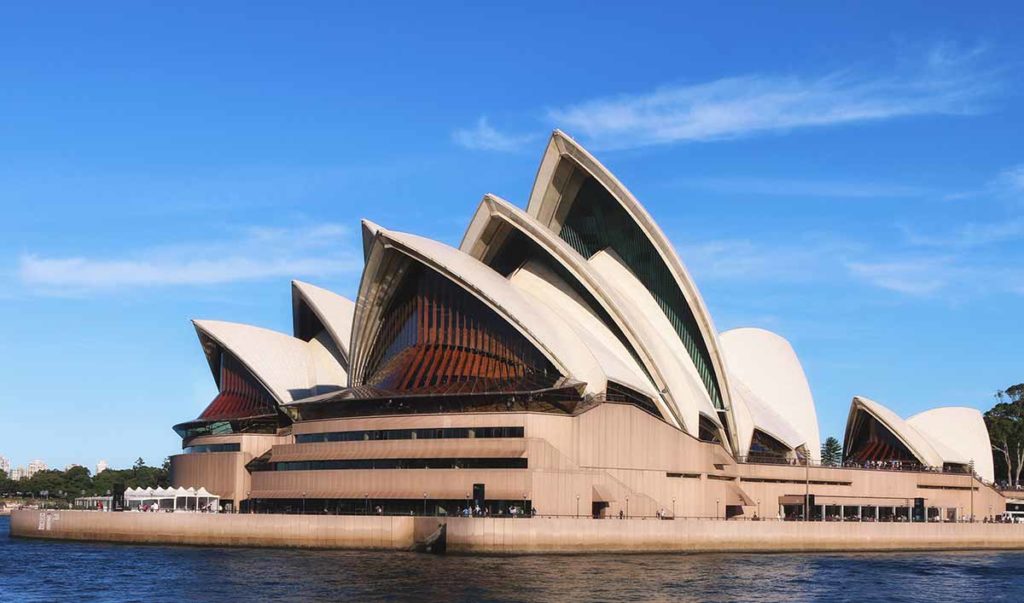
One of the most iconic Australian landmarks in Australia would have to be the Sydney Opera House.
As soon as you see it you know exactly where you are.
Not only is the famous opera house one of the most architecturally stunning Australian landmarks in a city, but it’s also one of the most well-known buildings in the world.
Experts recognise the Sydney Opera House as one of the great architectural works of the 20th century.
Designed by Danish architect Jørn Utzon, this Australian landmark is listed as a UNESCO World Heritage Site for its creativity, innovation and structural design.
Visiting Sydney soon? Put aside at least an entire day to thoroughly explore the Sydney Opera House by taking a backstage tour , seeing a show and having a drink at the Opera House bar.
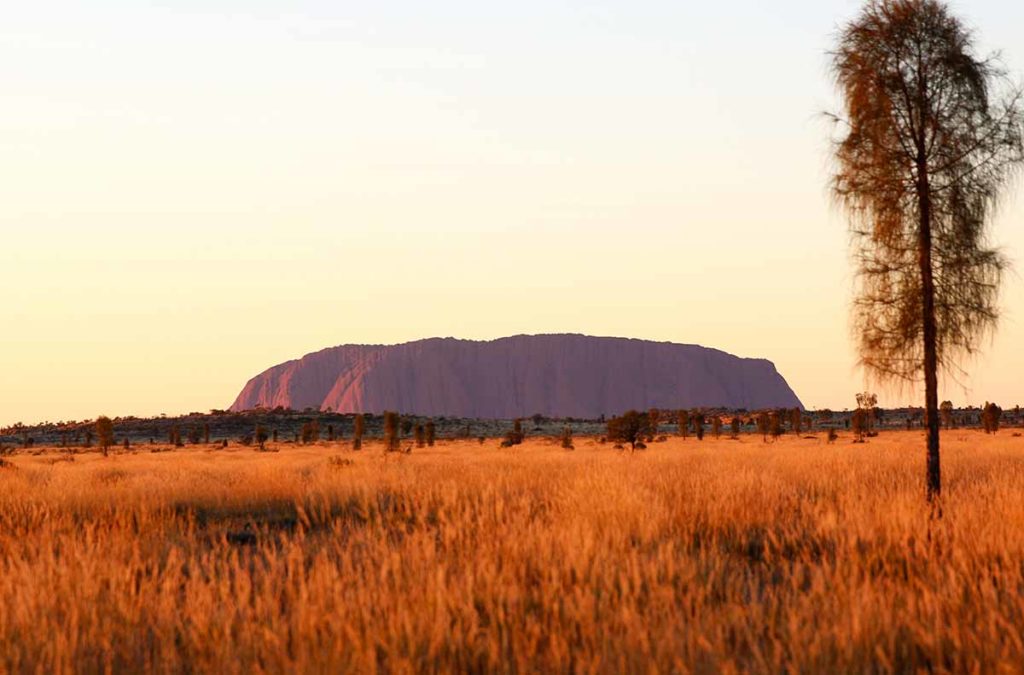
The craggy sweeping mountain ranges and sweeping plains around Uluru hides a treasure trove of spectacular gorges, canyons, craters and waterholes.
Although Central Australia’s hidden gems are a lost world of amazing natural treasures, the one that stands out as an iconic Australian landmark as Uluru.
As soon as you set eyes on Uluru, you’ll understand why it’s often referred to as the heart of Australia.
Previously known as Ayers Rock, this World Heritage site rises 348m from the desert floor and is an impressive Australian landmark that dominates the landscape.
Uluru is more than 550 million years old and is a sacred site to the Anangu people.
For its location in the centre of Australia, Uluru is often called the heart of Australia.
Even though the nearest town, Alice Springs, is 450 km away, thousands of tourists visit this UNESCO World Heritage Site each year.
Visiting Australia soon? Take your time to explore Uluru-Kata Tjuta National Park and the nearest town Alice Springs .
Top Tour: Uluru (Ayers Rock) Sunset with Outback Barbecue Dinner and Star Tour .
Anyone can tell you that the term Great Barrier Reef identifies with Australia, but the most apparent indication you’re looking at the Australian Great Barrier Reef is that eye-catching heart-shaped reef.
If you’re looking for one of those Australian landmarks to help with navigation (or a romantic spot to propose), Heart Reef stands out as the spot.
The World Heritage-listed Great Barrier Reef stretches 2300 km along the Queensland coast and has a remarkable assortment of marine life.
From whales, dugongs, dolphins and sharks to millions of fish, coral and turtles, call this national treasure home.
Top Tour: Great Barrier Reef Snorkeling and Diving Cruise from Cairns .
Historic Australian Landmarks
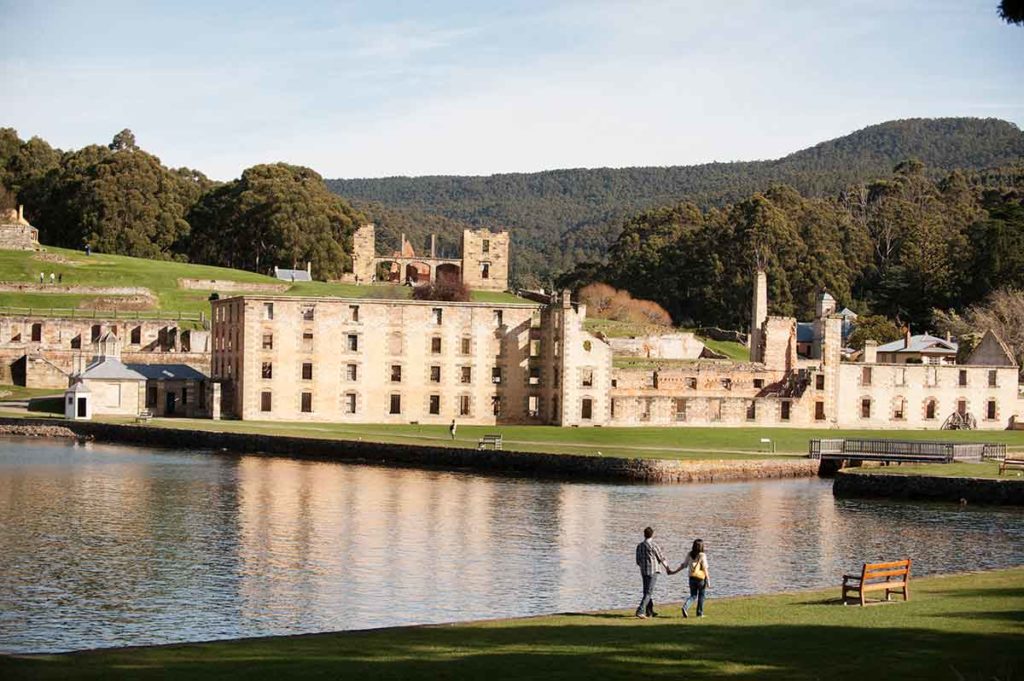
Between 1788 and 1868, around 164,000 convicts were shipped to the Australian colonies on board 806 ships.
It was an episode in history that steered the direction of two nations – Australia and Great Britain.
In 2010, the Australian Convict Sites became Australia’s 18th World Heritage-listed property.
Eleven places scattered around the country made this list, including Cockatoo Island , Norfolk Island and Hyde Park Barracks, but the historic penal settlement that stands out from the rest is Port Arthur in Tasmania.
From a small timber station in 1830, Port Arthur has emerged as the most famous convict site and one of the historic Australian landmarks of note.
Buy the Port Arthur Historic Site 2-Day Pass .
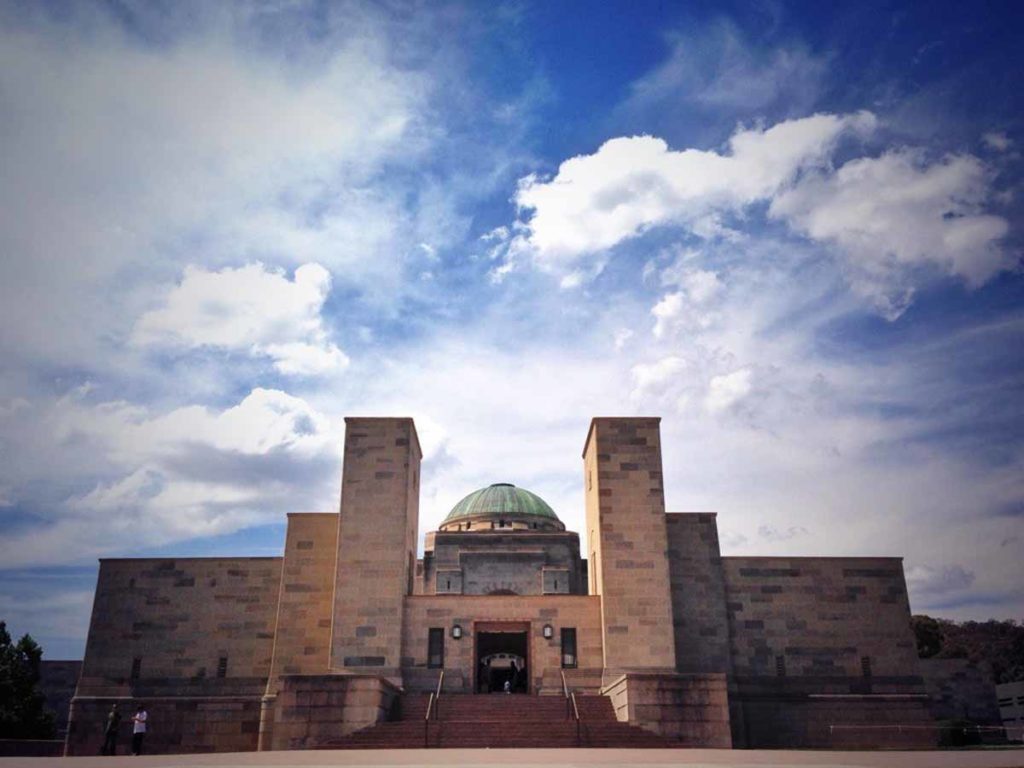
A blend of shrine and museum, the Australian War Memorial in Canberra pays homage to the sacrifice of Australians who died at war.
Voted as the number one Australian landmark on TripAdvisor, the Byzantine architecture of the monument has a grandeur that puts it high on the list of the world’s great national monuments.
Exhibitions at the Australian War Memorial are impressive and you could easily spend an entire day in the museum.
Top tour: Canberra Day Trip from Sydney .
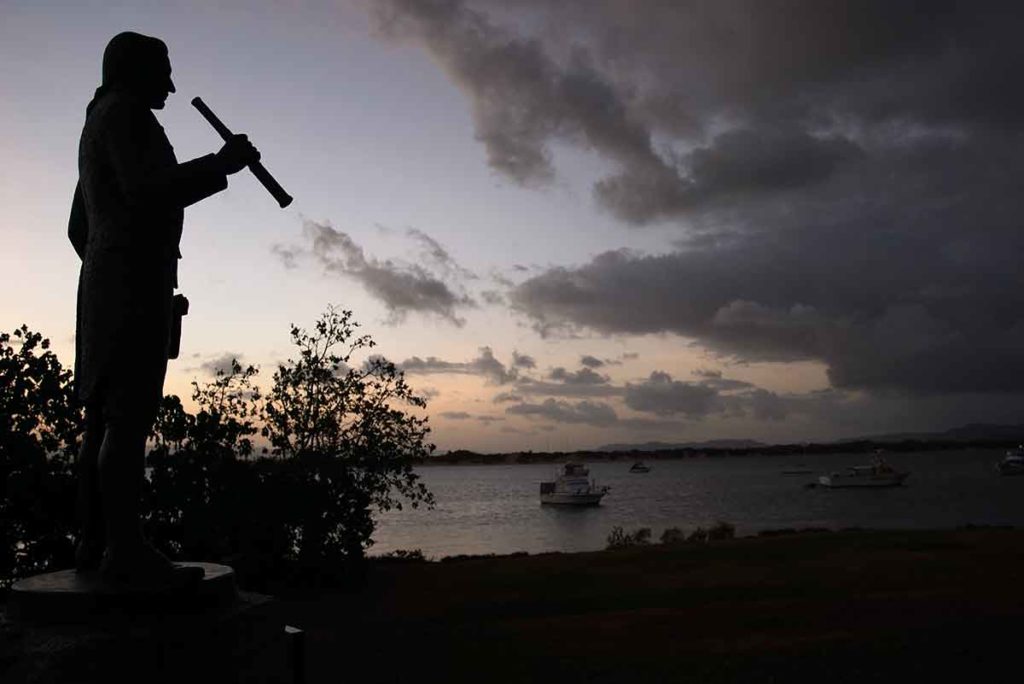
Anyone who has visited Cooktown only needs to see the statue of Captain James Cook to know that it marks a spot on the Esplanade in Bicentennial Park in Cooktown.
Although Cooktown was named after the British explorer who charted Australia’s east coast while sailing aboard HMB Endeavour, Cooktown was not where he first set foot on land (it was where he got stranded).
You can travel to Cooktown by land and the trip from Cairns to Cooktown is quite an adventure.
Lt (he wasn’t a captain back then) Cook landed in Botany Bay in Sydney on April 29 1770, paving the way for colonisation.
There’s a modest Captain Cook statue in Sydney’s Hyde Park, a monument on Norfolk Island and a substantial Captain Cook monument to commemorate the 250th anniversary of this historic landing is expected to be built by 2020.
Meanwhile, the little-known statue in Cooktown does dominate the small town with its presence, making it our pick of Australian landmarks to remember this period in Australia’s history.
Read this post for more things to do in Cairns .
Top tour: 3-Day Small-Group Tour of North Queensland with Pick Up .
Australian Landmarks In A City
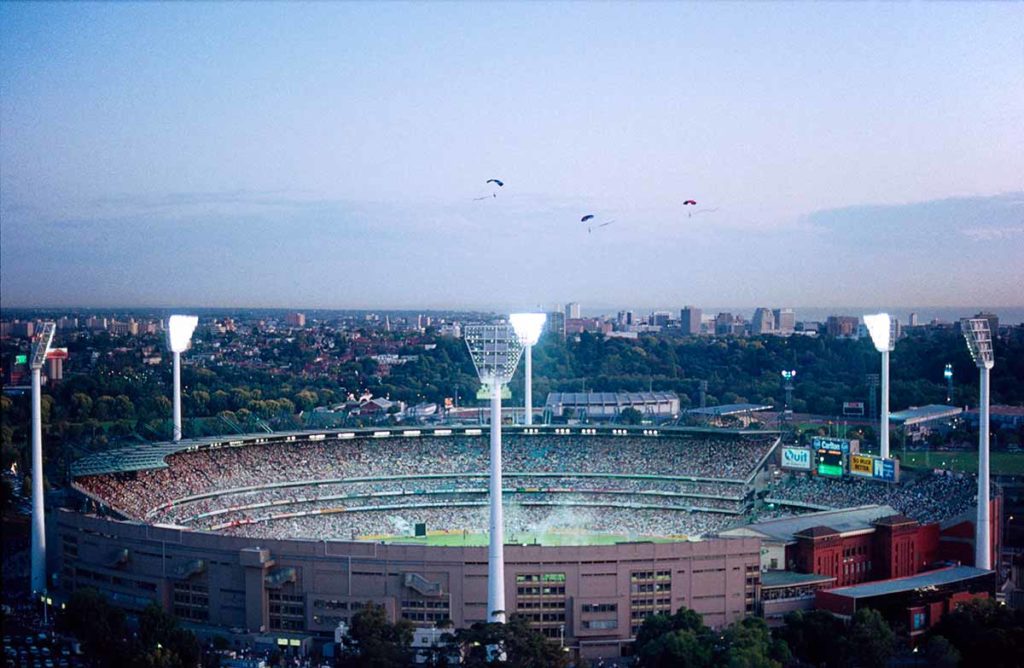
The home of Australian football since 1859 was the birthplace of Test cricket in 1877 and one-day international cricket in 1971.
However, the MCG is more than just a sports venue – it’s the sporting heart of Melbourne.
Prebook your tickets for the tour of the MCG here.
Towering above the Melbourne city landscape, 285 metres above ground, the Eureka Skydeck is a Melbourne landmark you can’t miss.
As far as Australian landmarks go, it epitomises the character of a fast-growing city, and has one of the best 360-degree views of Melbourne through floor-to-ceiling glass.
It’s not just a landmark, viewing platform, or a place to face your fear of heights but an entertainment and dining hub.
Visiting Eureka Skydeck is one of the most amazing things to do in Melbourne at night .
Skip the line and reserve your tickets here .
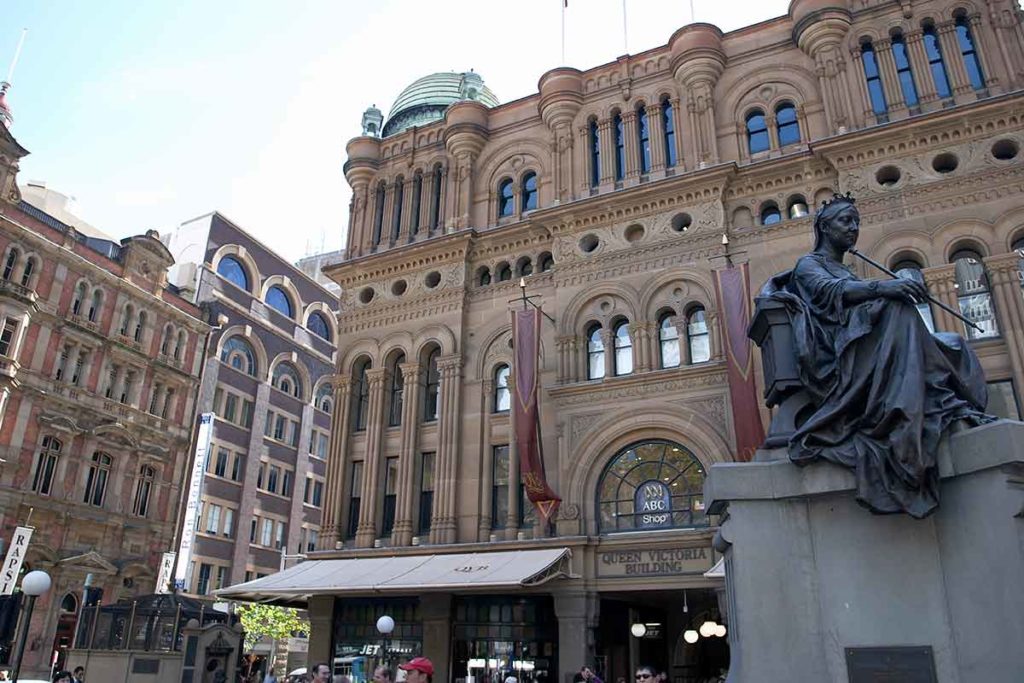
Any Sydneysider dropped in front of the Queen Victoria statue at the Queen Victoria Building (or QVB) will instantly know where they are.
If you’re wondering why a shopping centre is on our list of Australian landmarks, it’s because the QVB’s elaborate Romanesque architecture was planned so that the Government could employ out-of-work stonemasons, plasterers and stained window artists to construct a building that would stand the test of time.
Designed by George McRae and completed in 1898, the QVB has been a concert hall, city library and offices for the Sydney City Council in the past.
Fun fact: A letter from Queen Elizabeth II to the Citizens of Sydney is sealed in a time capsule to be opened and read by the Lord Mayor of Sydney in 2085.
How old will you be when it’s opened?
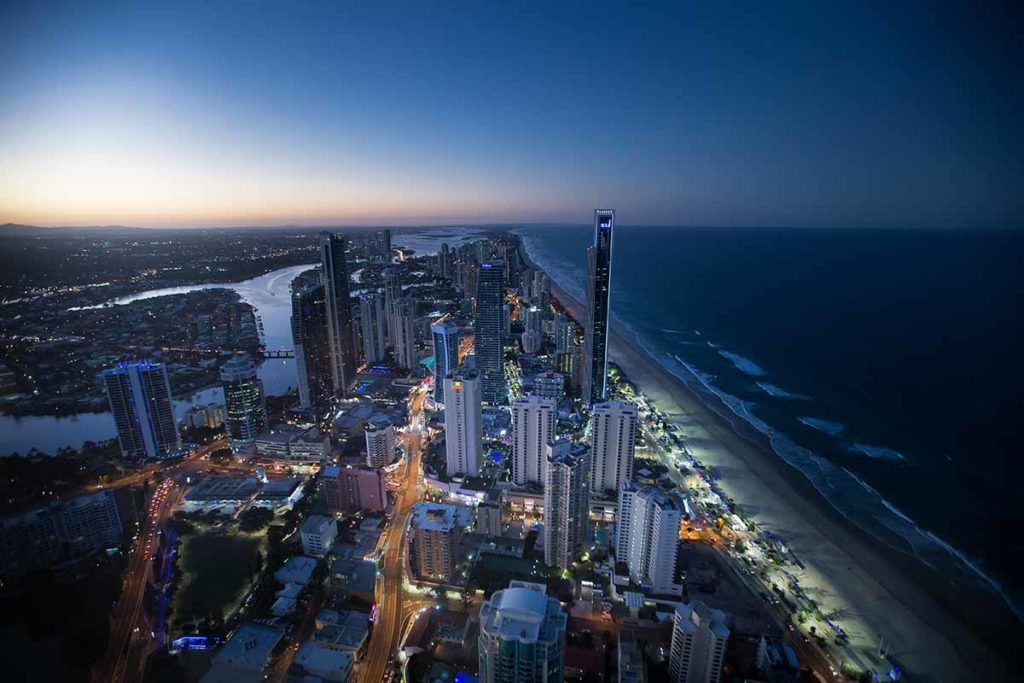
Look at a photo of the Gold Coast and you’ll see that the Q1 building soars above the Surfers Paradise skyline.
Although the Gold Coast has some of Australia’s best surf beaches, Q1 is an Australian landmark that identifies Surfers Paradise from the numerous other beach communities along this stretch of Queensland paradise.
What to do? Head to the SkyPoint Deck for twinkling views or sign up for the SkyPoint Climb 270 m high and Australia’s highest external building climb.
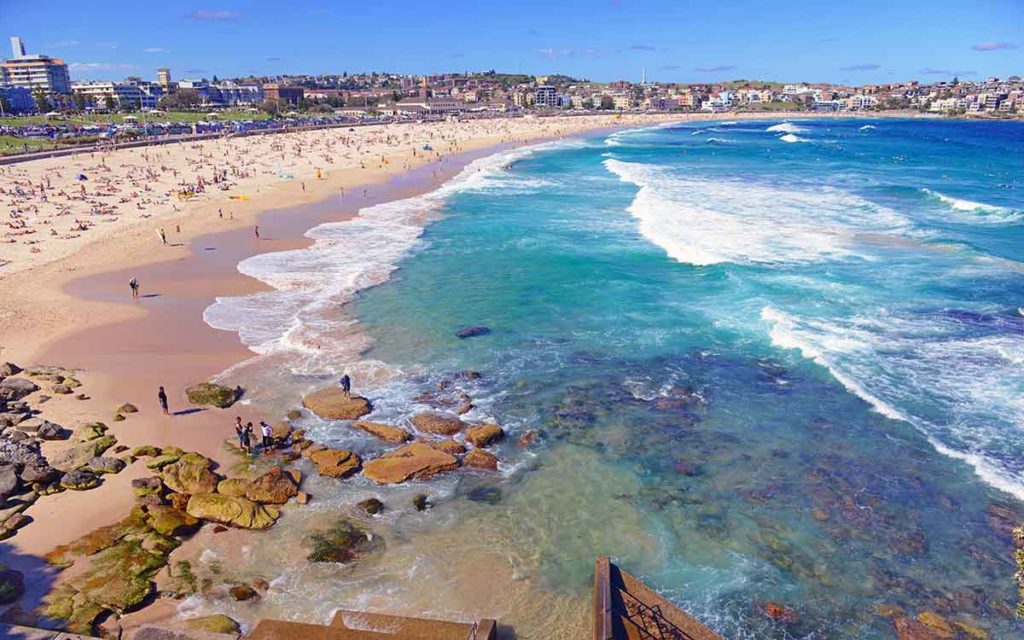
How do you distinguish Bondi Beach from the plethora of amazing Australian beaches across the country? Is it the bronze bodies tanning in the sun? Or is it the wave of surfer dudes riding the crests?
Perhaps it’s the Bondi Icebergs swimming pool on the ocean’s edge?
All of these things could describe any of Australia’s beautiful beaches, but the one thing that separates Bondi Beach from the others and places it on the list of one of the prominent Australian landmarks is its name.
Bondi Beach.
Yes, it’s famous.
Top tour: Discover Bondi Guided Beach And Coastal Walking Tour .
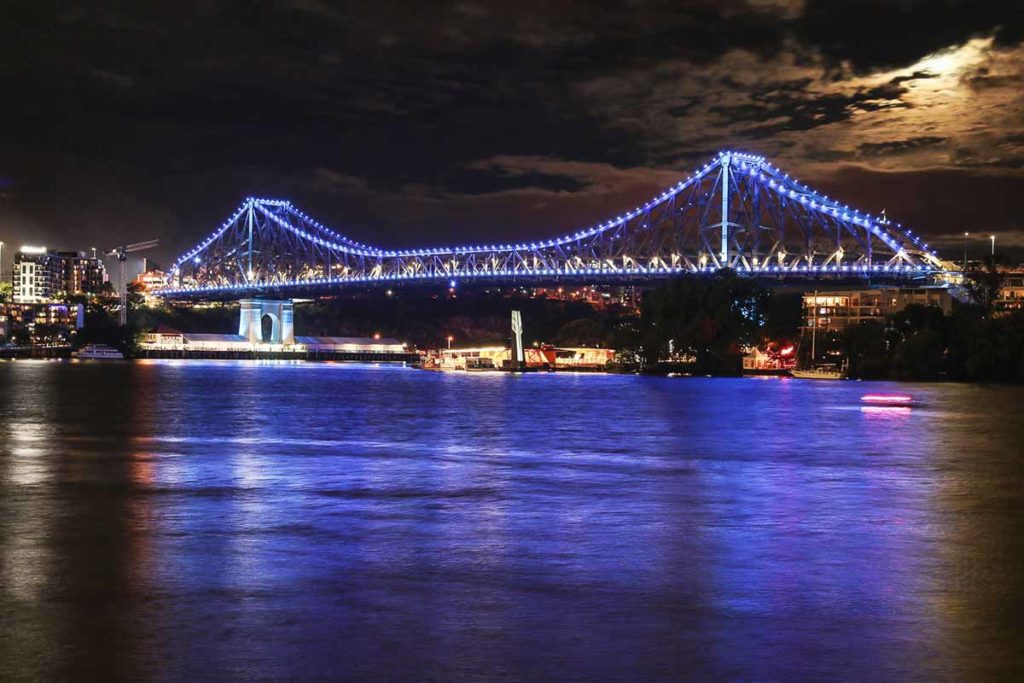
Most people outside of Brisbane have probably never heard of the Story Bridge, but if you kidnap a Brisbanite, blindfold them and dump them within view of the Story Bridge, they’ll instantly know where they are.
Yes, you can climb the Story Bridge!
The Story Bridge was conceived in 1925 but wasn’t completed until 1940.
Top experience: Brisbane Story Bridge Adventure Climb .
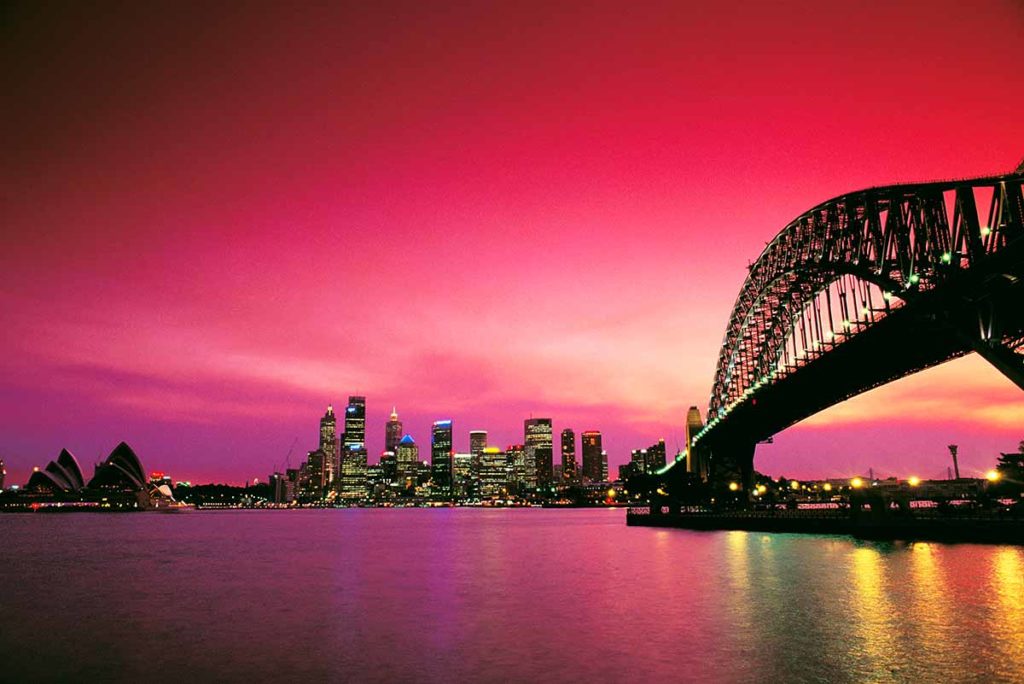
The engineer who built the Story Bridge also constructed the Sydney Harbour Bridge, which is featured every New Year’s Eve in a fireworks display that gets more spectacular each year.
Opened in 1932, the Sydney Harbour Bridge is one of the most recognisable Australian landmarks, not just because it’s positioned across Australia’s most stunning harbour.
Sydney Harbour Bridge is a popular tourist attraction for its bridge climbs and a spot to take souvenir photographs of Sydney.
Here’s where to stay in Sydney around the city and harbour.
Top tour: 30-Minute Sydney Harbour and Olympic Park Helicopter Tour .
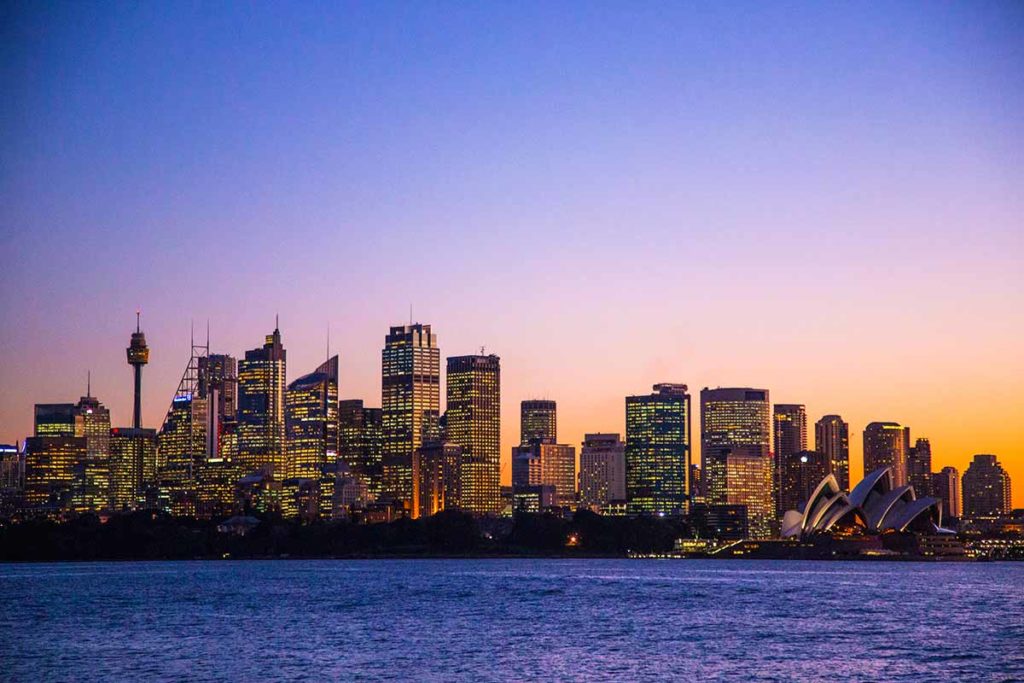
Ask any Australian where to find the tallest tower in the country, and the answer is most likely to be Sydney Tower.
A contemporary Australian landmark that attracts visitors from around the globe, the Sydney Tower Eye (often referred to by Sydneysiders as Sydney Tower, Centrepoint Tower, AMP Tower, Westfield Centrepoint Tower or Sydney Skytower) is one of those iconic Australian landmarks that has been part of the Sydney skyline for 30 years.
Skip the line and pre-book your tickets here .
Natural Australian Landmarks
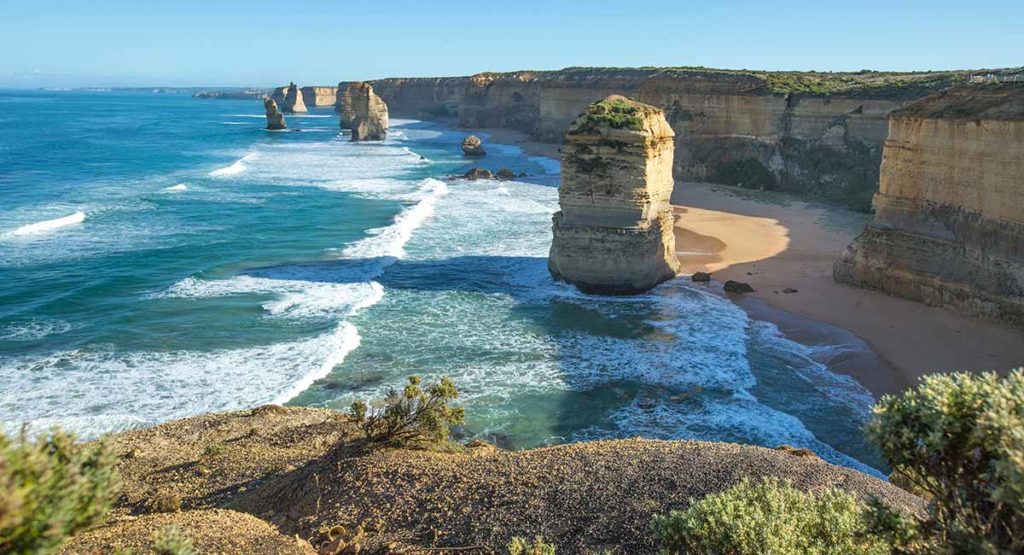
As it’s one of the most scenic drives in the world, the Great Ocean Road most certainly deserves its place on everyone’s top Australian landmarks list.
The road hugs the Victorian coastline and is a stunning drive past coastal villages, beaches, waterfalls and rainforests.
The drive’s highlight is the 12 Apostles, limestone monuments that jut out from the Southern Ocean.
These rock formations are 15 to 20 million years old.
Top tour: Great Ocean Road Reverse Itinerary Boutique Tour.

The UNESCO World Heritage-listed Blue Mountains is one of the natural wonders in Australia, with 1.03 million ha of amazing sandstone plateaux, plunging gorges and temperate eucalypt forest.
It’s not surprising this breathtakingly beautiful area attracts droves of day-trippers from Sydney.
The rugged 50-million-year-old range is home to one of the most famous Australian landmarks, the Three Sisters.
Top tour: All Inclusive Small-Group Blue Mountains Day Trip from Sydney with Scenic World.
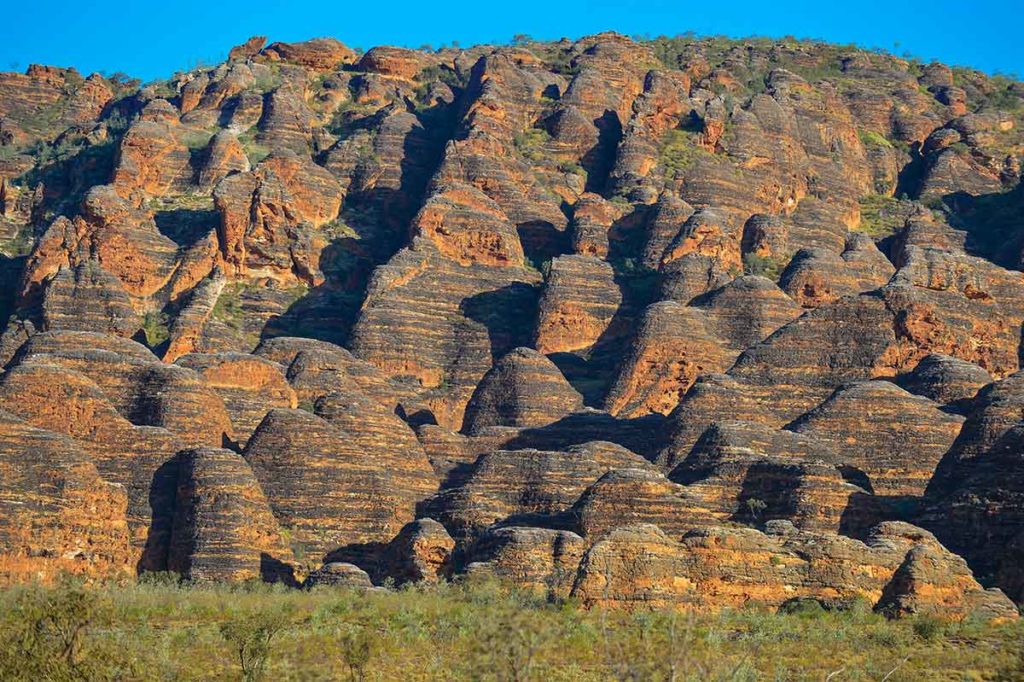
From the sky, the Bungle Bungle Range is a truly unique and eye-catching Australian landmark, with distinctive “beehive” formations considered the most outstanding example of cone karst in sandstone anywhere in the world.
The “beehives” are striking orange and black striped karst sandstone domes resembling giant beehives from the sky.
They form a jaw-dropping landscape of sculptured rocks that rise 250 metres (820 feet) above savanna grasslands.
Although its Aboriginal custodians have revered the Bungle Bungles for over 40,000 years, it was only known to the rest of the world in 1983.
It’s fitting that one of Australia’s landmarks represents the pioneering spirit of the Outback.
Burke and Wills were explorers who led a Royal Society of Victoria expedition to cross Australia from Melbourne to the Gulf of Carpentaria in 1860.
The Burke and Wills Dig Tree remains as Burke and Wills would have seen it in the 19th century beside Cooper Creek.
The Burke and Wills Dig Tree is a Coolibah (Eucalyptus microtha) tree managed by Nappa Merrie Station for the Royal Historical Society of Queensland.
Although there are a few pink lakes spread about the country, including pink lakes in Victoria’s Murray-Sunset National Park, the most well-known is Lake Hillier in Western Australia.
Lake Hillier is on Middle Island, the largest island on the Recherche Archipelago.
Although the vibrant pink colour may not look natural, it’s caused by algae in the water.
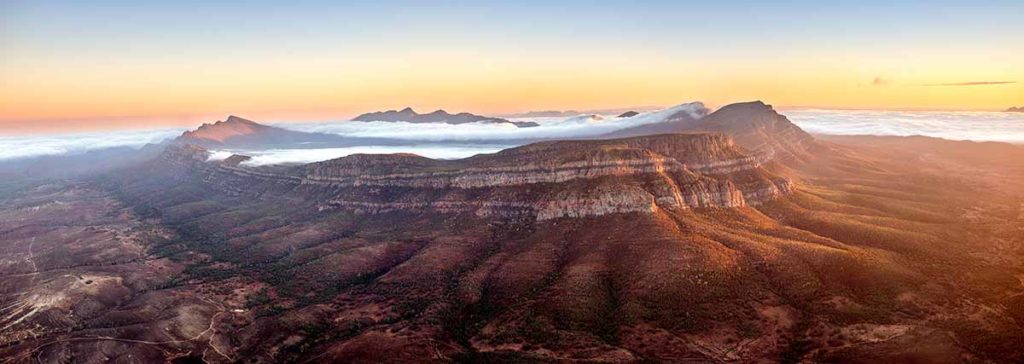
One of Australia’s natural landmarks is 429km to the north of Adelaide in South Australia .
Wilpena Pound is enormous: the 8000-ha natural amphitheatre in the Flinders Ranges is eight times the size of Uluru.
According to the Yura Muda Aboriginal people, Wilpena Pound was formed by the bodies of two giant serpents that could not move after eating the people who had gathered at that spot for a ceremony.
It’s a popular destination for bushwalking, with several walks of varying difficulty.
A hike to St Mary’s Peak, the highest peak (almost 1200 metres) offers the most rewarding views of Wilpena Pound.
Manmade Landmarks in Australia – Big Things
Several towns around Australia have giant sculptures representing each town’s main industry. Originally built to attract people on road trips, these big things are manmade landmarks in Australia entrenched in their local landscapes.
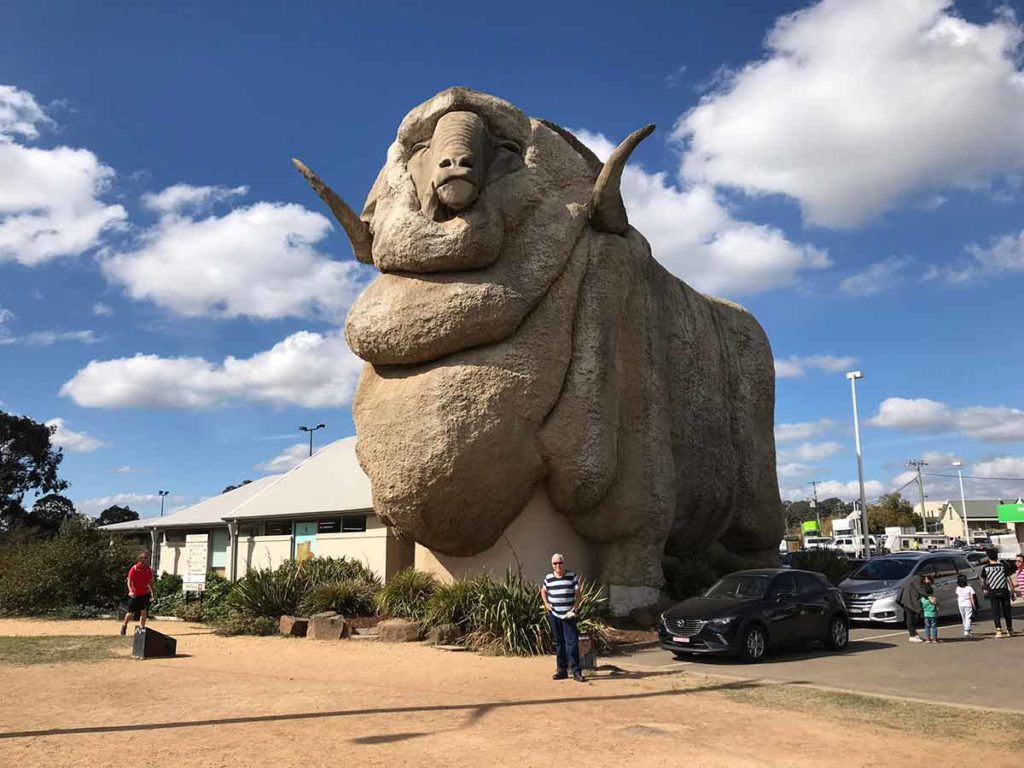
This big Merino sheep is an Australian landmark on the Hume Highway in Goulburn worthy of a selfie.
It’s an icon of Australia’s wool industry and a reminder that the region was a major centre for wool.
As Goulburn is a hub for the wool industry, it’s worth stopping to look at the Australian Wool Innovations exhibition that provides a rundown of the last 200 years of history of the Australian wool industry.
Inside the Big Merino is an Information Centre with cafes and public toilets available too.
Set in the grounds of a banana plantation, the Big Banana is a landmark in Australia in sunny Coffs Harbour on the New South Wales coast.
The 13m attraction designed in the shape of a banana was built in 1964 and is an eye-catching thing you can’t miss as you drive through Coffs Harbour.
It’s a fun place to stop to find out all you need to know about bananas and has a downhill toboggan ride, ice skating rink and water park too.
Visiting the Big Pineapple used to be a popular Sunshine Coast landmark for families to visit. Located in Nambour, which was once a hub for the region’s pineapple farms.
The Big Pineapple Train chugs through the rainforest and Wildlife HQ is home to 200 species of animals, including a sun bear.
A TreeTop Challenge course is being constructed with ropes and zip lines.
Standing 9m high, The Big Prawn is another mammoth manmade landmark in Australia.
The coastal town of Ballina has some of the freshest prawns in the state and is a popular place to go fishing and prawning.
It’s fitting that Tamworth, the home of country music, is home to another iconic Australian landmark, the Big Golden Guitar.
The Big Golden Guitar has been standing by the side of the New England Highway since 1988 and was designed to resemble Australia’s Annual Country Music Awards golden guitar.
Tamworth’s country music festival is a major event that attracts country music lovers from around the world.
- 20 USA Landmarks
- 23 Canada Landmarks
- 22 Ohio Landmarks
- 21 Arizona Landmarks
- 21 Minnesota Landmarks
- 21 Oregon Landmarks
- 21 Illinois Landmarks
- 21 Colorado Landmarks
- 21 Georgia Landmarks
- 21 Michigan Landmarks
- 23 Los Angeles Landmarks
- 21 Washington Landmarks
- 21 Maryland Landmarks
- 20 Manitoba Landmarks
- 20 Kansas Landmarks
- 21 New Mexico Landmarks
- 20 Idaho Landmarks
- 20 Montana Landmarks
- 20 Oklahoma Landmarks
- 21 Wisconsin Landmarks
- 20 Tennessee Landmarks
- 21 Iowa Landmarks
- 20 Alaska Landmarks
- 20 Miami Landmarks
- 21 West Virginia Landmarks
- 21 Kentucky Landmarks
- 20 Louisiana Landmarks
- 21 Arkansas Landmarks
- 20 Cincinnati Landmarks
- 20 San Antonio Landmarks
- 25 Indiana Landmarks
- 21 New York Landmarks
- 20 Texas Landmarks
- 21 Boston Landmarks
- 20 Florida Landmarks
- 20 Hawaii Landmarks
- 5 South Dakota Landmarks
- 21 Pennsylvania Landmarks
- 23 New Jersey Landmarks
- 21 Virginia Landmarks
- 21 North Carolina Landmarks
- 21 Utah Landmarks
- 21 Nevada Landmarks
- 20 Massachusetts Landmarks
- 20 Washington DC Landmarks
- 20 Vermont Landmarks
- 20 Nebraska Landmarks
- 20 North Dakota Landmarks
- 21 Missouri Landmarks
- 20 Rhode Island Landmarks
- 21 Maine Landmarks
- 21 Connecticut Landmarks
- 20 San Diego Landmarks
- 20 Landmarks In South Carolina
- 20 Mississippi Landmarks
- 20 Las Vegas Landmarks
- 20 Dallas Landmarks
- 20 Houston Landmarks
- 20 Seattle Landmarks
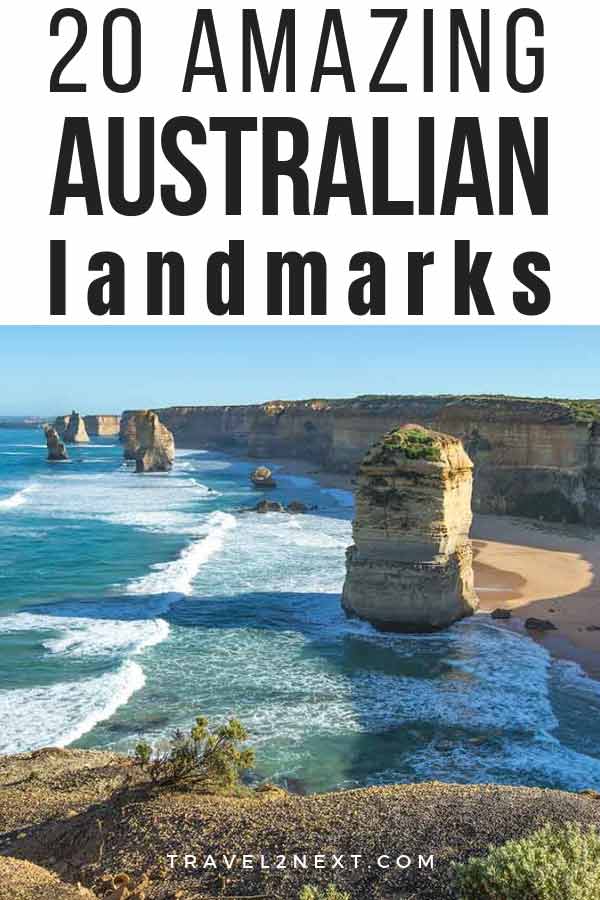
Plan Your Trip

Rent A Car – Find the best car rental rates at Discover Cars . They compare car hire companies to provide you with the best deal right now.

Find A Hotel – If you’re curious about this article and are looking for somewhere to stay, take a look at these amazing hotels .
16 Exciting Things To Do In Melbourne At Night
10 incredible landmarks in tasmania, everything you need to know about pink lakes (wa), 20 things to do in rockhampton, 20 things to do in hamilton island.

Tourism in Australia
Disclaimer: Some posts on Tourism Teacher may contain affiliate links. If you appreciate this content, you can show your support by making a purchase through these links or by buying me a coffee . Thank you for your support!
Tourism in Australia is big business! But why is tourism here so important and why does it matter? Read on to find out…
Overview of the Geography of Australia
Statistics about tourism in australia, tourist attractions in australia, most popular types of tourism in australia, the impacts of tourism in australia, faqs about tourism in australia, to conclude: tourism in australia.
Australia, the world’s smallest continent and the largest island, is located in the Southern Hemisphere. It is situated between the Pacific Ocean to the east and the Indian Ocean to the west. Australia is surrounded by the Timor Sea, Arafura Sea, and Coral Sea in the north.
The continent covers an area of approximately 7.7 million square kilometres (2.9 million square miles). It is known for its vast and diverse landscapes, ranging from deserts and grasslands to tropical rainforests and mountain ranges. In the central and western parts of Australia, you will find the Great Victoria Desert and the Gibson Desert, which are arid and sparsely populated regions. The Simpson Desert, located in the northeast, is known for its sand dunes.
Moving towards the coast, the interior is dominated by the Great Dividing Range, a mountain range that stretches parallel to the eastern coastline. The range separates the eastern coastal plains from the inland desert regions. The highest peak on the Australian mainland is Mount Kosciusko, located in the Snowy Mountains of New South Wales.Australia’s eastern coastline is characterised by beautiful sandy beaches, including the iconic Bondi Beach in Sydney. The Great Barrier Reef, the world’s largest coral reef system, runs along the northeastern coast and is a UNESCO World Heritage site. In the far north, the tropical region of Australia, known as the Top End, is home to the Kakadu National Park, which showcases stunning wetlands, waterfalls, and unique wildlife. Moving west, you’ll encounter the vast and sparsely populated Outback, which covers a significant portion of the continent. This region is known for its red earth, rugged landscapes, and iconic landmarks such as Uluru (Ayers Rock) and Kata Tjuta (the Olgas) .In the southwest, you’ll find the fertile regions of Western Australia, including the famous Margaret River wine region. The state is also home to the ancient and unique landscapes of the Pinnacles Desert.
Australia has a diverse range of ecosystems and is known for its unique wildlife, including kangaroos, koalas, platypuses, and a wide variety of bird species.
Overall, Australia’s geography is characterised by a mix of stunning coastal areas, vast deserts, mountain ranges, and diverse ecosystems, making it a captivating destination for nature lovers and adventure seekers.
The tourism industry of Australia has emerged as a significant economic sector, contributing to the country’s economic growth, employment opportunities, and cultural exchange. Renowned for its diverse landscapes, vibrant cities, and unique wildlife, Australia attracts millions of international visitors each year. This introduction aims to provide an academic overview of the tourism industry in Australia, highlighting its key features, economic impact, and sustainability considerations.

Australia’s tourism sector encompasses a wide range of activities, including leisure and business travel, nature-based tourism, cultural tourism, adventure tourism, and ecotourism. The country’s diverse geography plays a pivotal role in attracting tourists, offering a plethora of natural wonders such as the Great Barrier Reef, the Australian Outback, pristine beaches, ancient rainforests, and iconic landmarks like the Sydney Opera House and Uluru. Additionally, Australia’s vibrant cities, including Sydney, Melbourne, Brisbane, and Perth, with their rich cultural heritage, modern infrastructure, and cosmopolitan lifestyle, are popular destinations for international travelers.
The economic significance of tourism in Australia cannot be overstated. The industry generates substantial revenue, provides direct and indirect employment opportunities, and supports various sectors such as accommodation, transportation, food and beverage, retail, and entertainment. According to Tourism Research Australia, in the year 2020, prior to the COVID-19 pandemic, tourism contributed AUD 60.8 billion to the national GDP, accounting for 2.8% of the total. It employed over 666,000 people, representing 5.3% of the country’s total workforce. These figures underline the sector’s importance as a driver of economic growth and job creation.
To sustain and enhance the tourism industry, Australia has adopted a multifaceted approach that encompasses both economic and environmental considerations. The government, along with industry stakeholders, has implemented policies and strategies to promote sustainable tourism practices, protect natural and cultural assets, and ensure visitor satisfaction. Initiatives such as ecotourism certification programs, national parks management plans, and responsible tourism campaigns aim to balance economic benefits with the conservation of the country’s unique ecosystems and cultural heritage.
However, it is important to acknowledge that the tourism industry in Australia faces certain challenges. These include the impact of climate change on the natural environment, the need for infrastructure development to cater to growing tourist numbers, and the preservation of Indigenous cultural values and traditional land rights. Sustainable tourism practices, community engagement, and respectful collaboration with Indigenous communities are vital to address these challenges and foster a responsible and inclusive tourism sector.
In conclusion, the tourism industry in Australia holds significant economic importance, contributing to the nation’s GDP and employment opportunities. With its diverse landscapes, iconic landmarks, and vibrant cities, Australia offers a wide range of attractions for international visitors. However, a sustainable and responsible approach is crucial to ensure the long-term preservation of natural and cultural assets, while providing authentic and enjoyable experiences for tourists. By balancing economic growth with environmental protection and cultural sensitivity, Australia can continue to thrive as a world-class tourism destination.
Now lets take a look at some statistics that emphasise the scale of tourism in Australia:
1. In 2019, Australia welcomed approximately 9.4 million international visitors, marking a 3.6% increase compared to the previous year.
2. Tourism expenditure in Australia reached AUD 65.6 billion in 2019, with an average spend per trip of AUD 4,254 by international visitors.
3. The domestic tourism market in Australia is also substantial, with Australians taking approximately 114.6 million overnight trips within the country in 2019.
4. The Great Barrier Reef, a UNESCO World Heritage site, attracted 2.4 million visitors in 2019, contributing significantly to the tourism industry.
5. China remains the largest source of international visitors to Australia, accounting for approximately 1.4 million arrivals in 2019, followed by New Zealand (1.3 million) and the United States (764,000).
6. Tourism generated approximately 646,000 direct jobs in Australia in 2019, representing 5.2% of the total employment in the country.
7. The Australian tourism industry experienced a significant decline in 2020 due to the COVID-19 pandemic. International visitor arrivals dropped by 78.9% compared to 2019, with only 2.2 million arrivals recorded.
8. Similarly, domestic tourism was impacted by travel restrictions and lockdown measures in 2020, resulting in a 36% decline in overnight trips compared to the previous year.
9. The tourism industry in Australia is highly resilient and has shown signs of recovery in 2021. In the first quarter of the year, international visitor arrivals increased by 5.6% compared to the same period in 2020.
10. Nature-based tourism is a significant draw for visitors to Australia. In 2019, around 5.2 million international tourists engaged in activities such as wildlife watching, hiking, and visiting national parks.
Australia, as a diverse and captivating destination, offers a plethora of popular tourist destinations that showcase the country’s unique landscapes, cultural heritage, and natural wonders. This section will provide an overview of some of the most popular tourist destinations in Australia, highlighting their key features, attractions, and significance.
1. Sydney: Sydney, the largest city in Australia, is a prominent global tourist destination. The city is renowned for its iconic landmarks, including the Sydney Opera House and Sydney Harbour Bridge, which symbolise Australia’s architectural and engineering prowess. The city also offers pristine beaches such as Bondi and Manly, vibrant neighbourhoods like Darling Harbour and The Rocks, and a thriving arts and cultural scene.
2. Great Barrier Reef: The Great Barrier Reef, a UNESCO World Heritage site, is one of Australia’s most sought-after natural attractions. Located off the northeastern coast, it is the world’s largest coral reef system, stretching over 2,300 kilometres (1,429 miles). This stunning ecosystem supports an incredible array of marine life, making it a mecca for snorkelling, scuba diving, and boat tours.
3. Uluru-Kata Tjuta National Park: Located in the heart of Australia’s Red Centre, Uluru-Kata Tjuta National Park holds immense cultural and spiritual significance for the Indigenous Anangu people. Uluru, also known as Ayers Rock, is a massive sandstone monolith that stands as a mesmerising landmark. Kata Tjuta, a group of ancient domed rock formations, adds to the park’s awe-inspiring scenery and cultural value.
4. Melbourne: As Australia’s cultural capital, Melbourne entices visitors with its vibrant arts scene, culinary delights, and architectural marvels. The city boasts a blend of Victorian-era architecture, modern skyscrapers, and vast green spaces. Highlights include Federation Square, the Royal Botanic Gardens, vibrant street art in the laneways, and a thriving coffee culture.
5. Great Ocean Road: The Great Ocean Road, stretching along the southeastern coast of Victoria, offers breathtaking coastal scenery and iconic landmarks. The Twelve Apostles, a collection of limestone stacks rising from the Southern Ocean, is a major drawcard. Visitors can also explore stunning beaches, lush rainforests, and charming coastal towns while driving along this scenic route.
6. Cairns and the Tropical North: Cairns serves as the gateway to Australia’s Tropical North, which encompasses the Daintree Rainforest, the Atherton Tablelands, and the captivating beaches of the Coral Sea. Visitors flock to Cairns for its access to the Great Barrier Reef, as well as for adventure activities like white-water rafting, hot air ballooning, and exploring the ancient rainforests.
7. Tasmania: Known for its pristine wilderness, Tasmania is an island state that offers a diverse range of attractions. From the breathtaking landscapes of Cradle Mountain-Lake St Clair National Park to the historic sites of Port Arthur, Tasmania is a haven for nature enthusiasts, hikers, and those seeking a tranquil escape. The island also boasts unique wildlife and world-class gourmet experiences.

8. Perth: Situated on Australia’s western coast, Perth is a vibrant and cosmopolitan city known for its stunning beaches, expansive parklands, and a burgeoning food and wine scene. Kings Park and Botanic Garden, located in the heart of the city, offers sweeping views of the Swan River and showcases Western Australia’s native flora.
9. The Whitsundays: Located in Queensland, the Whitsunday Islands are a picturesque archipelago renowned for their pristine white-sand beaches, crystal-clear waters, and vibrant marine life. Visitors can explore the iconic Whitehaven Beach, snorkel or dive in the Great Barrier Reef, and indulge in luxury resorts and sailing experiences.
Australia, as a diverse and geographically rich country, offers a wide array of popular types of tourism that cater to the varied interests of visitors. This section will provide an academic overview of some of the most sought-after types of tourism in Australia, highlighting their characteristics, attractions, and significance.
1. Nature-Based Tourism in Australia: Australia’s remarkable natural landscapes and biodiversity make nature-based tourism highly popular. The country is home to iconic sites such as the Great Barrier Reef, the Daintree Rainforest, and the vast outback regions. Visitors engage in activities such as wildlife watching, birdwatching, hiking, camping, and exploring national parks, immersing themselves in the country’s pristine environments.
2. Coastal and Beach Tourism in Australia: With an extensive coastline, Australia offers a haven for coastal and beach tourism. From the golden shores of Bondi Beach in Sydney to the remote beauty of Whitehaven Beach in the Whitsundays, visitors flock to Australia’s stunning beaches to relax, swim, surf, and indulge in water-based activities such as snorkeling, diving, and sailing.
3. Cultural and Indigenous Tourism in Australia: Australia’s rich cultural heritage, including its Indigenous history and diverse multicultural society, attracts visitors interested in cultural tourism. Indigenous tourism experiences allow visitors to learn about the traditions, art, spirituality, and connection to the land of Australia’s First Nations people. Additionally, urban centers like Sydney and Melbourne offer vibrant arts scenes, museums, galleries, and cultural festivals that showcase Australia’s multiculturalism.

4. Adventure Tourism in Australia: Australia’s varied landscapes provide ample opportunities for adventure tourism. Activities such as skydiving, bungee jumping, white-water rafting, rock climbing, and off-road 4WD expeditions appeal to adrenaline seekers. Regions like Cairns, the Blue Mountains, and the Kimberley offer thrilling adventure experiences against the backdrop of stunning natural beauty.
5. Food and Wine Tourism in Australia: Australia’s diverse culinary scene and renowned wine regions attract food and wine enthusiasts. From the Barossa Valley in South Australia to the Margaret River region in Western Australia, visitors can embark on wine tours, visit cellar doors, sample local produce, and indulge in world-class dining experiences that showcase Australia’s gastronomic delights.
6. Urban Tourism in Australia: Australia’s vibrant cities, such as Sydney, Melbourne, Brisbane, and Perth, draw visitors seeking urban experiences. These cities offer a blend of cosmopolitan lifestyle, architectural marvels, cultural institutions, shopping precincts, and a range of entertainment options, including theater, concerts, and sporting events.
7. Ecotourism in Australia: With a strong emphasis on sustainability and environmental conservation, ecotourism is a growing trend in Australia. Visitors engage in low-impact activities that contribute to the preservation of natural habitats, including wildlife sanctuaries, eco-lodges, and guided tours focused on environmental education and awareness.
8. Outback and Rural Tourism in Australia: Australia’s vast and remote Outback regions attract visitors seeking an authentic Australian experience. Exploring the rugged landscapes, visiting historic mining towns, interacting with local communities, and participating in outback activities like camel riding or stargazing offer a unique perspective on Australia’s vast interior.
9. Sports Tourism in Australia: Australia’s sporting culture and world-class sporting events make sports tourism a popular choice. Events such as the Melbourne Cup, Australian Open tennis tournament, and cricket matches at the iconic Melbourne Cricket Ground draw sports enthusiasts from around the globe.
10. Wellness and Health Tourism in Australia: Australia’s pristine natural environments, spa retreats, and wellness centers attract visitors seeking relaxation and rejuvenation. From yoga retreats in Byron Bay to wellness-focused resorts in the tropics, wellness and health tourism offer opportunities for self-care, meditation, and holistic experiences.

Tourism plays a significant role in Australia’s economy, contributing to social, environmental, and economic changes. Lets take a look at what the impacts of tourism in Australia look like:
Social Impacts
Positive Social Impacts
Tourism in Australia fosters cultural exchange and promotes social integration by bringing together people from diverse backgrounds. It offers opportunities for residents to interact with tourists, enabling the sharing of traditions, customs, and knowledge. Additionally, tourism contributes to the preservation and revitalisation of indigenous cultures, showcasing unique art, music, and storytelling.
Negative Social Impacts
The rapid growth of tourism can lead to overcrowding and strains on infrastructure, resulting in diminished quality of life for local communities. Additionally, cultural commodification and commercialisation can dilute traditional practices and erode local identities. Tourism in Australia can also create socio-economic disparities, as local businesses may struggle to compete with larger corporations catering to tourists.
Environmental Impacts
Positive Environmental Impacts
Tourism in Australia can contribute to environmental conservation and sustainability through the creation of national parks, protected areas, and wildlife sanctuaries. These initiatives promote biodiversity and preserve fragile ecosystems. Moreover, sustainable tourism practices, such as responsible waste management and eco-friendly infrastructure, reduce the carbon footprint and encourage environmental consciousness among tourists and local communities.
Negative Environmental Impacts
The influx of tourists can exert considerable pressure on natural resources, leading to habitat degradation, deforestation, and pollution. Activities such as unregulated water consumption, land development, and improper waste disposal can disrupt delicate ecosystems. Additionally, increased air travel associated with tourism contributes to greenhouse gas emissions, further exacerbating climate change.
Economic Impacts
Positive Economic Impacts
Tourism is a vital pillar of Australia’s economy, contributing to employment generation, regional development, and foreign exchange earnings. The sector provides jobs across various sectors, including accommodation, food services, transportation, and retail, thus improving income distribution. Furthermore, tourism stimulates investment in infrastructure development, enhancing the overall economic growth of the country.
Negative Economic Impacts
Relying heavily on tourism in Australia can render the economy vulnerable to external shocks and fluctuations in demand. Seasonal variations and global crises can disrupt tourism flows, leading to job losses and economic instability. Over-dependence on tourism in Australia may also create an imbalance in the economy, as other sectors receive inadequate attention, hindering diversification and resilience.
Tourism in Australia has profound social, environmental, and economic impacts, encompassing both positive and negative dimensions. While tourism contributes significantly to the economy and cultural exchange, it can also strain local infrastructure, degrade the environment, and create socio-economic inequalities. By embracing sustainable practices, promoting community involvement, and ensuring responsible development, Australia can maximise the positive impacts of tourism while mitigating its negative effects. Policymakers, industry stakeholders, and communities must collaborate to achieve a harmonious balance between tourism development and the well-being of local communities and the environment.
Now that we know a bit more about tourism in Australia, lets answer some of the most common questions on this topic:
1. Q: What are the popular tourist destinations in Australia?
A: Australia boasts several popular tourist destinations, including Sydney, Melbourne, Great Barrier Reef, Uluru (Ayers Rock), the Whitsunday Islands, the Great Ocean Road, and the Daintree Rainforest.
2. Q: Is a visa required for traveling to Australia?
A: Yes, most visitors to Australia require a visa. The type of visa will depend on the purpose and duration of your visit. It is advisable to check the official Australian government website for the latest visa requirements and application processes.
3. Q: What is the best time of year to visit Australia?
A: Australia’s climate varies across its regions. Generally, the summer months (December to February) are popular for beach activities, while autumn (March to May) and spring (September to November) offer mild temperatures and colourful landscapes. Winter (June to August) can be a good time for visiting northern regions and engaging in winter sports in the southern parts.

4. Q: Are there any safety concerns regarding wildlife in Australia?
A: Australia is known for its unique wildlife, including animals like kangaroos, koalas, and snakes. While encounters with wildlife can be exciting, it is important to maintain a safe distance and follow any guidelines provided by local authorities to ensure your safety and the well-being of the animals.
5. Q: How can I explore the Great Barrier Reef?
A: The Great Barrier Reef can be explored through various means, such as snorkelling, scuba diving, or taking a boat or helicopter tour. Several coastal cities and towns in Queensland offer access points to the reef, including Cairns, Port Douglas, and the Whitsunday Islands.
6. Q: Are there any cultural experiences to explore in Australia?
A: Australia is rich in cultural experiences. Visitors can engage with indigenous cultures, attend cultural festivals, explore Aboriginal art galleries, and learn about the history and traditions of the First Nations peoples. Additionally, Australian cities offer diverse culinary experiences, art exhibitions, and theatre performances.
7. Q: Can I drive around Australia as a tourist?
A: Yes, tourists can drive around Australia, provided they hold a valid driver’s license and adhere to local traffic rules. Australia has an extensive road network, and long-distance road trips, such as the Great Ocean Road or the East Coast drive, are popular among tourists. It is essential to plan your route, be aware of the distances involved, and consider road safety precautions.
8. Q: What are some outdoor activities to enjoy in Australia?
A: Australia offers a wide range of outdoor activities, such as hiking in national parks, surfing, snorkelling, sailing, whale watching, and exploring the Outback. Adventure enthusiasts can also indulge in activities like skydiving, bungee jumping, and hot air balloon rides.
9. Q: Are there any restrictions on bringing food or souvenirs into Australia?
A: Australia has strict biosecurity regulations to protect its unique ecosystem. Certain food items, plants, and animal products may be prohibited or require permits to bring into the country. It is crucial to familiarise yourself with the customs and quarantine regulations to avoid any issues at the border.
10. Q: How can I travel between different cities in Australia?
A: Australia has an extensive transportation system that includes domestic flights, trains, buses, and ferries. Domestic flights are a popular and efficient way to travel between major cities, while trains and buses offer scenic options for exploring the countryside. Ferries are commonly used for reaching islands and coastal destinations.
As you can see, tourism Australia is big business! However, it is vital that tourism here is managed effectively to ensure that sustainable tourism principles are adopted.
If you enjoyed this article about tourism in Australia, I am sure you will love these too:
- 55 must-see Australia landmarks + fascinating facts!
- How do game conservation laws affect hunters?
- Tourism in Uluru
- Tourism in Darwin
- Tourism in Papua New Guinea
Liked this article? Click to share!
Travel, Tourism & Hospitality
Travel and tourism industry in Australia - statistics & facts
Inbound tourism: the road to recovery, outbound tourism: top destinations and interests, domestic tourism: exploring their own backyard, key insights.
Detailed statistics
Number of international visitors to Australia FY 2023, by country of residence
Number of outbound tourists from Australia FY 2023, by destination
Direct tourism GDP growth rate Australia FY 2006-2023
Editor’s Picks Current statistics on this topic
Current statistics on this topic.
Number of visitors at Sydney Airport Australia Feb 2019-Dec 2023, by passenger type
Breakdown of hotels Sydney Australia 2023, by category
Number of domestic visitors Sydney, Australia FY 2014-2023, by type of trip
Related topics
Tourism in anz.
- Domestic tourism in Australia
- Travel accommodation in Australia
- Camping and caravanning in Australia
- Travel and tourism in New Zealand
- Hotel industry recovery post COVID-19 in New Zealand
- Tourism worldwide
- Sustainable tourism worldwide
- Luxury travel and tourism worldwide
- Hotel industry worldwide
- Cruise industry worldwide
Recommended statistics
- Premium Statistic Share of the GDP of the tourism sector in Australia 2013-2028
- Basic Statistic Direct tourism GDP Australia FY 2006-2023
- Basic Statistic Direct tourism GDP growth rate Australia FY 2006-2023
- Basic Statistic Tourism contribution Australia FY 2023, by industry
- Premium Statistic Tourism contribution Australia FY 2023, by state
- Premium Statistic Number of tourism businesses Australia 2023, by type
- Premium Statistic Tourism sector employment Australia FY 2023, by state and type
Share of the GDP of the tourism sector in Australia 2013-2028
Share of the GDP of the tourism sector in Australia from 2013 to 2028
Direct tourism GDP Australia FY 2006-2023
Direct tourism gross domestic product (GDP) in Australia from financial year 2006 to 2023 (in billion Australian dollars)
Growth of direct tourism gross domestic product (GDP) in Australia from financial year 2006 to 2023
Tourism contribution Australia FY 2023, by industry
Gross value added (GVA) of tourism in Australia in financial year 2023, by tourism related industry (in billion Australian dollars)
Tourism contribution Australia FY 2023, by state
Gross value added (GVA) of tourism in Australia in financial year 2023, by state (in billion Australian dollars)
Number of tourism businesses Australia 2023, by type
Number of businesses in the tourism sector in Australia as of June 2023, by type (in 1,000s)
Tourism sector employment Australia FY 2023, by state and type
Number of employees in the tourism sector in Australia in financial year 2023, by state and type (in 1,000s)
Inbound tourism
- Premium Statistic Number of international visitors to Australia FY 2010-2023
- Premium Statistic Number of international visitors to Australia FY 2023, by country of residence
- Premium Statistic Number of international visitors to Australia FY 2023, by age group
- Premium Statistic Number of international visitors to Australia FY 2023, by state visited
- Premium Statistic Number of international visitors to Australia FY 2023, by purpose of visit
- Premium Statistic International visitor trip expenditure Australia FY 2010-2023
- Premium Statistic International visitor trip expenditure Australia FY 2023, by country of residence
Number of international visitors to Australia FY 2010-2023
Number of international visitor arrivals to Australia from financial year 2010 to 2023 (in millions)
Number of international visitor arrivals to Australia in financial year 2023, by country of residence (in 1,000s)
Number of international visitors to Australia FY 2023, by age group
Number of international visitor arrivals to Australia in financial year 2023, by age group (in 1,000s)
Number of international visitors to Australia FY 2023, by state visited
Number of international visitor arrivals to Australia in financial year 2023, by state visited (in 1,000s)
Number of international visitors to Australia FY 2023, by purpose of visit
Number of international visitor arrivals to Australia in financial year 2023, by purpose of visit (in 1,000s)
International visitor trip expenditure Australia FY 2010-2023
Total trip expenditure of international visitors in Australia from financial year 2010 to 2023 (in billion Australian dollars)
International visitor trip expenditure Australia FY 2023, by country of residence
Trip expenditure of international visitors to Australia in financial year 2023, by country of residence (in million Australian dollars)
Outbound tourism
- Premium Statistic Number of outbound tourists from Australia FY 2006-2023
- Premium Statistic Number of outbound tourists from Australia 2017-2024, by state of residence
- Premium Statistic Number of outbound tourists from Australia FY 2023, by destination
- Premium Statistic Outbound tourist trip expenditure FY 2019-2023
- Premium Statistic Outbound tourist trip expenditure Australia FY 2023, by destination
- Premium Statistic Leading tourism experience interests among outbound travelers Australia 2022
- Premium Statistic Leading sport tourism experience interests of outbound travelers Australia 2022
Number of outbound tourists from Australia FY 2006-2023
Number of overseas departures of Australian residents from Australia from financial year 2006 to 2023 (in 1,000s)
Number of outbound tourists from Australia 2017-2024, by state of residence
Number of outbound tourists from Australia from January 2017 to January 2024, by state of residence
Number of outbound tourists from Australia in financial year 2023, by destination (in thousands)
Outbound tourist trip expenditure FY 2019-2023
Trip expenditure of Australian outbound travelers from financial year 2019 to 2023 (in billion Australian dollars)
Outbound tourist trip expenditure Australia FY 2023, by destination
Trip expenditure of Australian outbound travelers in financial year 2023, by destination (in million Australian dollars)
Leading tourism experience interests among outbound travelers Australia 2022
Leading tourism experience interests among outbound travelers from Australia in 2022
Leading sport tourism experience interests of outbound travelers Australia 2022
Leading sport tourism experience interests among outbound travelers from Australia in 2022
Domestic tourism
- Premium Statistic Number of domestic overnight visitors Australia 2014-2023
- Premium Statistic Number of domestic overnight visitors Australia 2023, by state visited
- Premium Statistic Number of domestic overnight visitors Australia 2023, by purpose of visit
- Premium Statistic Domestic overnight tourist trip expenditure Australia FY 2014-2023
- Premium Statistic Domestic overnight tourist trip expenditure Australia 2023, by state or territory
- Premium Statistic Number of domestic day visitors Australia 2023, by state visited
- Premium Statistic Number of domestic day visitors Australia 2023, by purpose of visit
Number of domestic overnight visitors Australia 2014-2023
Number of domestic overnight visitors in Australia from 2014 to 2023 (in millions)
Number of domestic overnight visitors Australia 2023, by state visited
Number of domestic overnight visitors in Australia in 2023, by state visited (in millions)
Number of domestic overnight visitors Australia 2023, by purpose of visit
Number of domestic overnight visitors in Australia in 2023, by purpose of visit (in millions)
Domestic overnight tourist trip expenditure Australia FY 2014-2023
Trip expenditure of domestic overnight visitors in Australia from financial year 2014 to 2023 (in billion Australian dollars)
Domestic overnight tourist trip expenditure Australia 2023, by state or territory
Trip expenditure of domestic overnight visitors in Australia in 2023, by state visited (in billion Australian dollars)
Number of domestic day visitors Australia 2023, by state visited
Number of domestic day visitors in Australia in 2023, by state visited (in millions)
Number of domestic day visitors Australia 2023, by purpose of visit
Number of domestic day visitors in Australia in 2023, by purpose of visit (in millions)
Further reports Get the best reports to understand your industry
Get the best reports to understand your industry.
Mon - Fri, 9am - 6pm (EST)
Mon - Fri, 9am - 5pm (SGT)
Mon - Fri, 10:00am - 6:00pm (JST)
Mon - Fri, 9:30am - 5pm (GMT)
- Español NEW
Tourism in Australia facts for kids
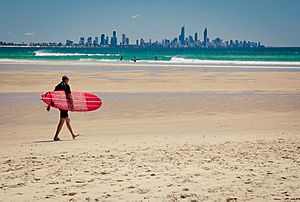
Tourism in Australia is an important part of the Australian economy , and comprises domestic and international visitors. Australia is the fortieth most visited country in the world according to the World Tourism Organization. In the financial year 2018/19, tourism was Australia's fourth-largest export and over the previous decade was growing faster than national GDP growth. At the time it represented 3.1% of Australia's GDP contributing A$60.8 billion to the national economy.
In the calendar year up to December 2019, there were 8.7 million international visitors in Australia. Tourism employed 666,000 people in Australia in 2018–19, 1 in 21 jobs across the workforce. About 48% of people employed in tourism were full-time and 54% female Tourism also contributed 8.2% of Australia's total export earnings in 2018–19.
Popular Australian destinations include the coastal cities of Sydney , Brisbane and Melbourne , as well as other high-profile destinations including regional Queensland , the Gold Coast and the Great Barrier Reef , the world's largest reef. Other popular locations include Uluru , the Australian outback and the Tasmanian wilderness . The unique Australian wildlife is also another significant point of interest in the country's tourism.
Organizations
Tourists by country, international tourists, backpackers, domestic tourism.
- Great Barrier Reef
- Sydney Opera House
Australia's icons
Despite the global economic challenges and natural disasters in 2010–2011, Australia's tourism growth was supported by increased consumption (up 4.4% over the last few years, largely due to an increase in the number of international visitors). On the back of a strong Australian dollar, 2010–11 also saw a record 7.4 million short-term resident departures from Australia, an increase of 9.9% from 2009–10. Consumption by domestic tourists grew at less than half the pace of international tourists in 2010–11 (up 2.1% compared to 4.4%).
The Australian Government released the 2020 Tourism Industry Potential on 15 November 2010, which estimated the Australian tourism industry to be worth up to $140 billion in overnight expenditure. This growth will largely be due to key emerging markets, including China, which is estimated to be the largest economic contributor to Australian tourism by 2020. The number of Chinese visitors has more than doubled from 2006 to 2012 reaching a peak of 626,400 in 2012 and surpassing for the first time the number of arrivals from the United Kingdom. In 2013, China was Australia's fastest growing tourist market. By 2017 China surpassed New Zealand as the top source of visitors to Australia, and in 2019 Chinese visitors reached a peak of over 1.4 million and had contributed about A$12 billion to the Australian economy. According to Tourism Australia Managing Director Andrew McEvoy, the Chinese are the highest spending visitors to the country.
Monthly short term visitor arrivals into Australia since 1976
Monthly long term visitor arrivals into Australia since 1976
All visitors to Australia, apart from New Zealanders, require an Australian visa to enter the country. For most countries, a full visa is required. Passport holders of all European Union countries as well as all Schengen Area countries and European microstates can apply online for an eVisitor authorisation. Citizens of some OECD and some East Asian countries can apply for the similar Electronic Travel Authority authorisation.
From the colonial days, the idea of travel has been more natural to Australians than to people long-established at one from their homes, was prone to continue their search for wealth or security for a while, or, having settled down, to return to the old countries to visit their kin and refresh old memories. The opening of new lands, the establishment of industries and towns, and the consequent dispersal of people over Australia created a habit of mobility and enterprise which encouraged Australians to face the hardships of early travel by coach, on horseback or by ship. Even so, the slow and uncomfortable modes of travel and the vast distances separating Australian towns tended to restrict travel to essential journeys for purposes of trade, to pursue an occupation or to settle. This changed somewhat with the advent of rail travel.
The initial emphasis in tourism for purposes of pleasure was strongest on travel to resorts near the main population centres. These included the Blue Mountains in New South Wales and the hill and coast resorts close to Melbourne and other major Victorian cities. The existing railway services radiating from those cities, together with the 'feeder' horse-drawn, and later motor, coach transport connecting with the railways, rendered the State Government railway tourist bureaux the main means for selling intrastate, and even some interstate, travel.
Travel for all purposes increased steadily after the Second World War . This period saw the establishment of the Australian National Travel Association with bureaux in the UK and USA. The organisation received government funding on top of industry contributions and promoted the country 'vigorously' via a poster campaign, and from 1934–1974 via Walkabout magazine. From August 1946, Walkabout also doubled as the official journal of the newly formed Australian Geographical Society (AGS), founded with a £5,000 grant from ANTA, its banner subscript reading 'Journal of the Australian Geographical Society. This role is now filled by Australian Geographic magazine. Later it became ‘Australia's Way of Life Magazine’ when supported by the Australian National Publicity Association and later the Australian Tourist Commission.
Tourism traffic continued to be mainly by rail, but also by sea, although the family motor era began in the 1930s to participate in the shorter intrastate traffic. A considerable fleet of passenger ships provided frequent and popular services linking most ports between Fremantle and Cairns . Other services linked Sydney and Melbourne with Tasmanian ports. The winter cruise of those days to Queensland ports could be regarded as the equivalent of today's drive or flight north for a winter holiday at the Gold Coast or a Barrier Reef Island, or today's shorter South Pacific cruises. The first cruises from Australia to New Zealand were organised in the summer of 1934–35, and Australians were travelling to Britain for as low as $78 in tourist class in the years immediately preceding the Second World War .
In the period following the Second World War the advent of new and improved methods of transportation, combined with rising standards of living and the energetic publicising of foreign destinations, developed international travel into a mass movement. New ocean liners shortened travelling time considerably, and travel by car and bus increased in many countries. Most of all, air travel became widely available, faster, safer, and cheaper. The beginning of the Jet Age in 1960, with larger aeroplanes carrying more than 100 passengers at speeds approximating 600 miles per hour, diminished the world by half in terms of time. Rising standards of living in the post-war period led to greater expenditure on tourism, thus making it more important to the national economy.
Australia has shared in this worldwide expansion of travel, particularly in respect of its domestic tourism. Because of the marked increase in incomes and private car ownership among large sections of the population, greater leisure time, three weeks of paid annual holidays (introduced first in New South Wales in 1958) and the introduction of long-service leave, thousands of Australians now travel by road into almost every part of the country. This has led to investment in the development of new and improved facilities, especially accommodation, of new resorts at dispersed points around Australia, and modifications in organisation and methods of tourist administration, development and promotion. These activities, in turn, have had an important influence on matters such as the improvement of highways and the opening up of national parks and foreshores.
A White Paper was produced analysing the tourist industry in Australia in 2003. A Tourism 2020 strategy was produced and implemented.
Prior to the COVID-19 and 5 major variants, domestic tourism was and continues to be a significant part of the tourism industry, representing 73% of the total direct tourism GDP and has taken on an even greater role. However, in 2021 during the pandemic, Australians travelled intrastate and also interstate when borders were open. From November 2021, borders for Australia were opened and fully vaccinated Australians were permitted to fly overseas without exemption, although the range of countries was added to Malaysia , Singapore , New Zealand and other countries in December with citizens from Japan and South Korea allowed to enter the country, from 1 December 2021. Following the significant consultation on the replacement Tourism 2030 strategy, its launch was interrupted by COVID-19 leading to the Government Commissioning an Expert Panel led by the former Tourism Minister Martin Ferguson to provide recommendations.
Eventually, the updated Tourism 2030 document titled THRIVE (THe Re-Imagined Visitor Economy) 2030 strategy was finalised and published in March 2022. The document was updated to reflect the new Government's initiatives and policy priorities as well as industry actions and State and Territory support statements and launched on 17 March 2023.
The Australian Trade and Investment Commission has tourism policy and programs responsibility in the Australian Government with Tourism Australia responsible for marketing Australia. State and territory government jurisdictions have tourism policy departments and/or tourism marketing authorities along with regional tourism organisations. The industry has a wide range of stakeholder bodies including the Australian Tourism Industry Council (ATIC), which includes promotion of the Australian Tourism Accreditation Program , the Australian Tourism Awards and Star Ratings Australia ; the Australian Chamber of Commerce and Industry Tourism Chamber , and the Australian Tourism Export Council (ATEC).
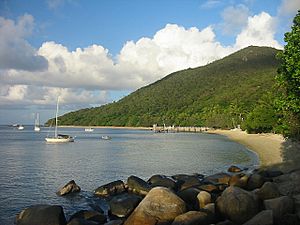
Australia's international tourism campaigns have focused on Australia's laid back style, such as the 1980s advertising campaign featuring actor Paul Hogan telling American tourists "I'll slip an extra shrimp on the barbie for you".
Tourism Australia's "No Leave No Life" campaign was launched in March 2009 by the Federal Minister for Tourism, the Hon. Martin Ferguson AM MP. This campaign was designed to remind employees of the personal and professional benefits of taking annual leave, and of taking that leave in Australia. On 30 June 2009, there were 126 million days of stockpiled annual leave in the Australian economy. At the end of the June 2010 quarter, this number had decreased to 117 million days, following falls in the preceding three quarters.
Tourism Australia's consumer campaign "There's Nothing Like Australia" invited Australians to share their favourite Australian place or experience with the world. The campaign is based on research conducted by Tourism Australia that showed Australians were eager to get involved in promoting their country. It was developed to involve Australians because they are the experts on what makes Australia unlike anywhere else. The core message, that "There's Nothing Like Australia" was designed for longevity through different mediums, audiences and activities.
Types of tourists
In 2019, the majority of international visitors to Australia were from China , New Zealand , the United States and the UK , with visitors from China and the United States growing substantially from the early 2000s.
Growth in tourism in 2019 was led by education and holiday travel. Education visitors were up 5% to 586,000, with spending increasing by 8% to a record $12.7 billion. Holiday visitors were up 4% to almost 4 million, with spending growing by 6% to $16.9 billion.
Australia is popular for people engaging in backpacker tourism, mostly young people from Canada , Hong Kong , Japan , South Korea , United States and Western European countries (particularly the UK , Ireland , France , Netherlands , Germany , Belgium , Italy , Austria , Switzerland and the Nordic countries ). Spending more time in Australia, these travellers tend to explore considerably more of the country. Many backpackers participate in working holidays enabling them to stay longer in the country. Working holiday visas for Australia are available for those aged 18 to 30 for most citizens from Western Europe, Canada, the United States, and some developed East Asian nations such as Hong Kong, Taiwan , Japan and South Korea.
The domestic tourism market is estimated at $63 billion. In 2009, the Australian domestic market experienced a 10% slump in the number of visitor nights. Domestic tourism in general and in particular free caravan and camping sites for overnight accommodation experienced strong demand in 2012.
Australians are big domestic travellers, with a profusion of seaside resort towns in every state (many located on or near good surfing beaches), mountain retreats, plentiful national parks , rivers, fishing locations, wine growing regions, as well as domestic visitation of the major tourist spots. Domestic tourism peaks during the Australian school holidays.
In 2011, a leading Australian travel agent warned that low-cost carriers such as AirAsia and Jetstar who offered cheap packages to Asia threatened the domestic tourism market.
Major attractions
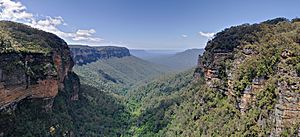
Destinations
Hervey Bay is a popular tourist town with ample opportunities for whale watching , although there are plenty of other places along the Australian coastline to see whales.
Fraser Island is considered to be the largest sand island in the world at 1840 km 2 . It is also Queensland's largest island and has been inhabited by humans for as much as 5,000 years. The island has rainforests, eucalyptus woodland, mangrove forests, wallum and peat swamps, sand dunes and coastal heaths. The island can be reached by a ferry from River Heads (South of Hervey Bay) to Kingfisher Bay and Wanggoolba Creek or Inskip Point to the north of Rainbow Beach to Hook Point, or by chartered flight from Maroochydore Airport.
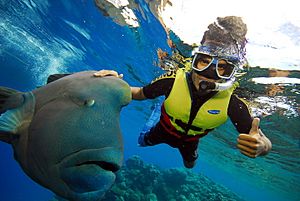
The Great Barrier Reef attracts up to two million visitors every year. Careful management, which includes permits for camping and all commercial marine tourism within the Great Barrier Reef Marine Park , has so far ensured that tourists have a very minimal impact on the reef. Uluru , Kakadu National Park and Fraser Island are major natural attractions. Uluru won the 2013 Qantas Australian Tourism Awards and was named Australia's best major tourist attraction.
In December 2013, Greg Hunt, the Australian environment minister, approved a plan for dredging to create three shipping terminals as part of the construction of a coal port. According to corresponding approval documents, the process will create around 3 million cubic metres of dredged seabed that will be dumped within the Great Barrier Reef marine park area.
Another attraction that appeals to many tourists is the Sydney Opera House . Shopping and casinos are a major drawcard for wealthy Chinese visitors. Wine, indigenous culture and nature tourism also generate travel in Australia.
Major events attract a large number of tourists. The Sydney Gay and Lesbian Mardi Gras is an annual event that attractions thousands of international tourists.
The 2000 Sydney Olympics resulted in significant inbound and domestic tourism to Sydney . During the games, Sydney hosted 362,000 domestic and 110,000 international visitors. In addition, up to 4 billion people watched the games worldwide. The 2003 Rugby World Cup attracted 65,000 international visitors to Australia. Schoolies Week is an annual celebration of Year 12 school leavers in late November, many of whom travel to the Gold Coast , where in 2011 they were expected to boost the economy by $60 million.
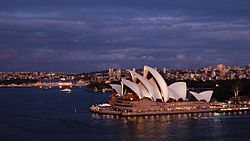
Major Australian icons for tourists to visit include:
- Great Ocean Road
- Barossa Valley
- The Kimberley
- Kangaroo Island
- Tasmanian Wilderness
- Australian Alps
- Flinders Ranges
- Fraser Island
- Sydney Harbour Bridge
- Coober Pedy
- Phillip Island
- Melbourne Cricket Ground
- Blue Mountains
- Namadgi National Park
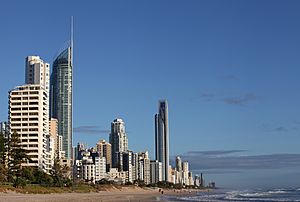
- List of World Heritage Sites in Australia
- This page was last modified on 13 March 2024, at 04:07. Suggest an edit .

Australia Recommends 2024

Come and Say G'day

G'day, the short film

Discover your Australia

Travel videos

Deals and offers

Australian Capital Territory

New South Wales

Northern Territory

South Australia

Western Australia

External Territories

The Whitsundays

Mornington Peninsula

Port Douglas

Ningaloo Reef

Airlie Beach

Kangaroo Island

Rottnest Island

Hamilton Island

Lord Howe Island

Tiwi Islands

Phillip Island

Bruny Island

Margaret River

Barossa Valley

The Grampians

Hunter Valley

McLaren Vale

Glass House Mountains

Alice Springs

Uluru and Kata Tjuta

The Kimberley

Flinders Ranges

Kakadu National Park

Eyre Peninsula

Karijini National Park

Great Barrier Reef

Blue Mountains

Daintree Rainforest

Great Ocean Road

Purnululu National Park

Cradle Mountain-Lake St Clair National Park

Litchfield National Park

Aboriginal experiences

Arts and culture

Festivals and events

- Food and drink

Adventure and sports

Walks and hikes

Road trips and drives

Beaches and islands

Nature and national parks

Eco-friendly travel

Health and wellness

Family travel

Family destinations

Family road trips

- Backpacking

Work and holiday

Beginner's guide

Accessible travel

Planning tips

Trip planner

Australian budget guide

Itinerary planner

Find a travel agent

Find accommodation

Find transport

Visitor information centres
Deals and travel packages

Visa and entry requirements FAQ

Customs and biosecurity

Working Holiday Maker visas

Facts about Australia

Experiences that will make you feel like an Aussie

People and culture

Health and safety FAQ

Cities, states & territories

Iconic places and attractions

When is the best time to visit Australia?

Seasonal travel

Events and festivals

School holidays

Public holidays
How to get to Australia's most iconic cities

How long do I need for my trip to Australia?

How to travel around Australia

Guide to driving in Australia

How to hire a car or campervan

How to plan a family road trip

How to plan an outback road trip

Come and say G'day

Uluru, Northern Territory © Tourism Australia

What's On

Trips and itineraries

15 places to Come and Say G'day in 2024
Unique experiences.

Things to do
Explore Australia's natural landmarks

Swim with Australian marine life

Australia's unique dining experiences

Is the Cape to Cape Walk Australia's most luxurious hike?
Top places to go.

The best adventure holiday destinations

The best ski resorts in Australia

Brisbane / Meeanjin

Rose Byrne’s top 5 Australian destinations

The best Australian cruise destinations

Australia's best train journeys

Sydney / Warrane

The Gold Coast

Darwin / Gulumerrdgen

Hobart / nipaluna

Perth / Boorloo

Adelaide / Tarntanya

Melbourne / Narrm

The best beaches in Australia

Perth's best beaches

The Sunshine Coast

Esperance / Kepa Kurl

Ningaloo / Nyinggulu

Sydney's secret beaches

Private island vacations in Australia

7 luxurious island resorts on the Great Barrier Reef

Moreton Island / Mulgumpin

Heron Island

Rottnest Island / Wadjemup

Romantic getaways in Australia's countryside

6 pubs worth travelling to according to the critics

High Country and King Valley

Australia's best glamping experiences

Australia's best wine regions

Australia's best outback stations and safaris

Mungo National Park

Arnhem Land

Kings Canyon

Broome / Rubibi

Where to spot kangaroos in the wild

Australia's pink lakes

Australia's most beautiful islands

Where to see the Southern Lights

How to have a low-impact holiday on the Great Barrier Reef
Top things to do in australia.

Australia’s most unique sporting experiences

Australia’s best girls’ getaways

Accessible ways to experience Australia’s icons

The best places to see wild koalas

Australia’s seasonal nature experiences

Australia’s best natural waterholes

How to forage a feast in Australia

7 family adventure holidays in Australia

A guide to Australia’s incredible World Heritage sites

7 places to ground yourself in nature

How to experience Australia’s wildlife responsibly

Top walks and hiking tracks in Tasmania

A guide to Australia’s rainforests

Incredible Aboriginal Tours and Experiences

Australia's coolest neighbourhoods

Australia's biggest parties and celebrations

Cultural Attractions of Australia

Where to Buy Aboriginal and Torres Strait Islander Art

A guide to Australian cuisine

The best outback road trips in Australia

9 Adrenaline rushes found only in Australia

10 Mountain bike trails to shred in Tasmania

Great Fishing Adventures of Australia

Road trips and self-drive journeys

Australia's best scenic flights

Guide to family holidays in Australia

Fun ways to experience Australia's snow season

Incredible Indigenous experiences for families

7 meaningful family holidays to start planning now

Gold Coast theme parks

Australia’s best family-friendly beaches

Life-changing childhood experiences in Australia

Tiny Houses: recharge and reconnect with nature

9 of the most relaxing holiday destinations in Australia

Luxury experiences found only in Australia

Australian backpacker bucket list

Tips for solo travellers

Best places to live in Australia for working holiday makers

A handy guide to the Australian lifestyle

Things to know about travelling Australia on a budget

How to plan a working holiday

Australia’s best events

Major Events Calendar

12 Australian sports events worth travelling for

Australia’s sustainable food and drink experiences

The 10 best modern Australian restaurants

Australia's trendiest food and drink experiences

Australia's best breweries

Australia’s native ingredients and where to try them

Typical Aussie foods to try

Australia's bucket list food experiences
Ready to plan a trip.

Australian visa and entry requirements FAQs

Accessible travel around Australia
Acknowledgement of Country

We acknowledge the Traditional Aboriginal and Torres Strait Islander Owners of the land, sea and waters of the Australian continent, and recognise their custodianship of culture and Country for over 60,000 years.
- New Zealand (English)
- United States (English)
- Canada (English)
- United Kingdom (English)
- India (English)
- Malaysia (English)
- Singapore (English)
- Indonesia (Bahasa Indonesia)
- Deutschland (Deutsch)
- France (Français)
- Italia (Italiano)
- 中国大陆 (简体中文)
*Product Disclaimer: Tourism Australia is not the owner, operator, advertiser or promoter of the listed products and services. Information on listed products and services, including Covid-safe accreditations, are provided by the third-party operator on their website or as published on Australian Tourism Data Warehouse where applicable. Rates are indicative based on the minimum and maximum available prices of products and services. Please visit the operator’s website for further information. All prices quoted are in Australian dollars (AUD). Tourism Australia makes no representations whatsoever about any other websites which you may access through its websites such as australia.com. Some websites which are linked to the Tourism Australia website are independent from Tourism Australia and are not under the control of Tourism Australia. Tourism Australia does not endorse or accept any responsibility for the use of websites which are owned or operated by third parties and makes no representation or warranty in relation to the standard, class or fitness for purpose of any services, nor does it endorse or in any respect warrant any products or services by virtue of any information, material or content linked from or to this site.
We use cookies on this site to enhance your user experience. Find out more . By clicking any link on this page you are giving your consent for us to set cookies.

IMAGES
VIDEO
COMMENTS
Read More: Top-Rated Tourist Attractions in Australia's Northern Territory; 11. Great Ocean Road, Victoria Great Ocean Road . Great Ocean Road is one of the world's top scenic drives. Built to provide employment during the Depression, the road stretches for 300 kilometers along Australia's rugged southeast coast, winding along plunging sea cliffs.
Due to Australia's size, there are many different climates and weather patterns, which means Australia is the perfect place to visit all year round! In the Southern Hemisphere, the seasons are opposite to those in the Northern Hemisphere. So, when things get colder up north, come Down Under to enjoy an endless summer.
Coffs Harbour is home to the iconic Big Banana. 14. The Big Merino. Built in 1985, The Big Merino is a monument to the Goulburn region's fine wool industry. And 'Rambo' is a particularly big, big thing, weighing in at 100 tonnes and measuring 15.2 metres high and 18 metres long.
9. Feel ancient Australia in Kakadu National Park, Northern Territory. Kakadu is the perfect kind of middle of nowhere. It's the wild Australia that you might have already daydreamed about. Waterfalls bloom from rock, prehistoric crocodiles thrash the wetlands, lorikeets sing, and Aboriginal guides bring ancient rock art to life.
This huge red monolith is a World Heritage site, and one of Australia's most emblematic landmarks. Uluru is literally the heart of Australia, and the ochre soil is as dramatic as the massive sandstone rock itself. You can cycle, walk, ride a camel or take a helicopter around the nearly 10-kilometre (6.2-mile) circumference, then dine under the stars on a sand dune - your meal featuring ...
1. Great Barrier Reef. It may be Australia's most famous attraction but with good reason! The Great Barrier Reef is one of the seven wonders of the natural world. Stretching 3000 km across the coast of Queensland, the Great Barrier Reef is a diver's dream.
Explore epic national parks. Whether you want to hike through canyons or fly over waterfalls, Australia's national parks are the place to do it. There's always something to discover, from cool swimming holes to Aboriginal rock art. Here are Australia's best national parks.
There are jaw-dropping vistas at every turn on this winding stretch of road, including the 12 Apostles, Loch And Gorge, London Arch, Bells Beach and Erskine Falls. Make sure to stop for a scallop ...
3. Sydney, New South Wales. Australia's best city for outdoor activities. Sydney is rightfully considered one of the world's most beautiful cities, where the natural splendor of cityside beaches collides with incredible urban architecture, including the Opera House.
Freycinet National Park: Visit Freycinet to see Wineglass Bay and take in the stunning coastal scenery. Port Arthur: Explore the historic Port Arthur site and learn about Australia's convict past. MONA: Visit the Museum of Old and New Art (MONA) for a unique and thought-provoking art experience.
Another of the major landmarks in Australia that you must visit is the Parliament House in the capital of Canberra. Opened in 1988 by Queen Elizabeth II, the Australian Parliament House is where the nation's most important meetings are held. Parliament House has around 4,500 rooms, and the building resembles two boomerangs and has an 81-metre ...
21. Rottnest Island. Rottnest Island, often affectionately referred to as 'Rotto', is a captivating island paradise in the Indian Ocean, just off the coast of Perth. Famous for its stunning beaches, crystal-clear waters, and unique wildlife, Rottnest Island is a popular destination for both locals and tourists.
The Kuranda Scenic Railway is among the best tourist attractions in Australia. 26. Fraser Island, the World's Largest Sand Island. Fraser Island is located off the south-eastern coast of Queensland and is the world's largest sand island. The island is enriched with a diverse range of wildlife, including dingoes, turtles, and whales.
At the time it represented 3.1% of Australia's GDP contributing A$60.8 billion to the national economy. [4] In the calendar year up to December 2019, there were 8.7 million international visitors in Australia. [5] Tourism employed 666,000 people in Australia in 2018-19, 1 in 21 jobs across the workforce. [4]
6. The Great Barrier Reef is vulnerable - but it's not "dead". The Great Barrier Reef - arguably Australia's most iconic attraction - made headlines in 2016, when reports claimed it was "dead" following coral bleaching events. There's no question that climate change has had an adverse effect on the Great Barrier Reef.
The Great Barrier Reef is the world's largest coral reef system and home to amazingly diverse marine life. Above the water, the reef is dotted with picturesque tropical islands and some of the world's most beautiful sun-soaked beaches. You can visit them all on an island escape or from exciting coastal gateways like Cairns and the Whitsundays.
Learn More. Discover 578 hidden attractions, cool sights, and unusual things to do in Australia from Lake Hillier to Wendy's Secret Garden.
22- The Big Banana. Set in the grounds of a banana plantation, the Big Banana is a landmark in Australia in sunny Coffs Harbour on the New South Wales coast. The 13m attraction designed in the shape of a banana was built in 1964 and is an eye-catching thing you can't miss as you drive through Coffs Harbour.
In 2019, Australia welcomed approximately 9.4 million international visitors, marking a 3.6% increase compared to the previous year. 2. Tourism expenditure in Australia reached AUD 65.6 billion in 2019, with an average spend per trip of AUD 4,254 by international visitors. 3.
Australia's most unique destinations. The Great Ocean Road, Sydney Opera House and The Great Barrier Reef aren't the only destinations in Australia that need to be on your bucket list. By Bonnie Jackson. Australia is well-known for our unique wildlife.
Nonetheless, the country's tourism sector GDP and international visitor market declined significantly in 2020 and 2021, with international arrivals sinking to an all-time low of 140 thousand ...
In the calendar year up to December 2019, there were 8.7 million international visitors in Australia. Tourism employed 666,000 people in Australia in 2018-19, 1 in 21 jobs across the workforce. About 48% of people employed in tourism were full-time and 54% female Tourism also contributed 8.2% of Australia's total export earnings in 2018-19.
*Product Disclaimer: Tourism Australia is not the owner, operator, advertiser or promoter of the listed products and services.Information on listed products and services, including Covid-safe accreditations, are provided by the third-party operator on their website or as published on Australian Tourism Data Warehouse where applicable.